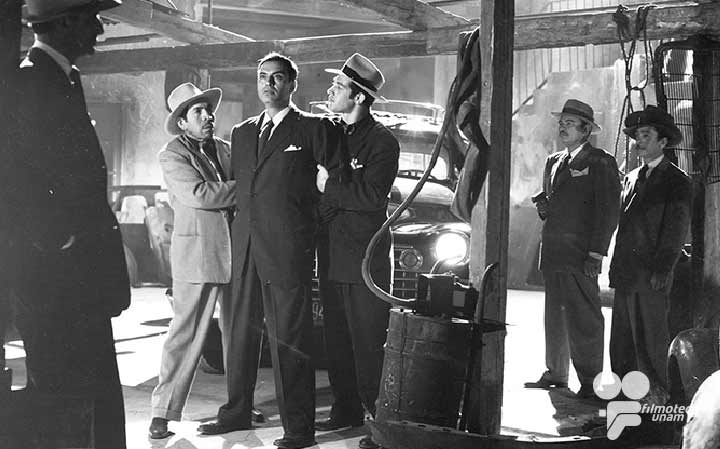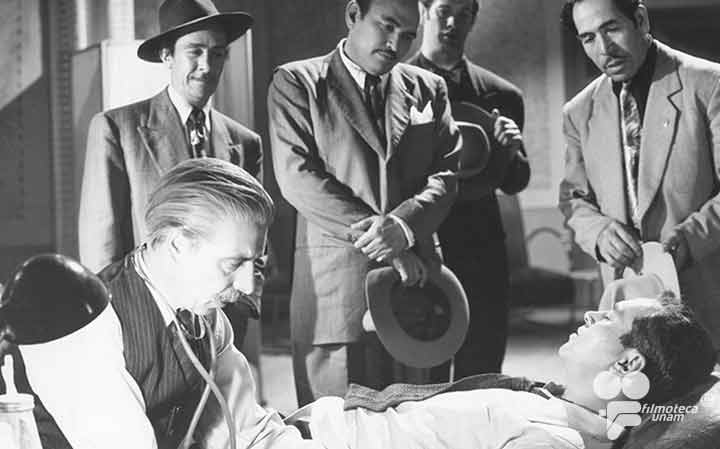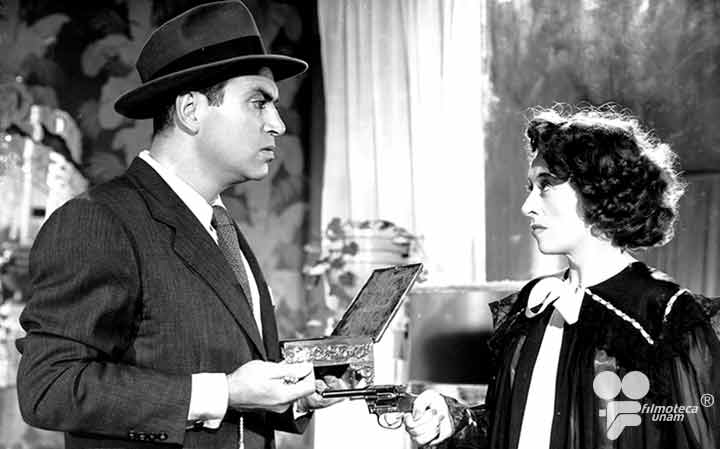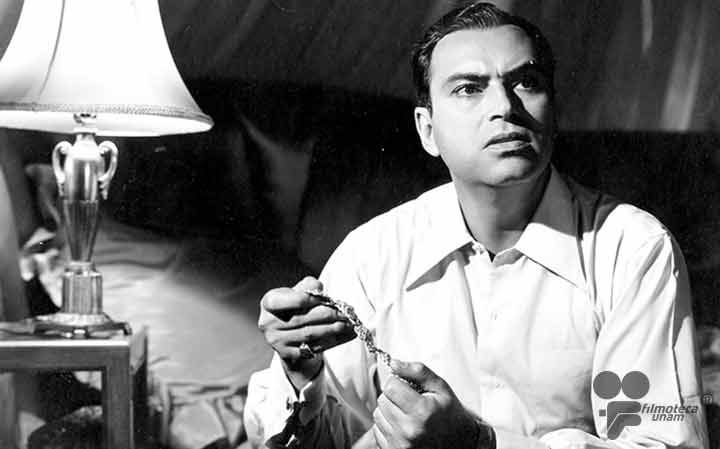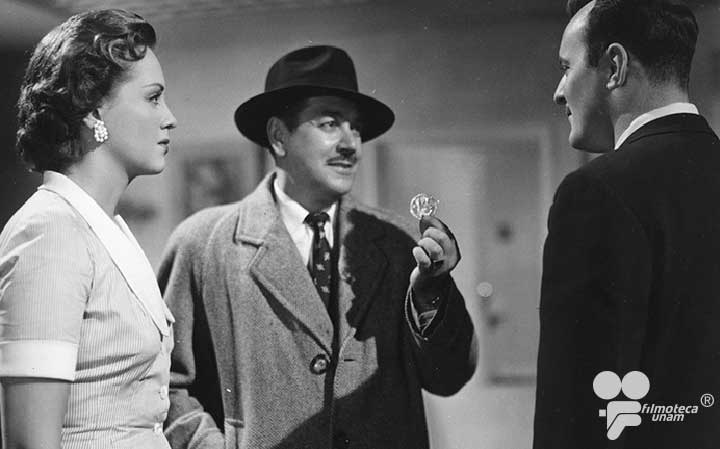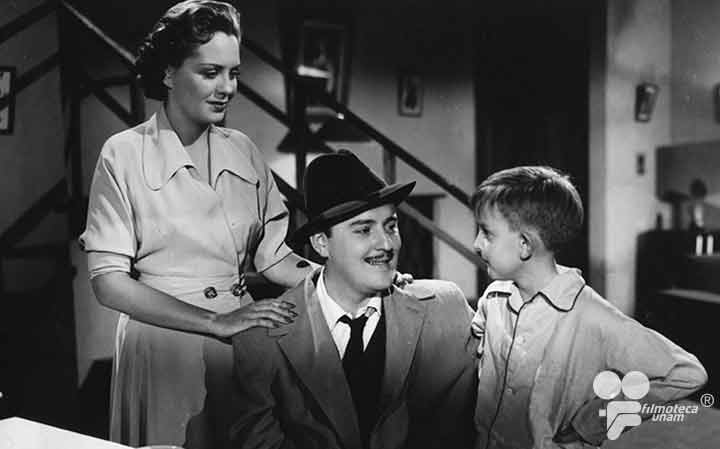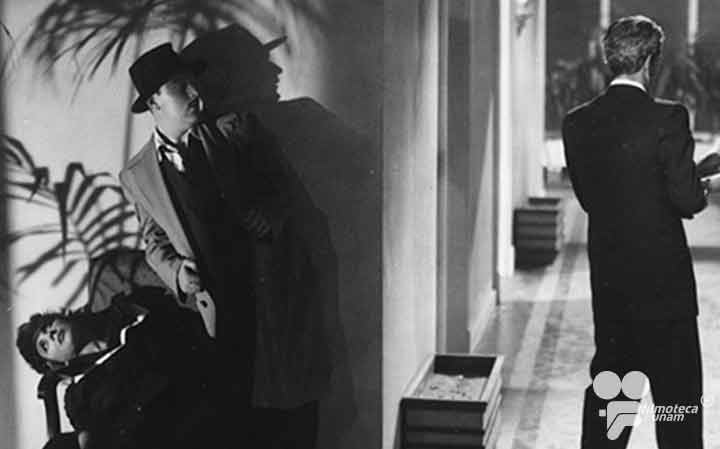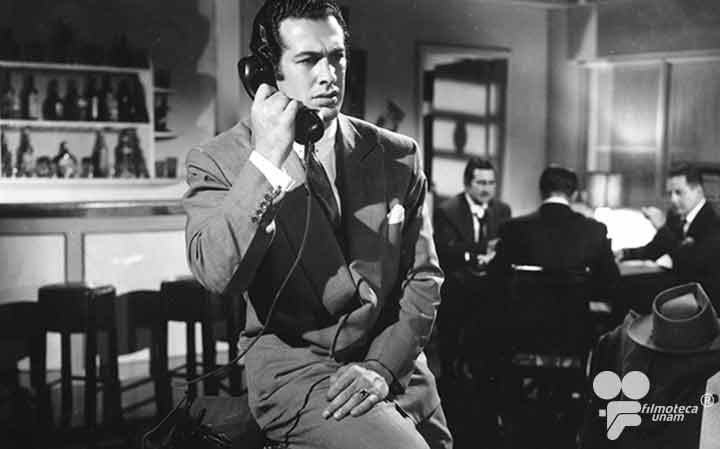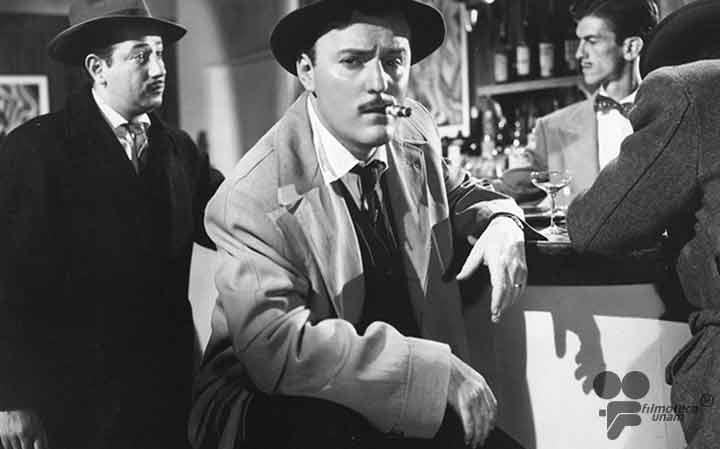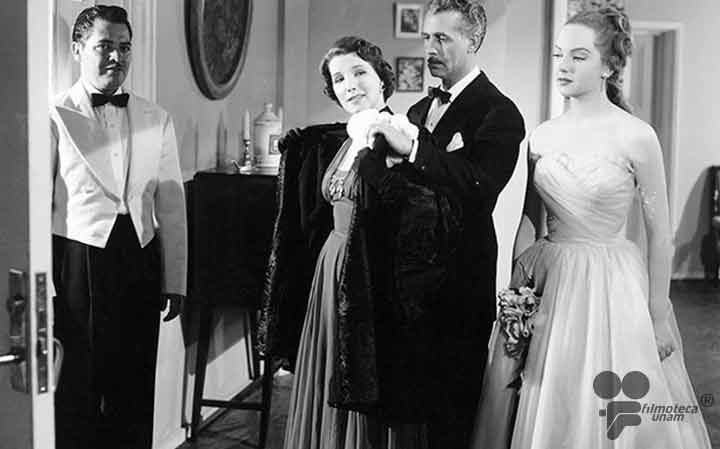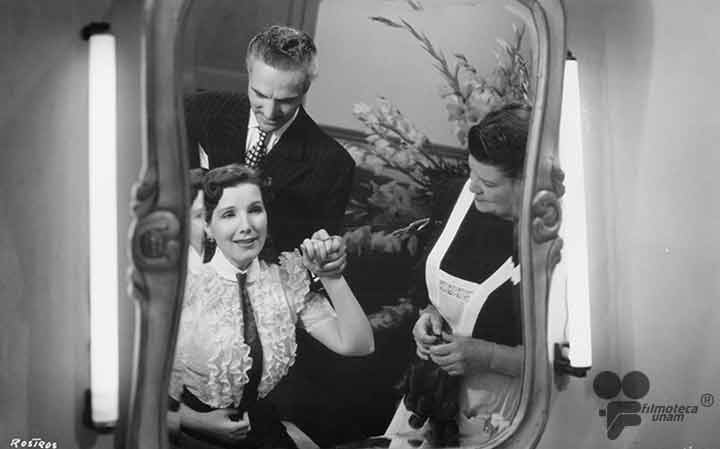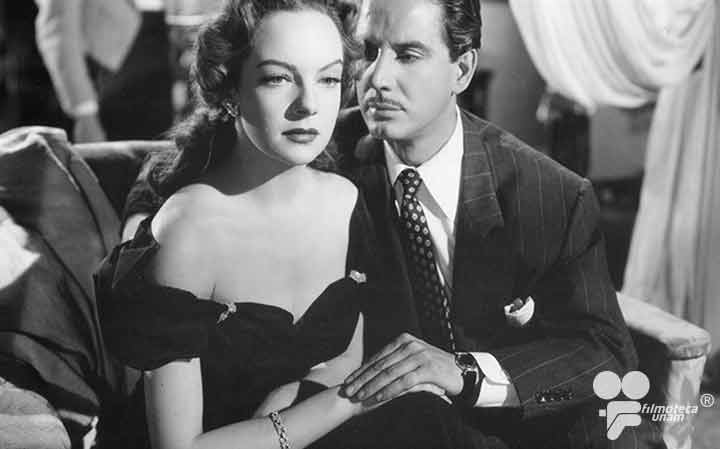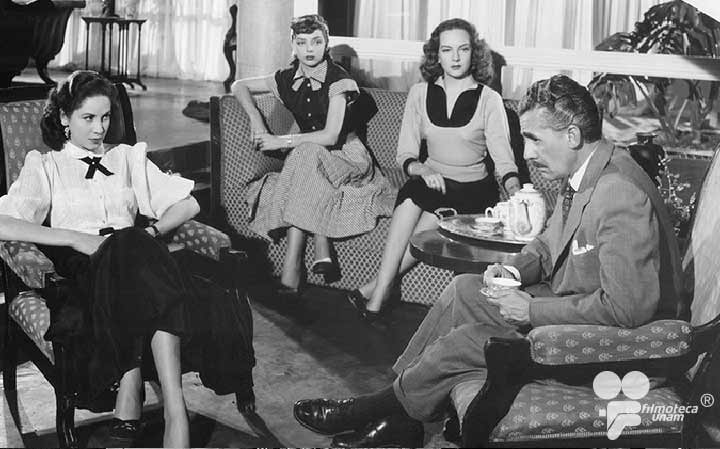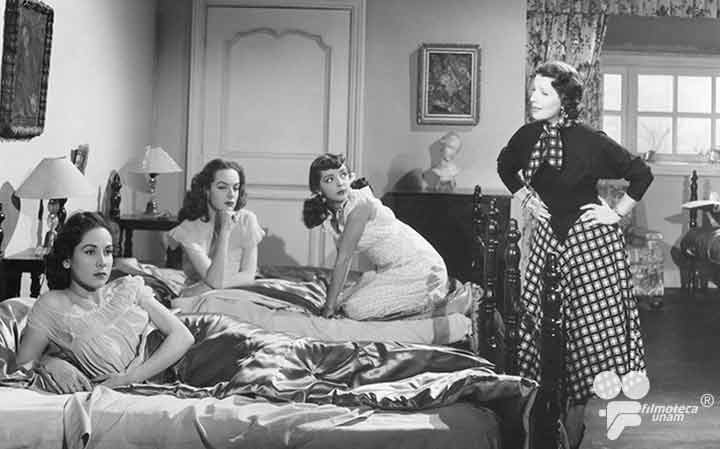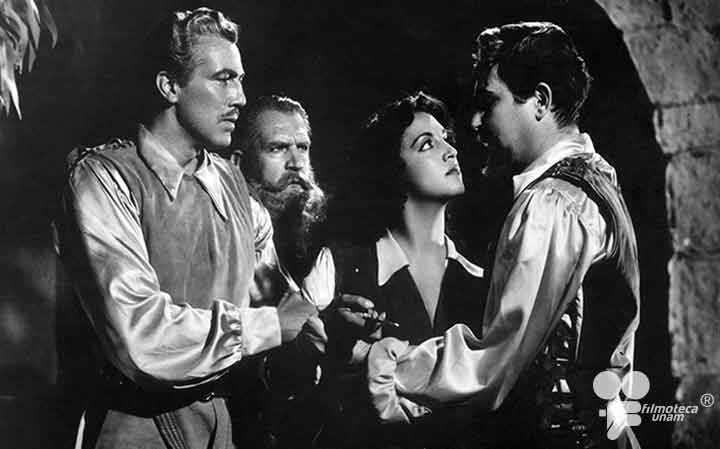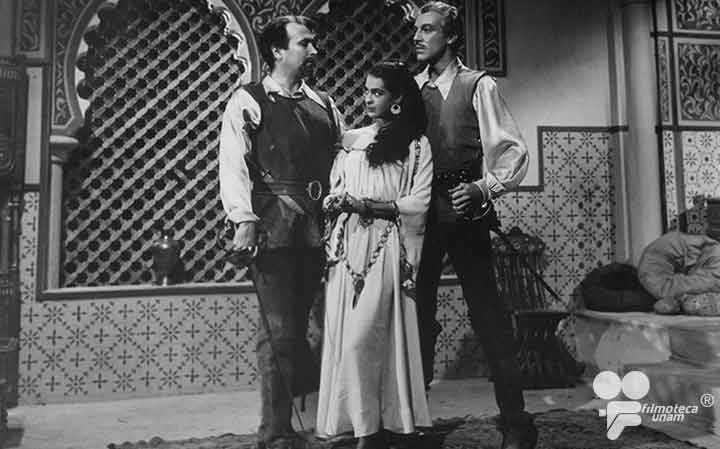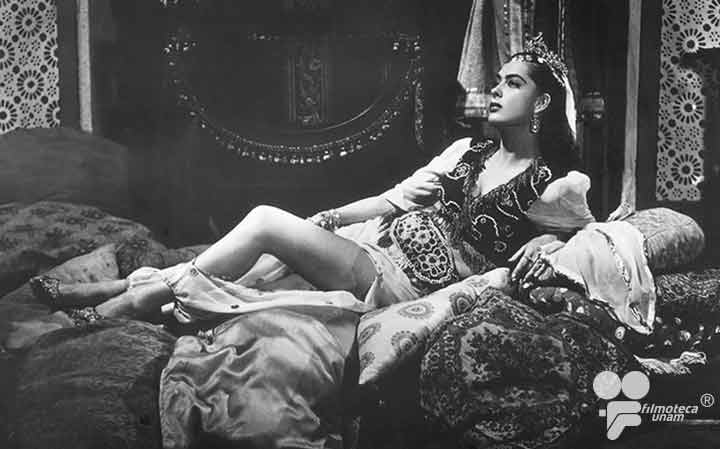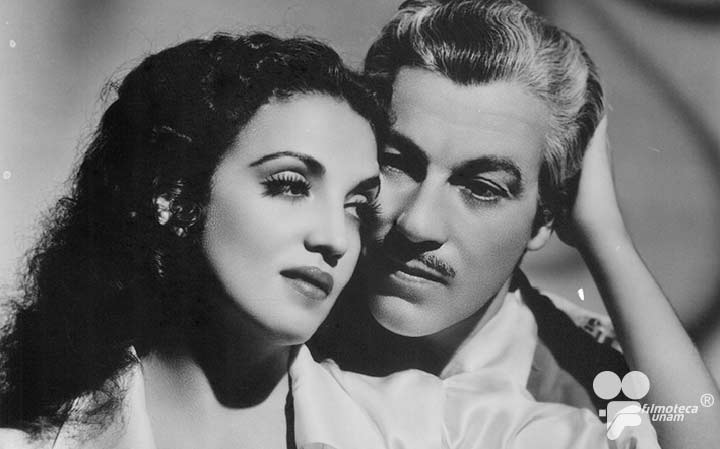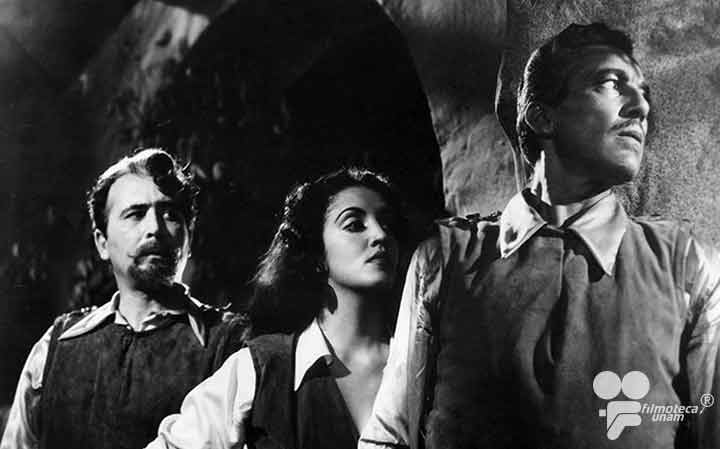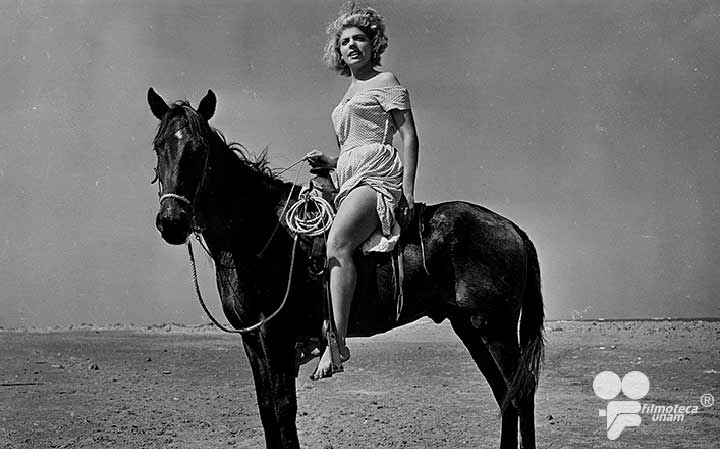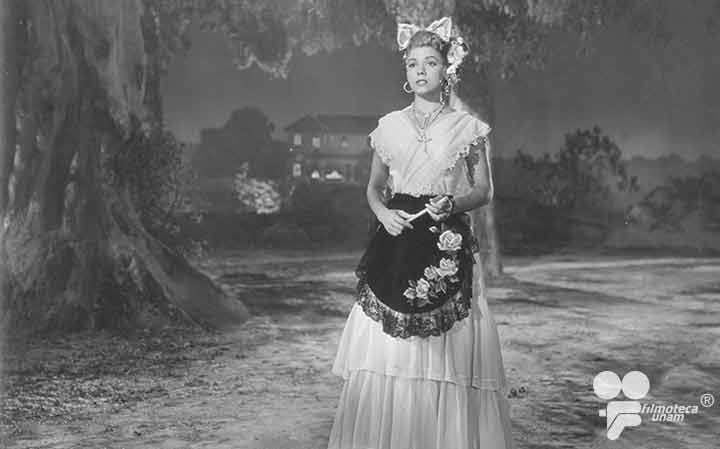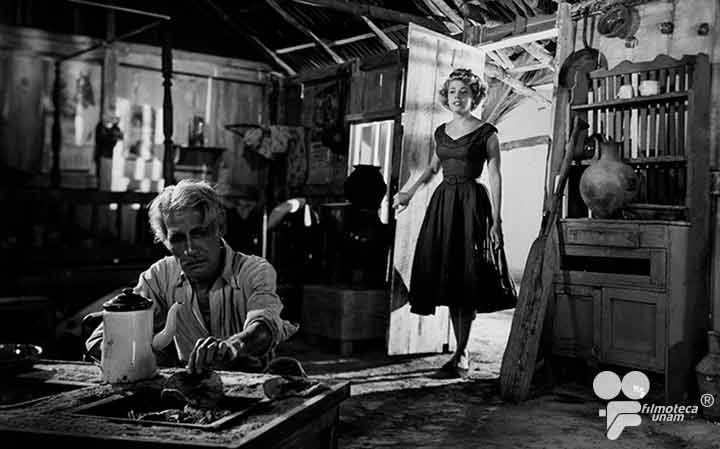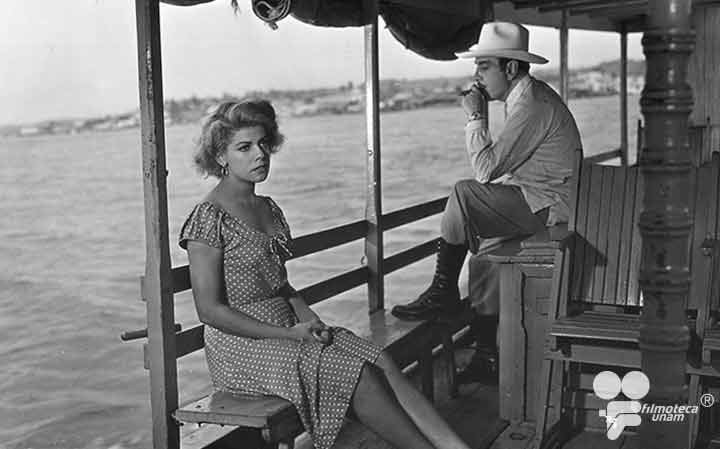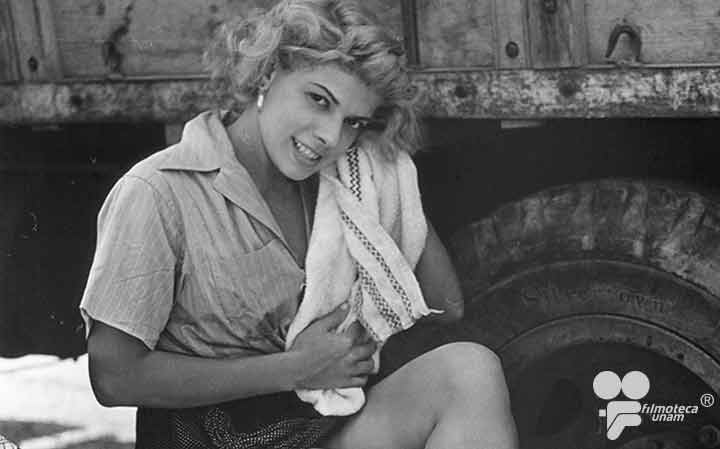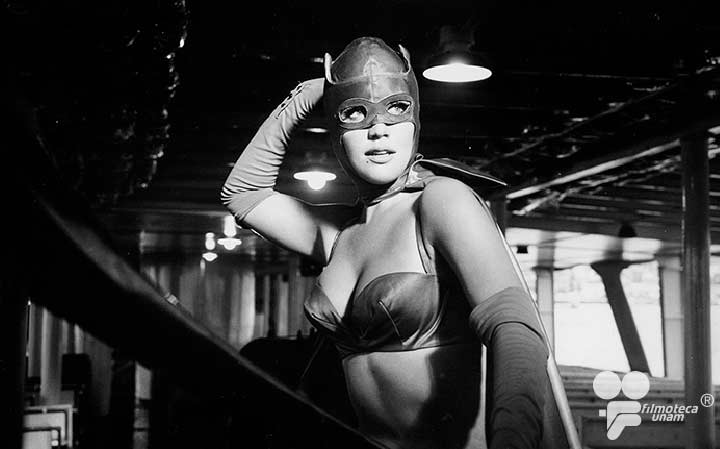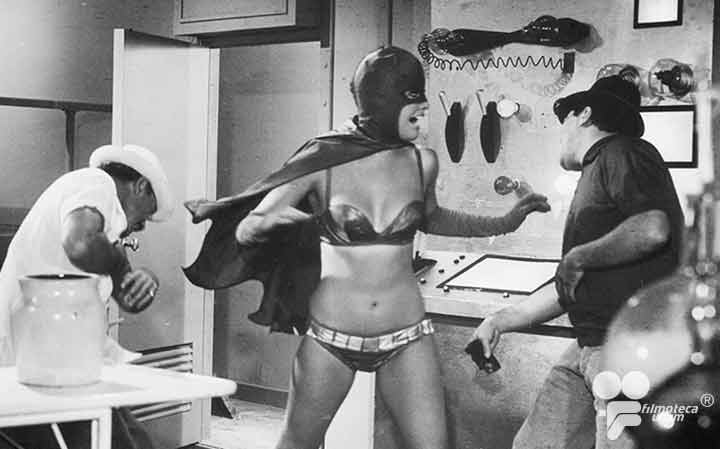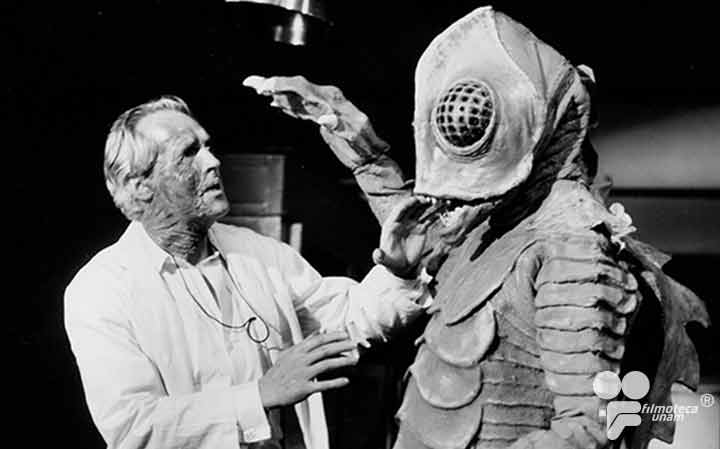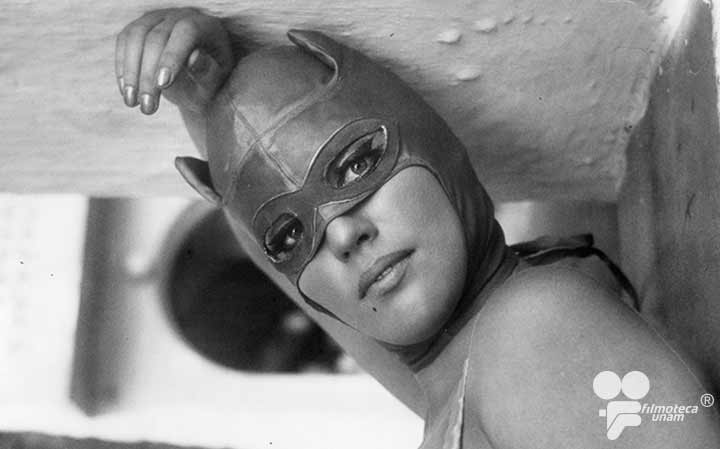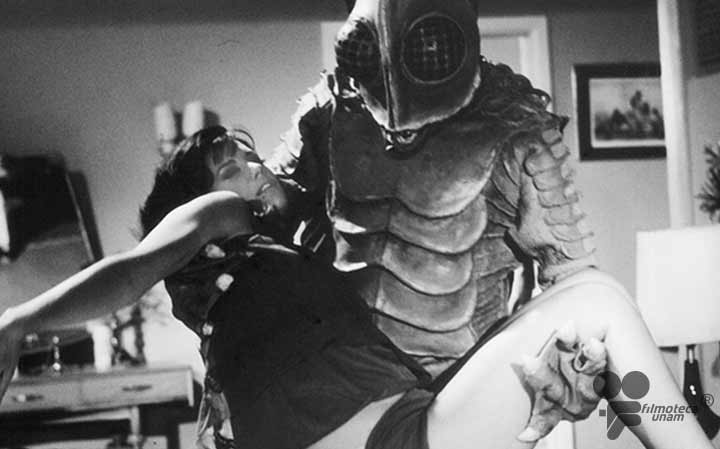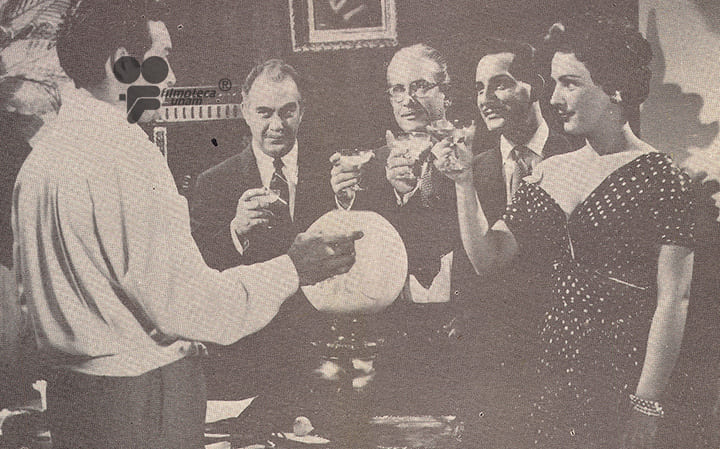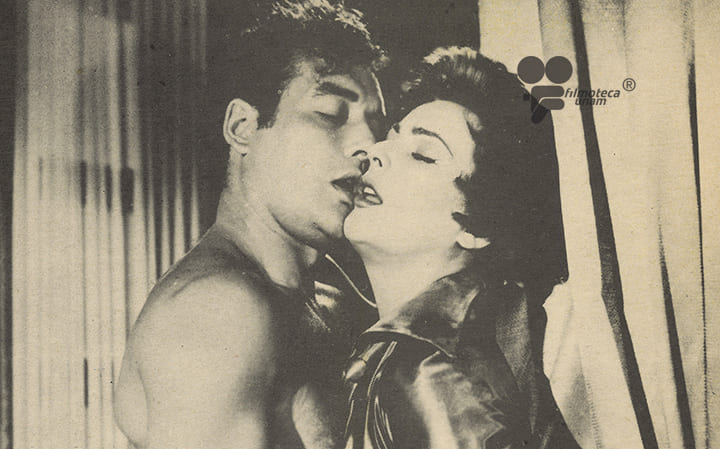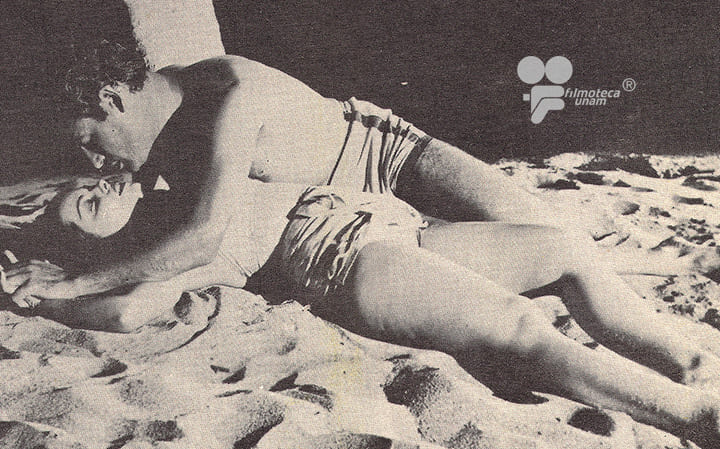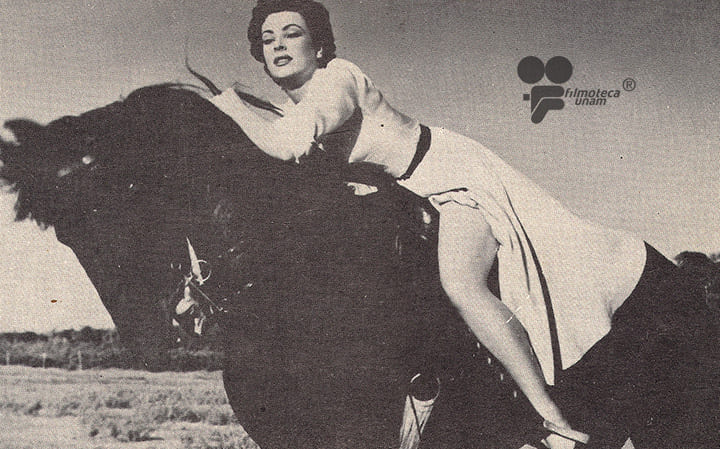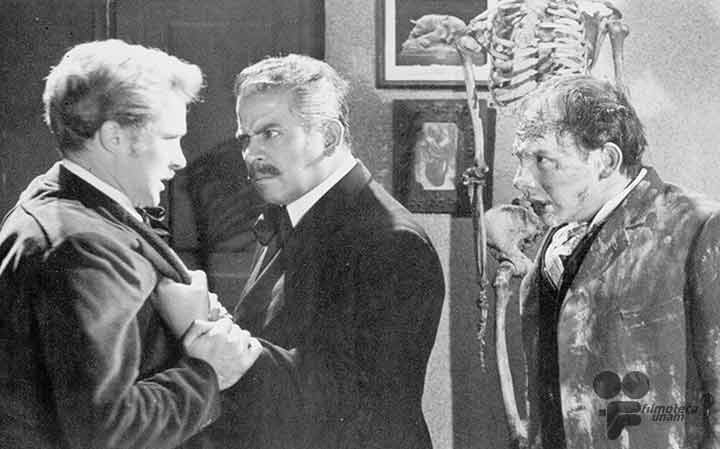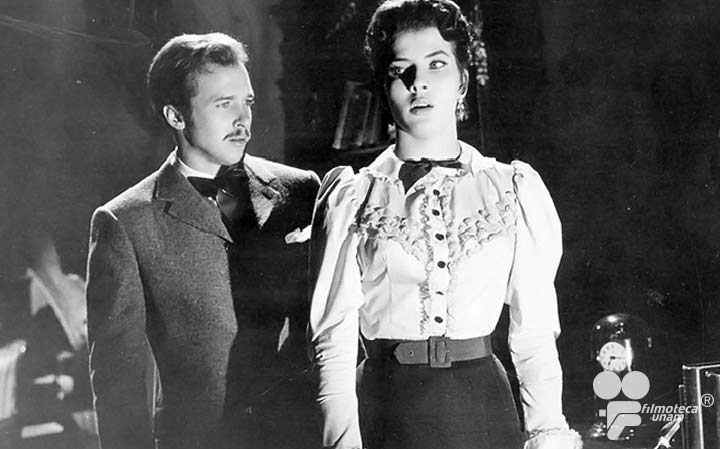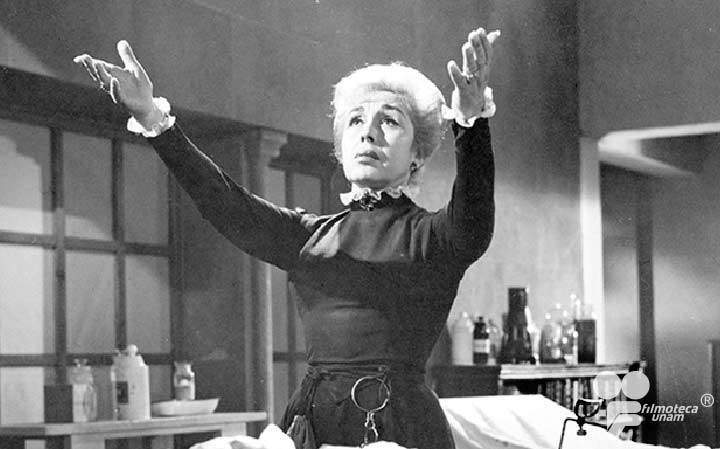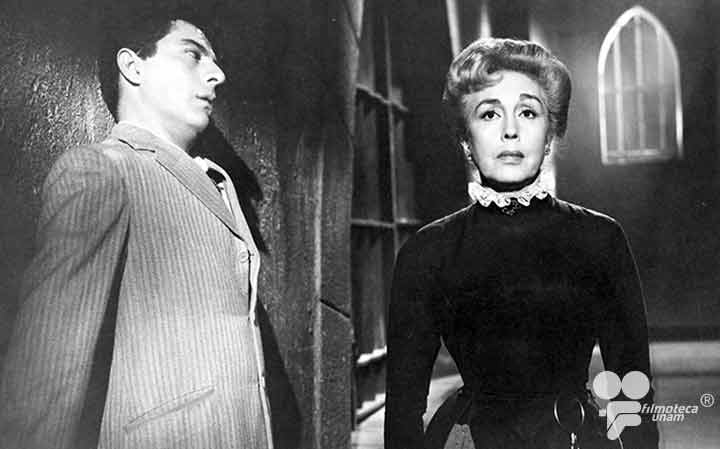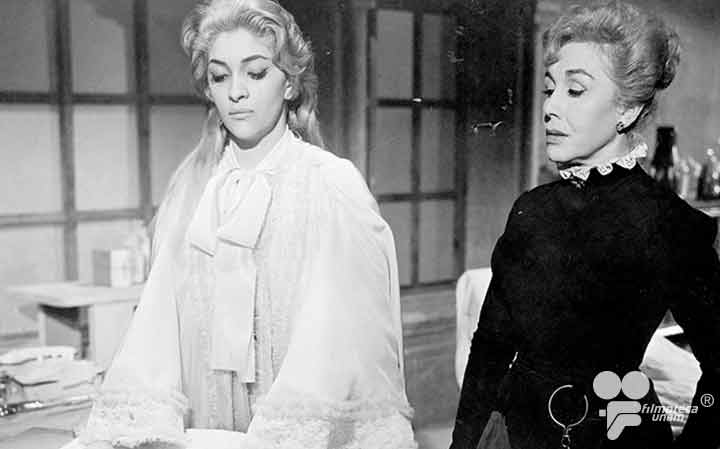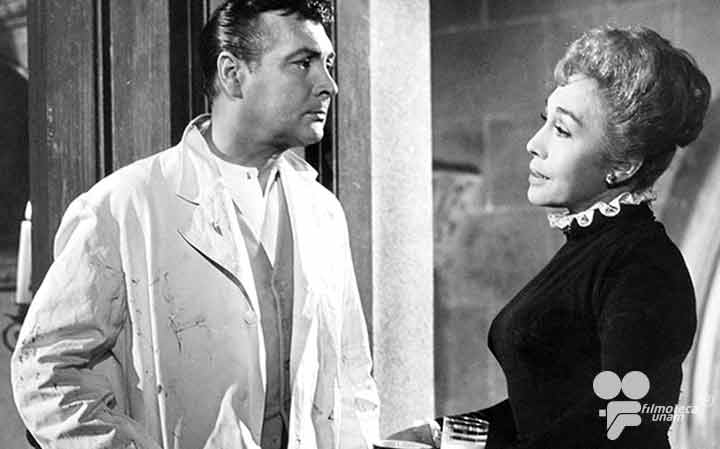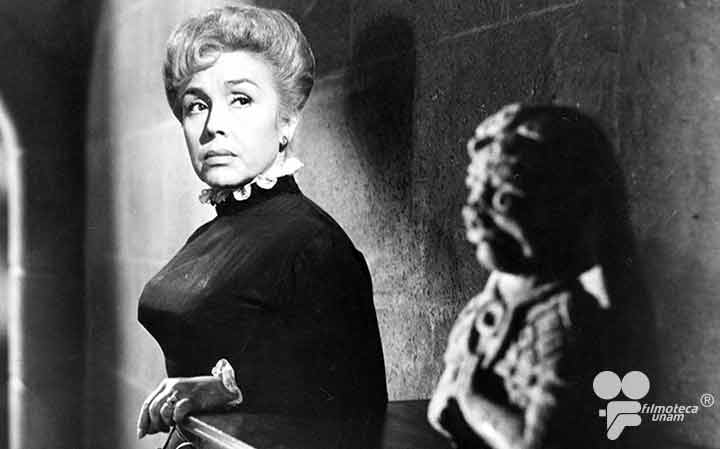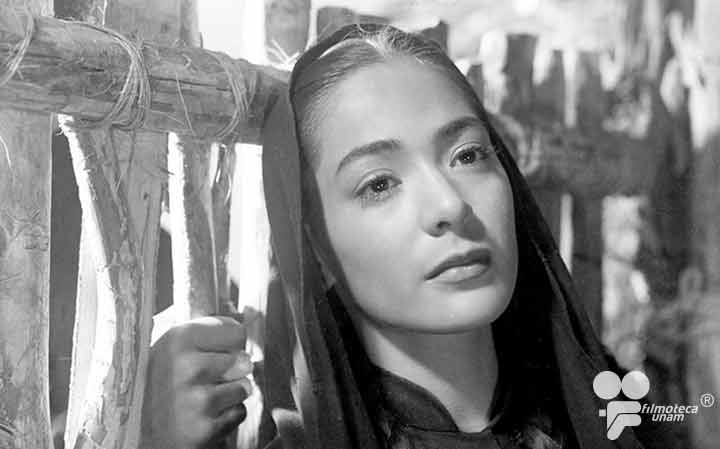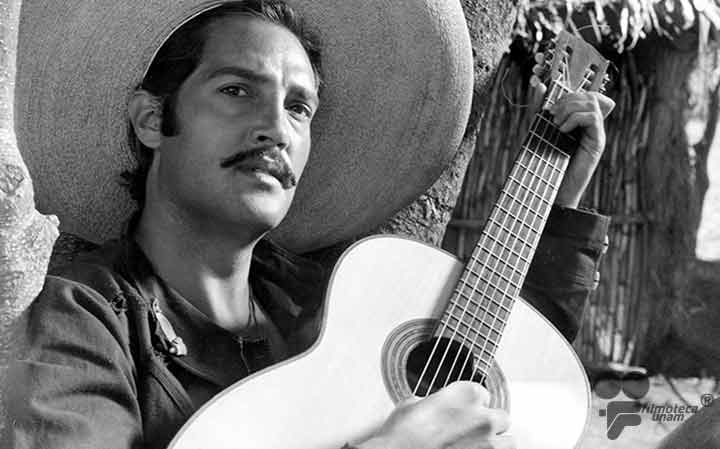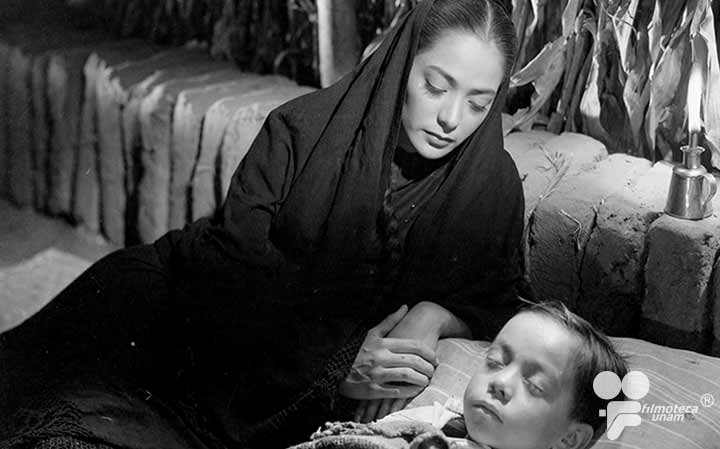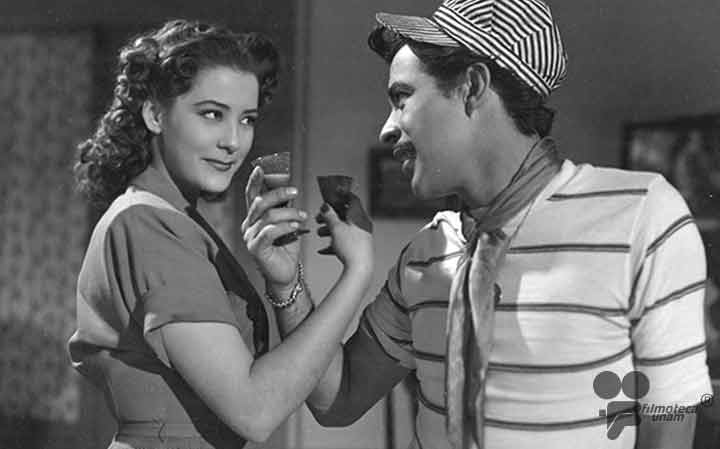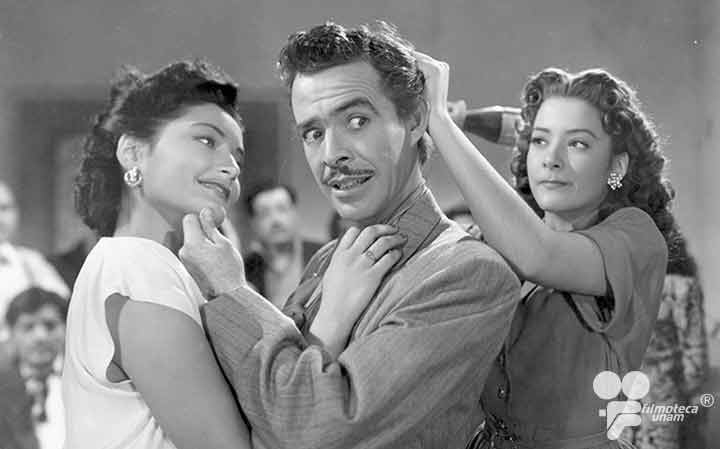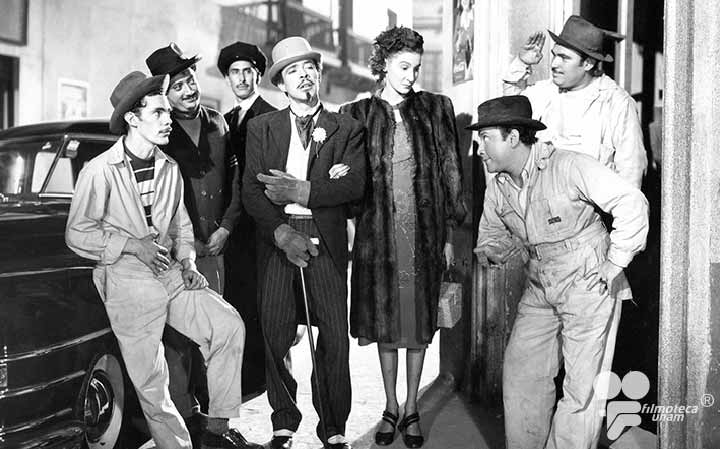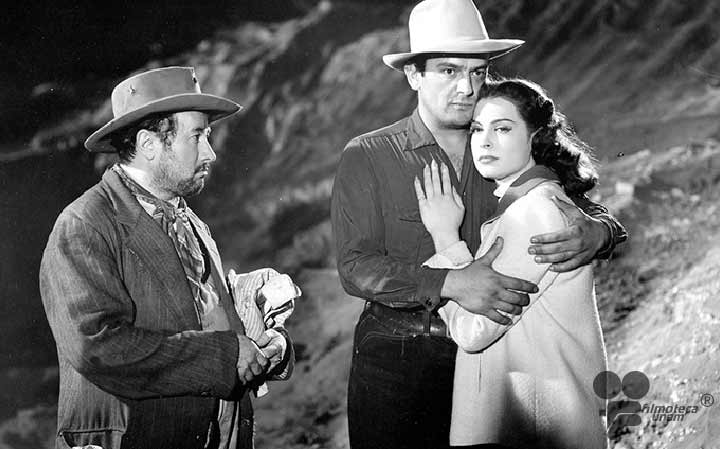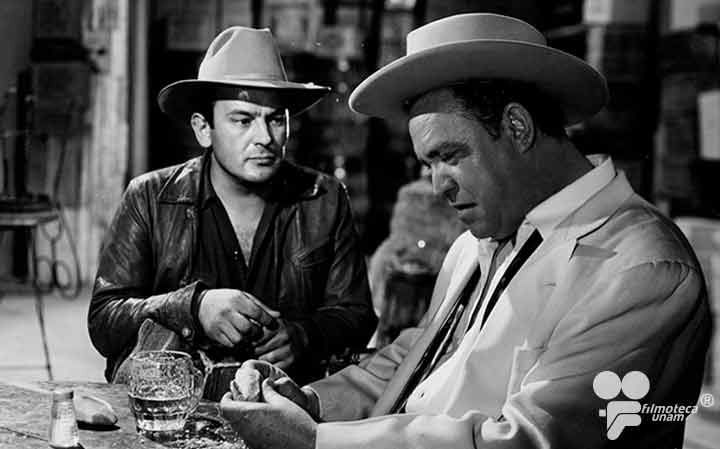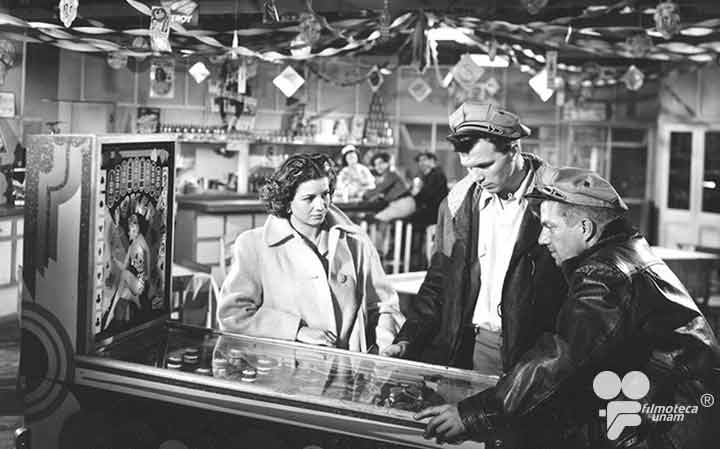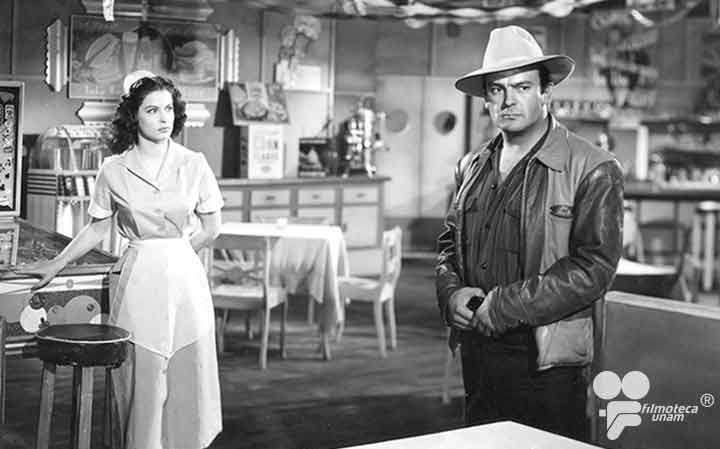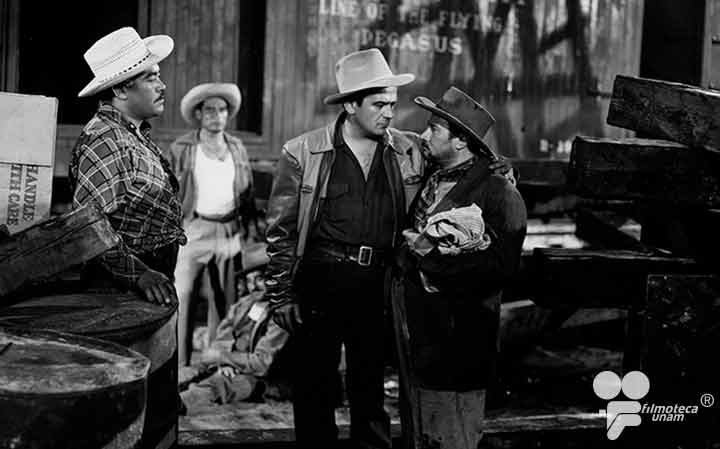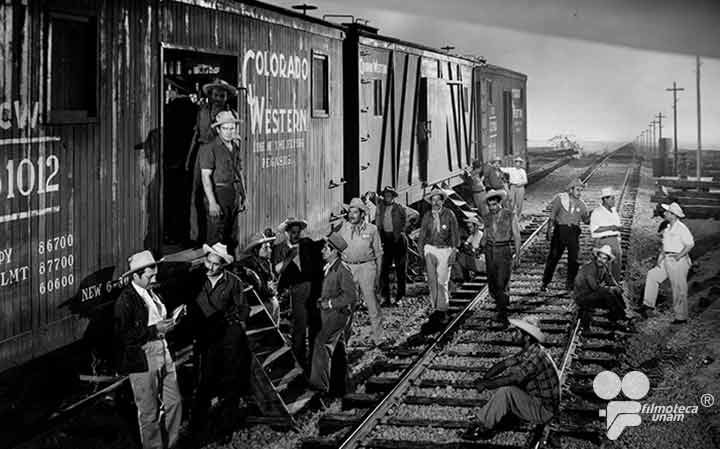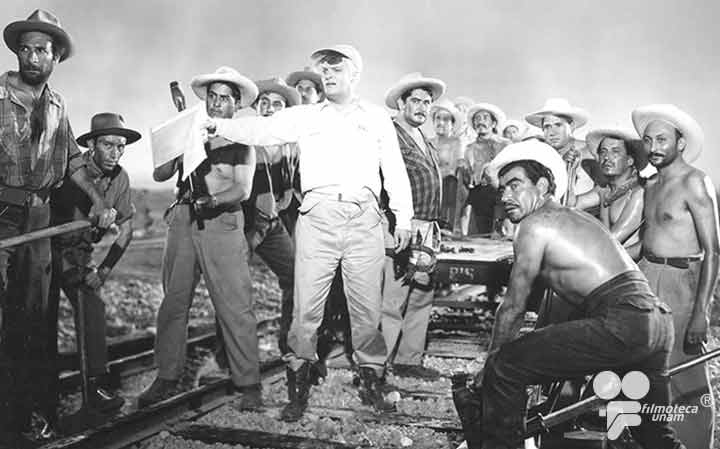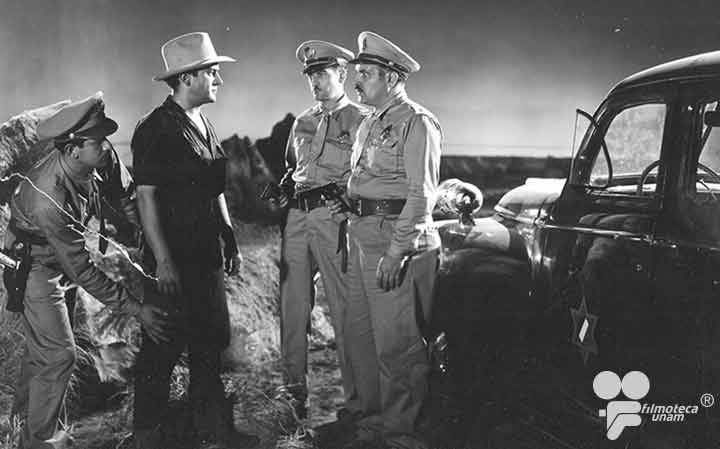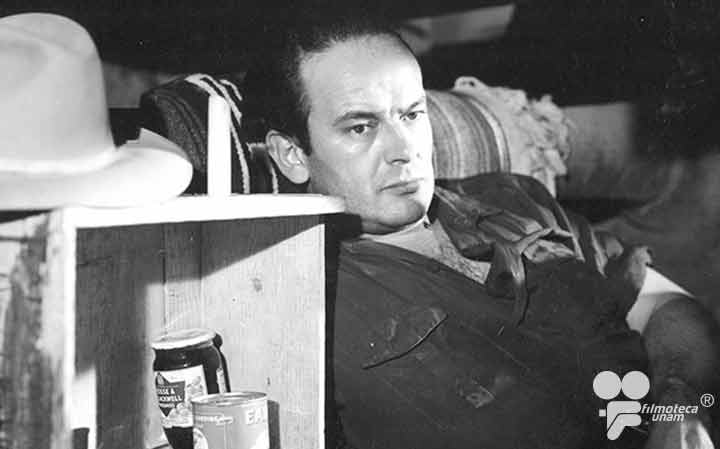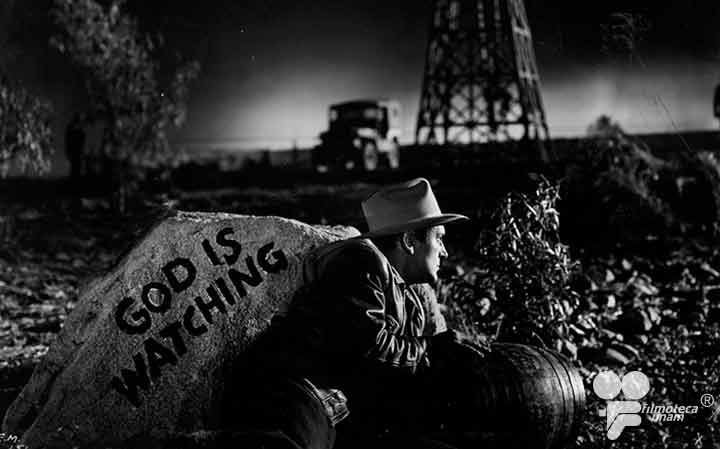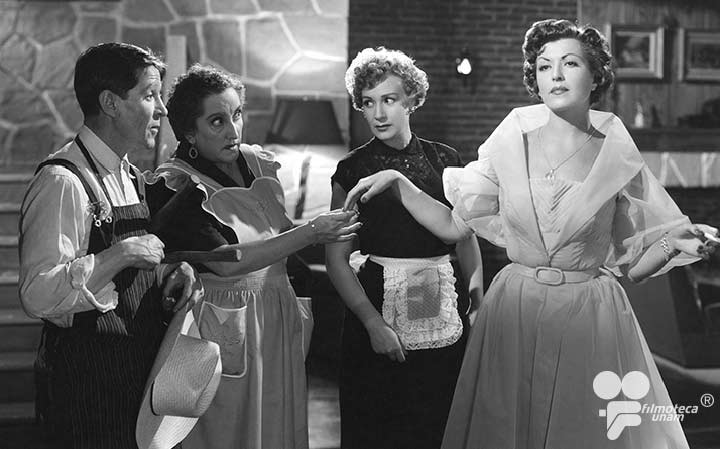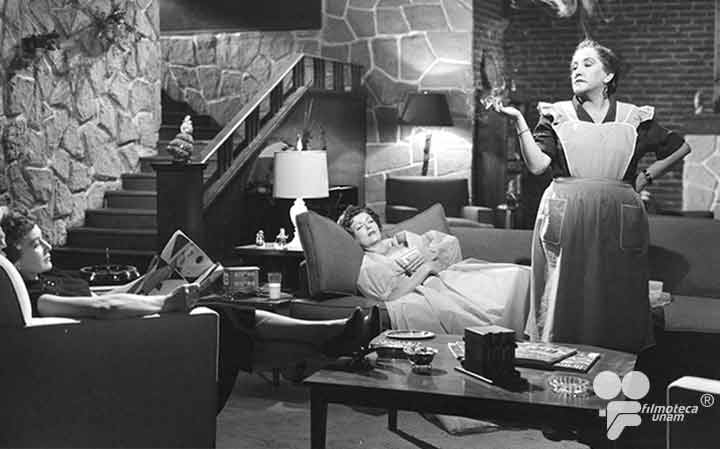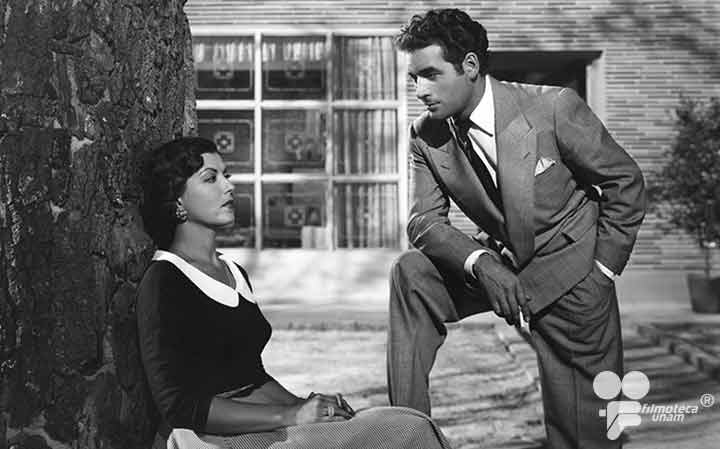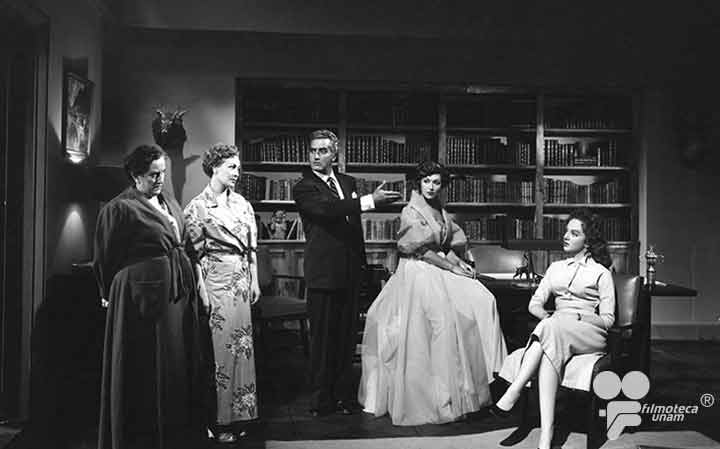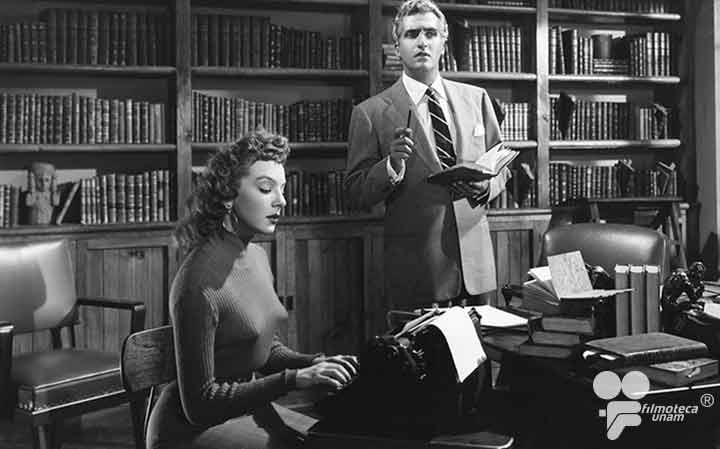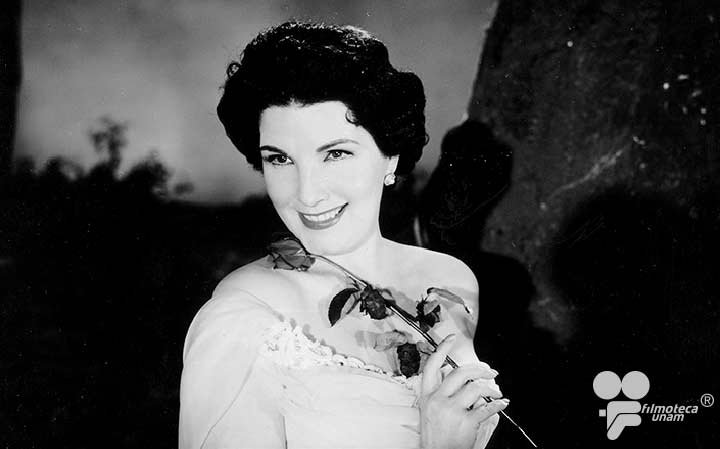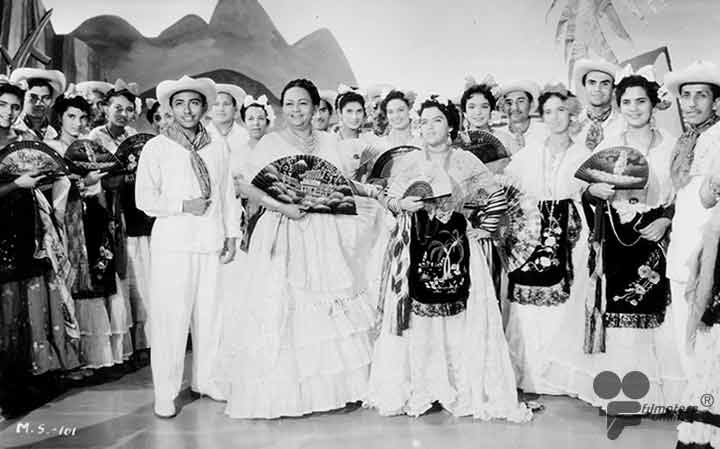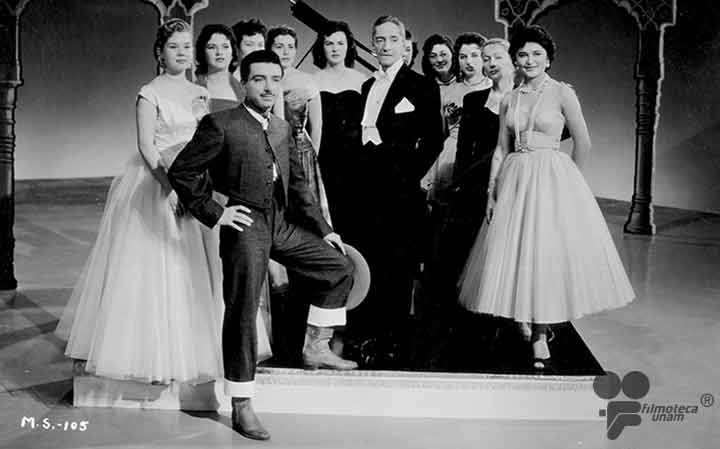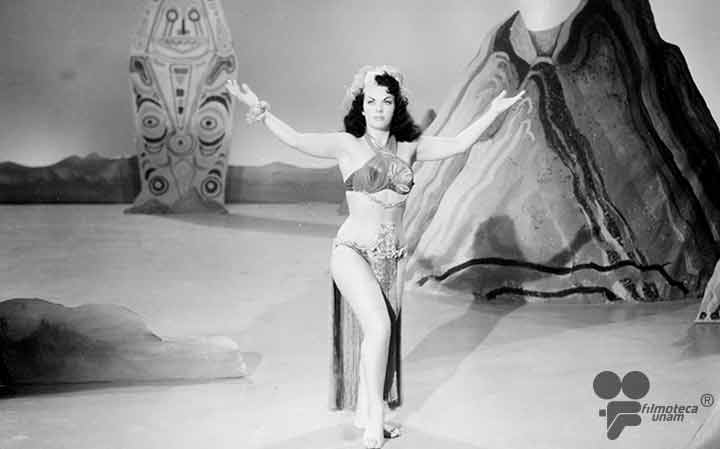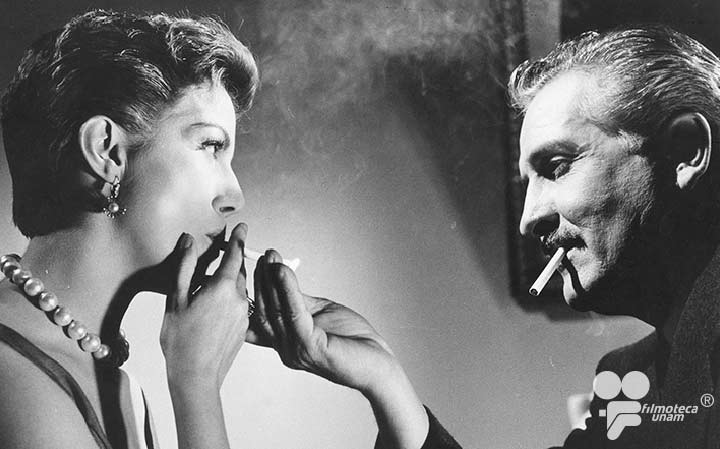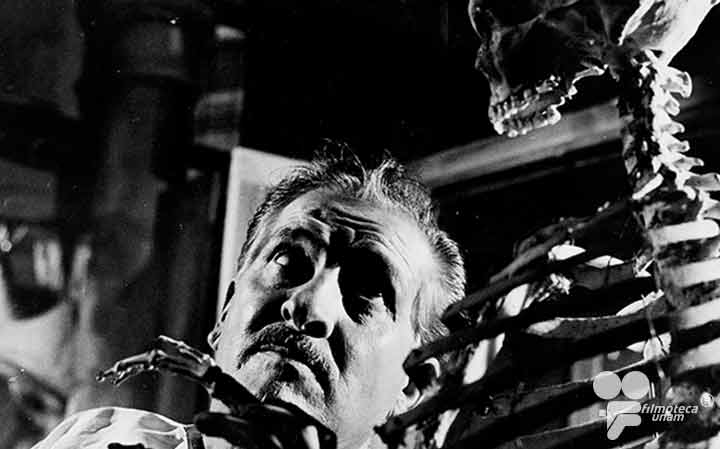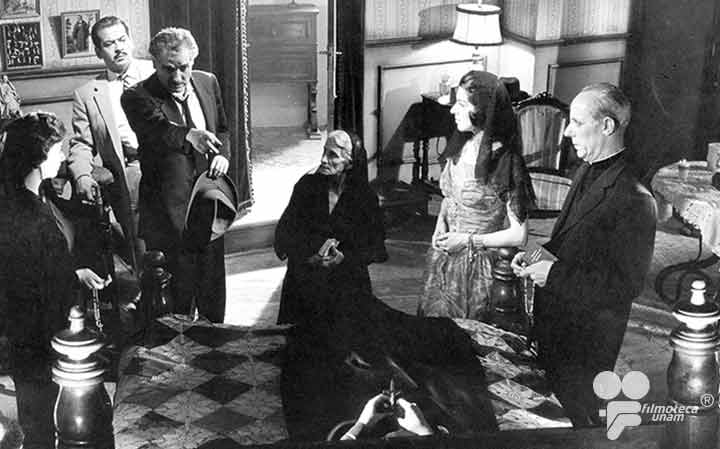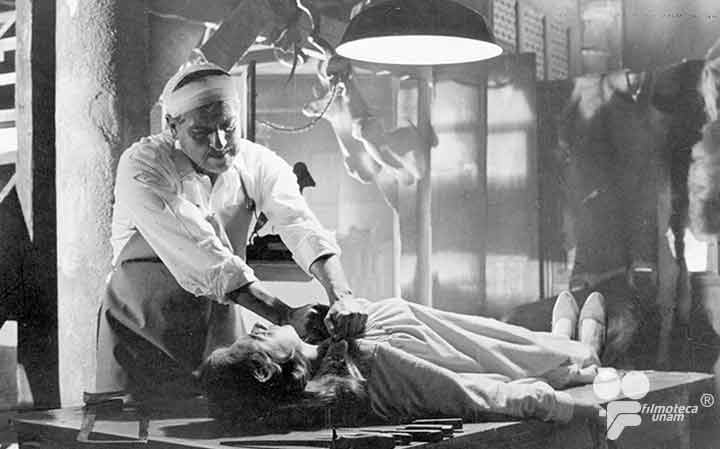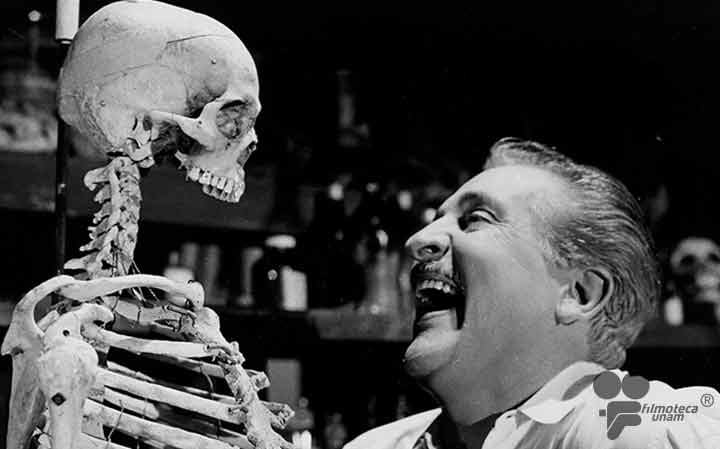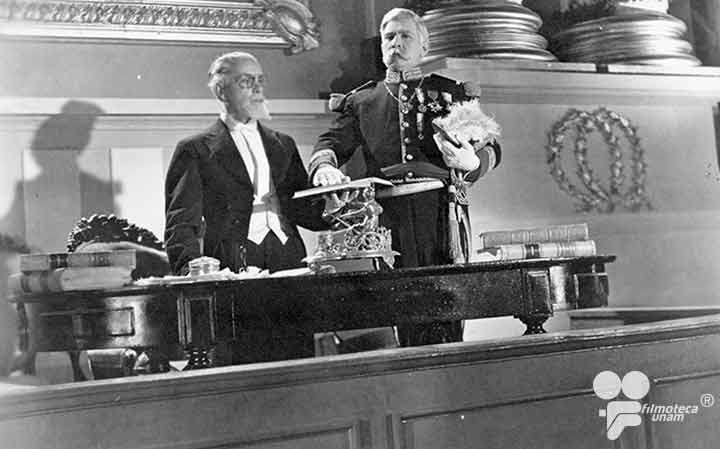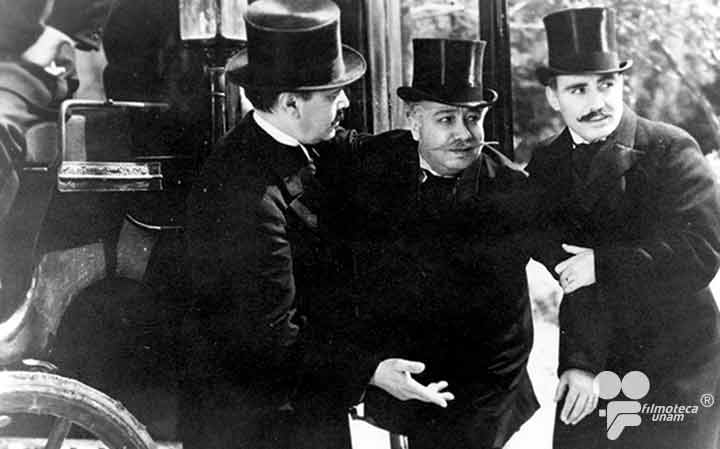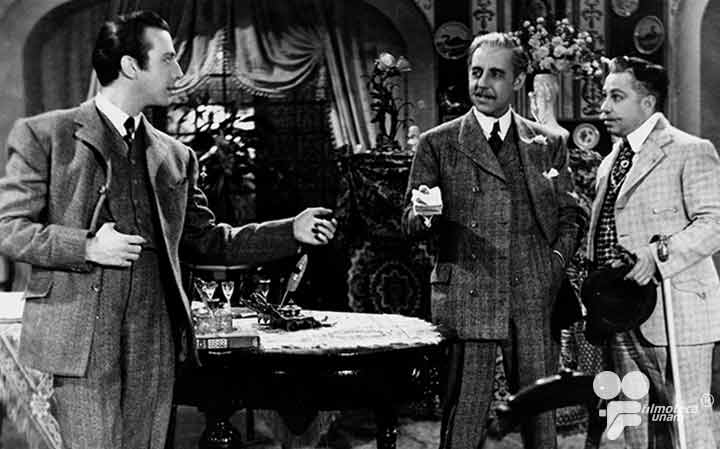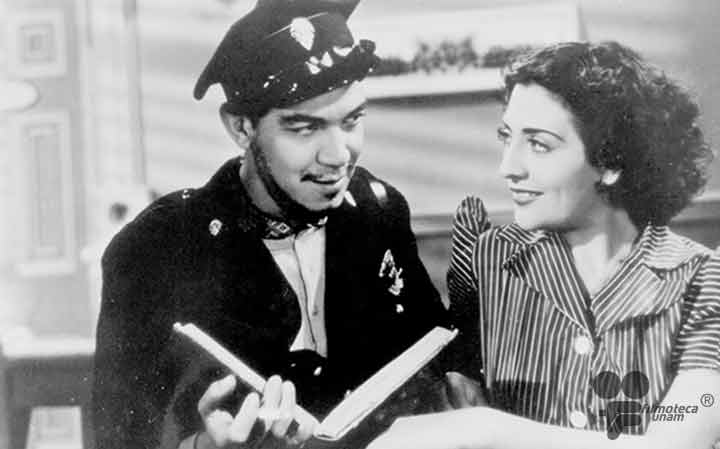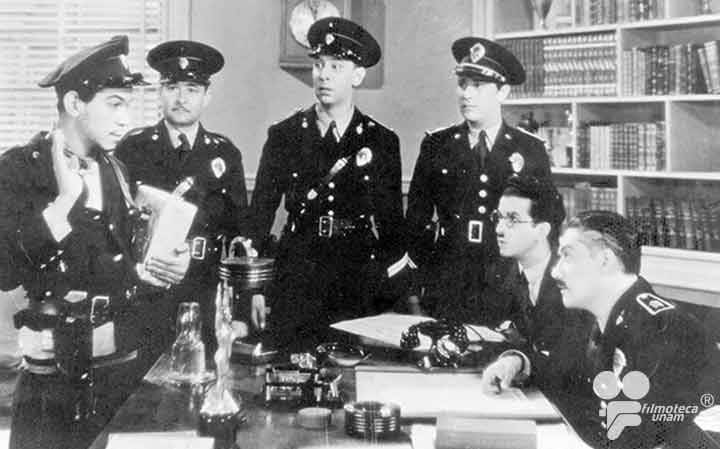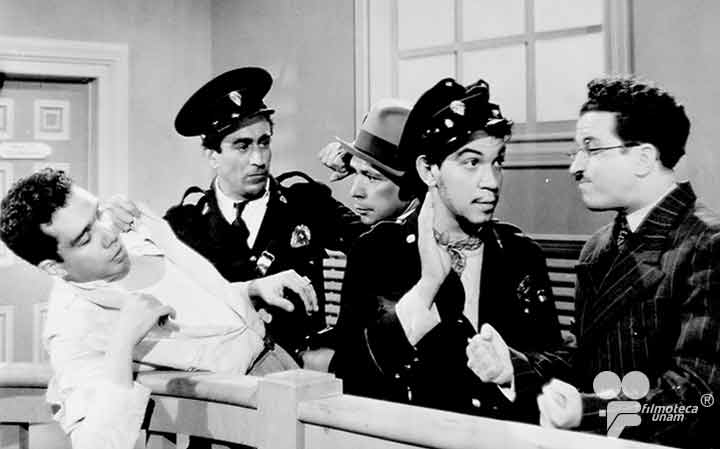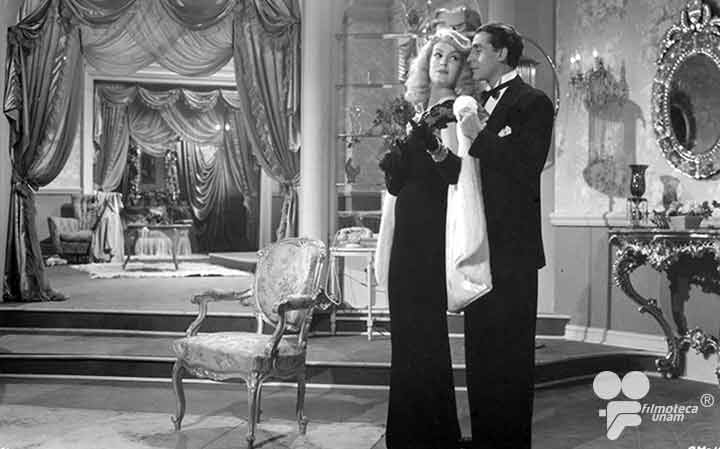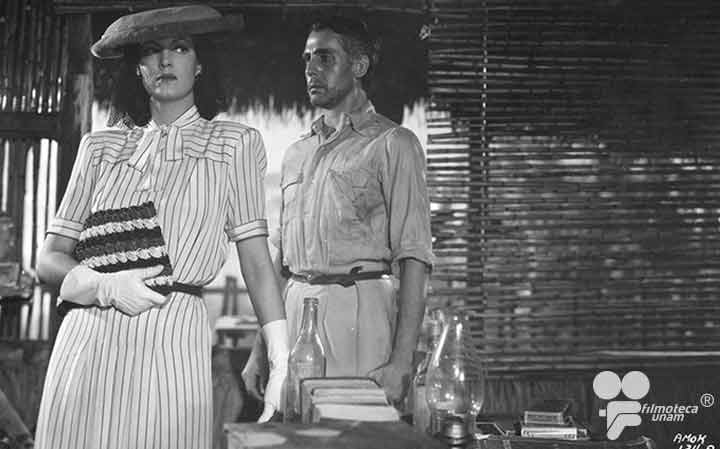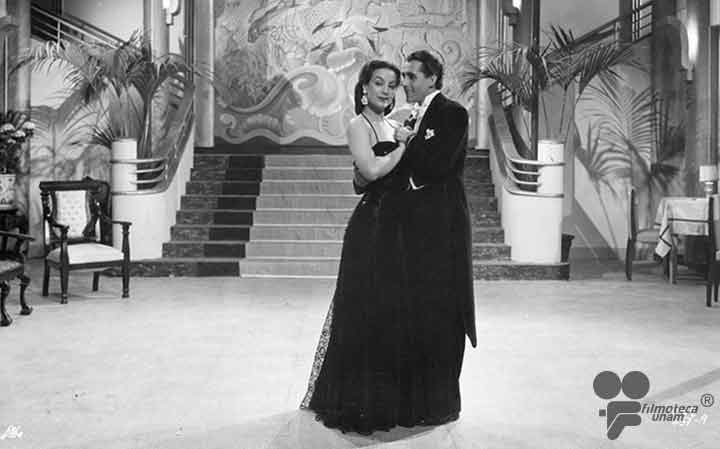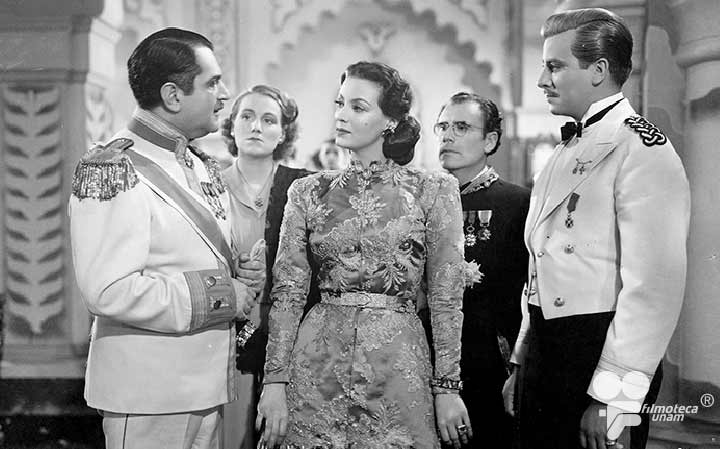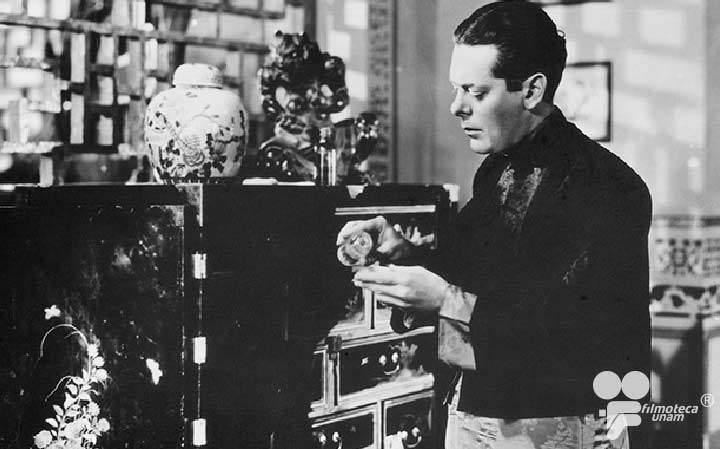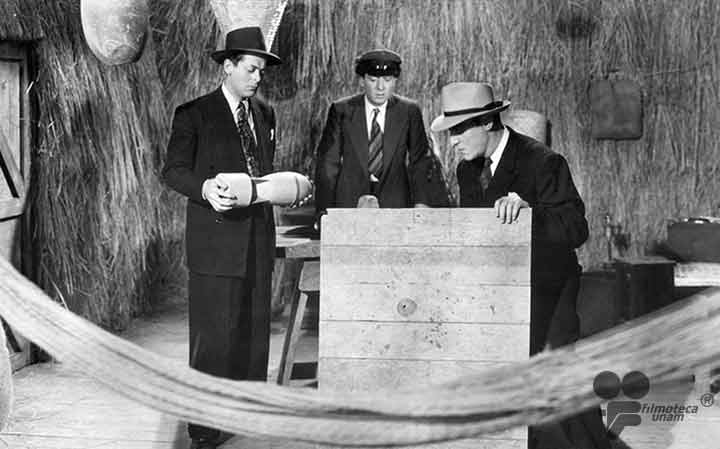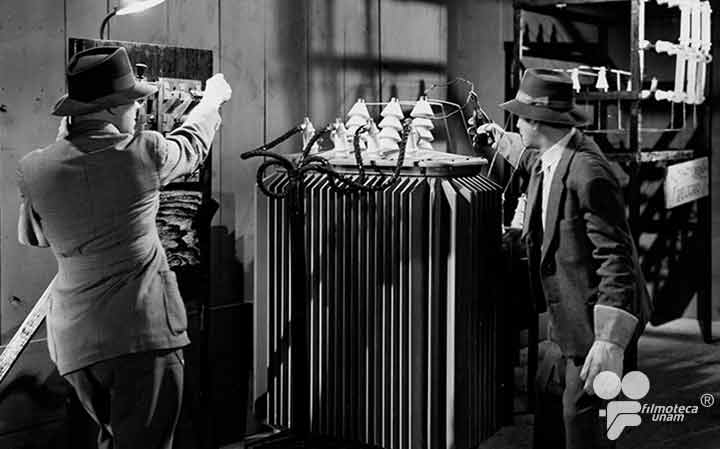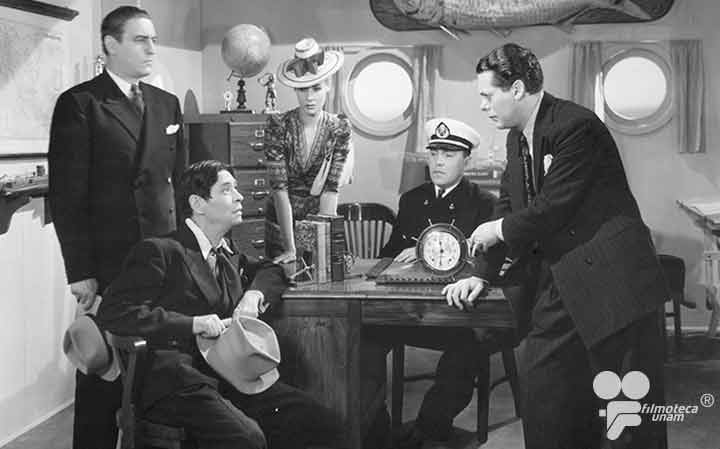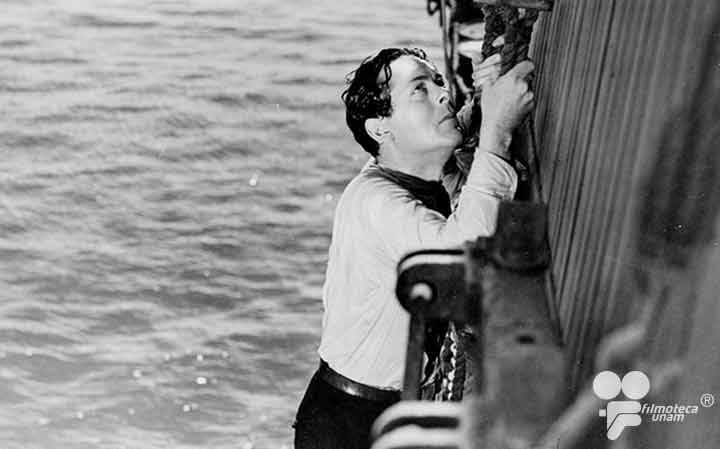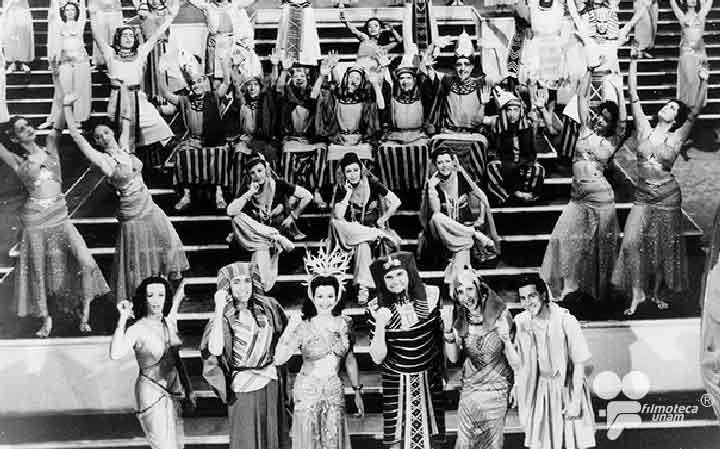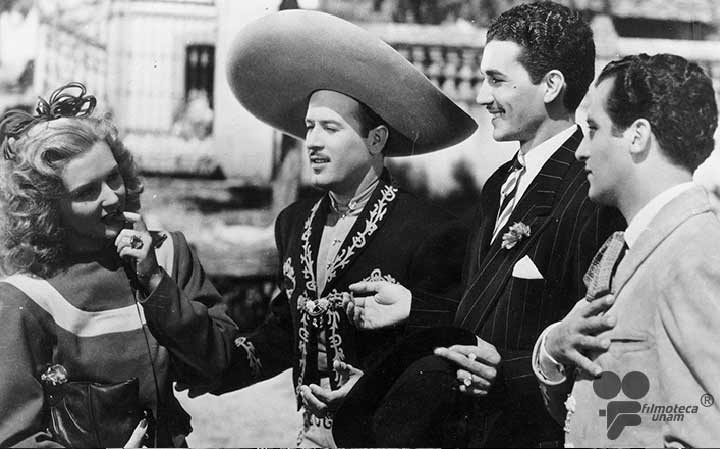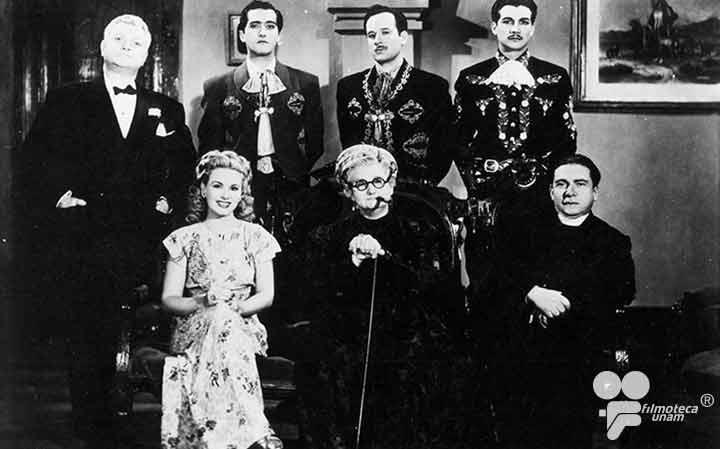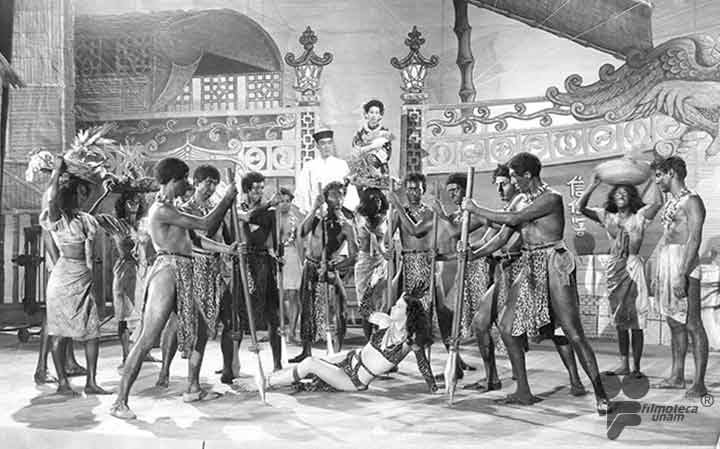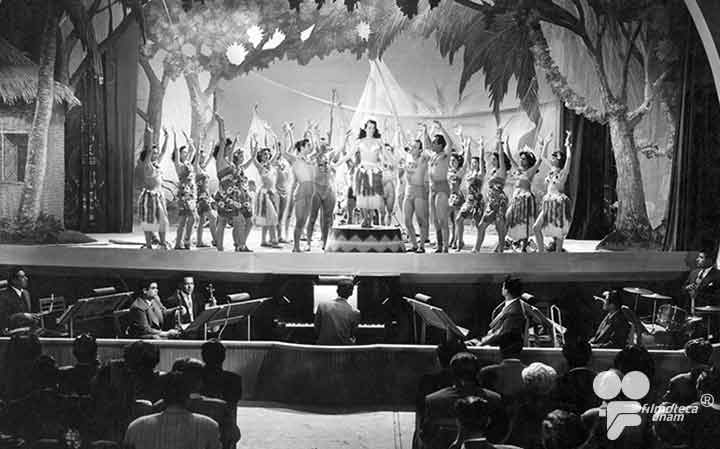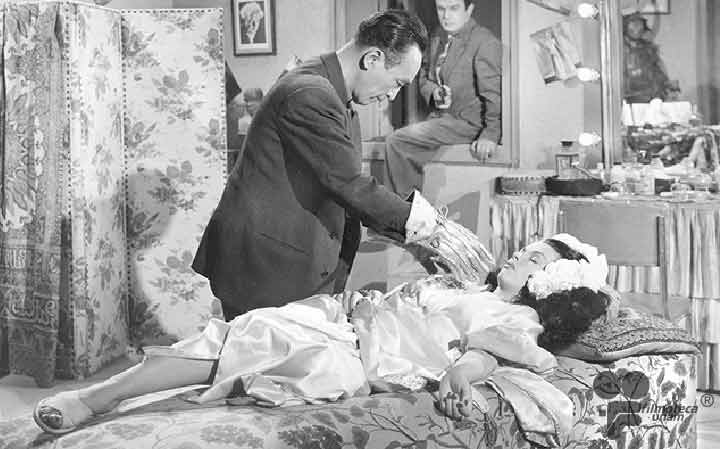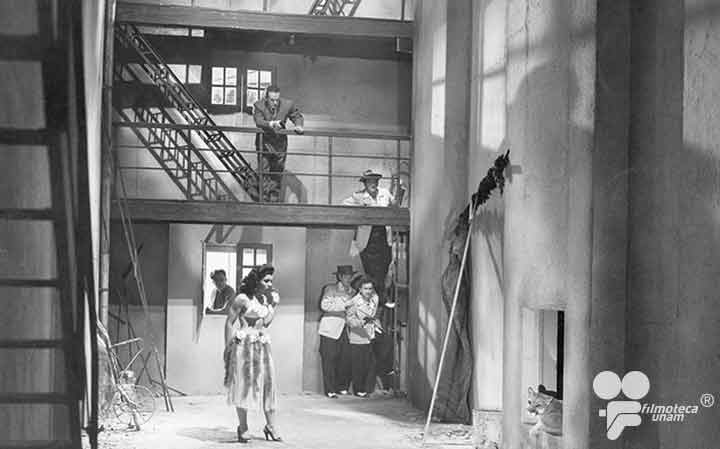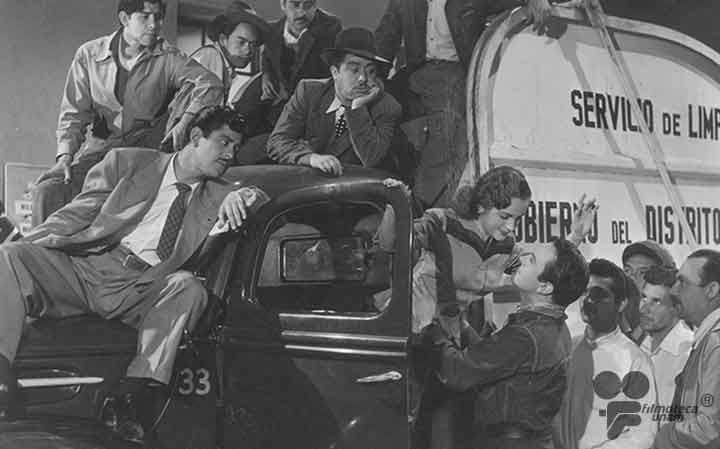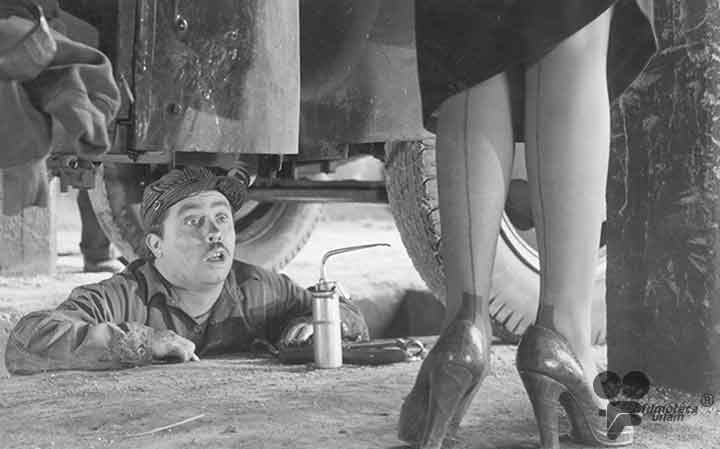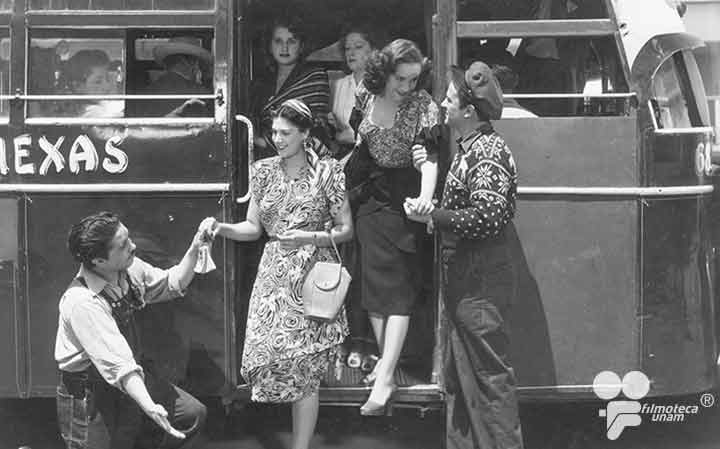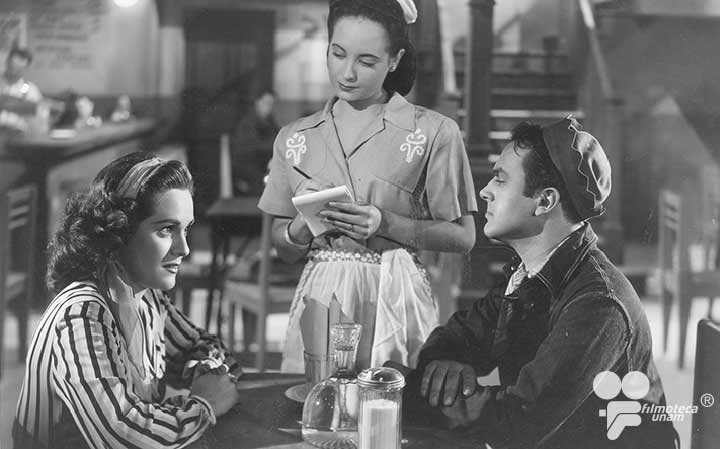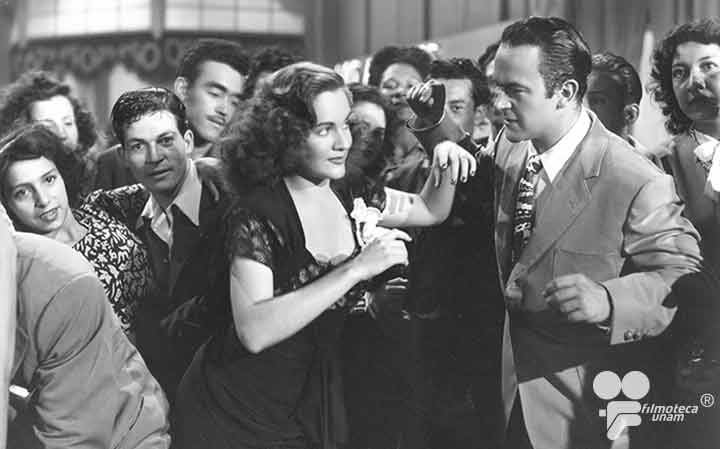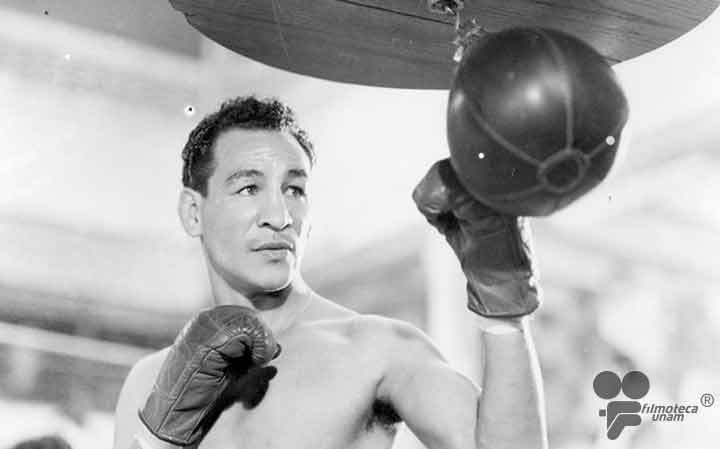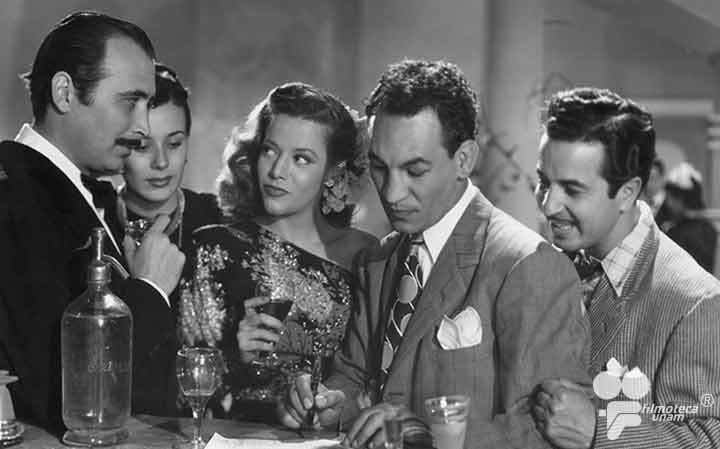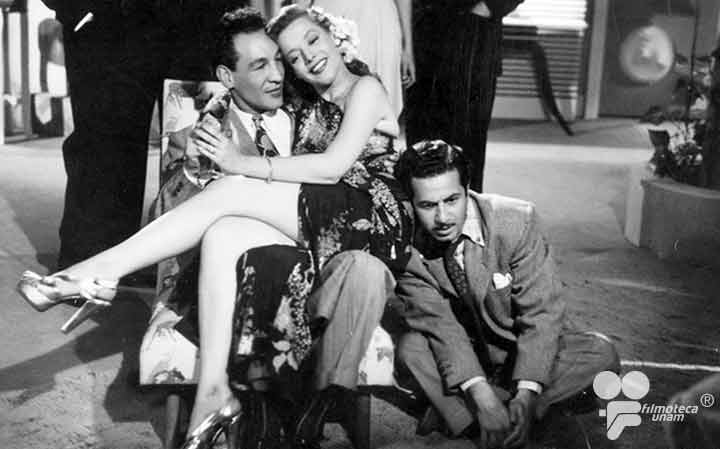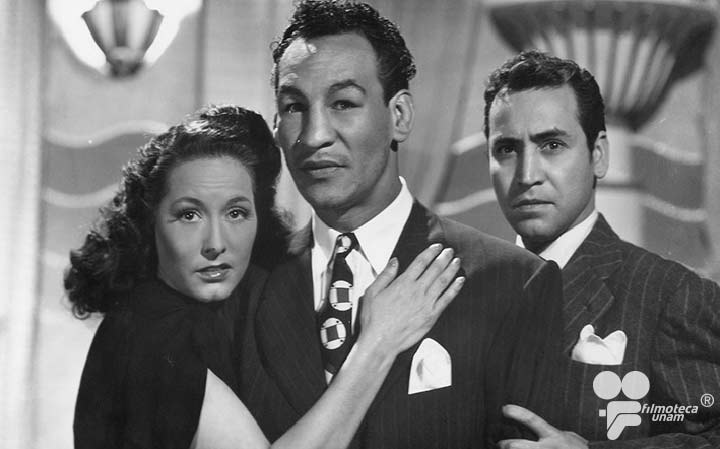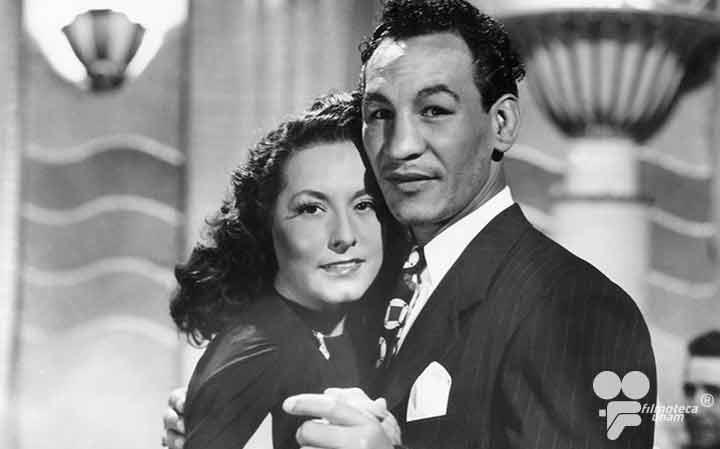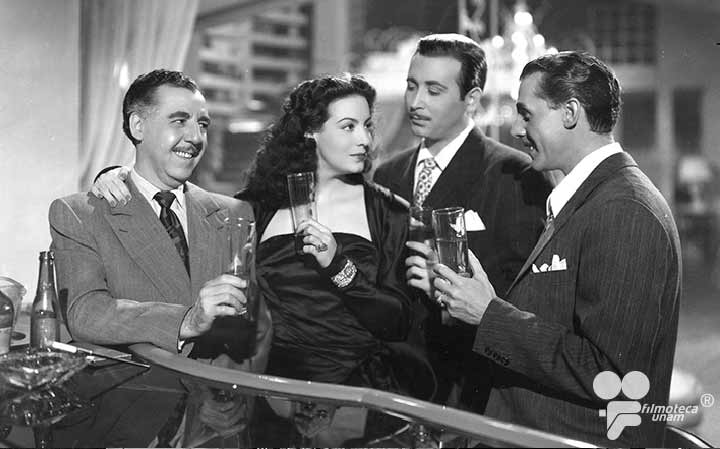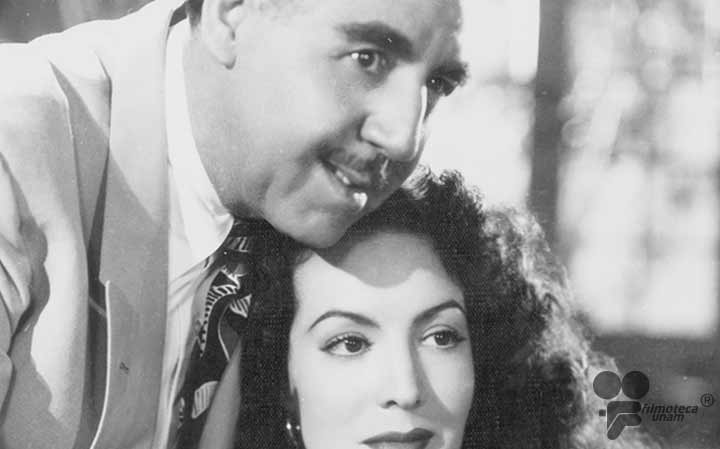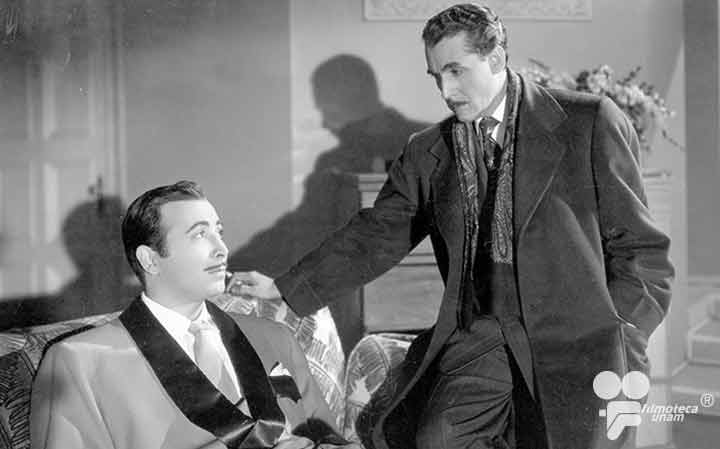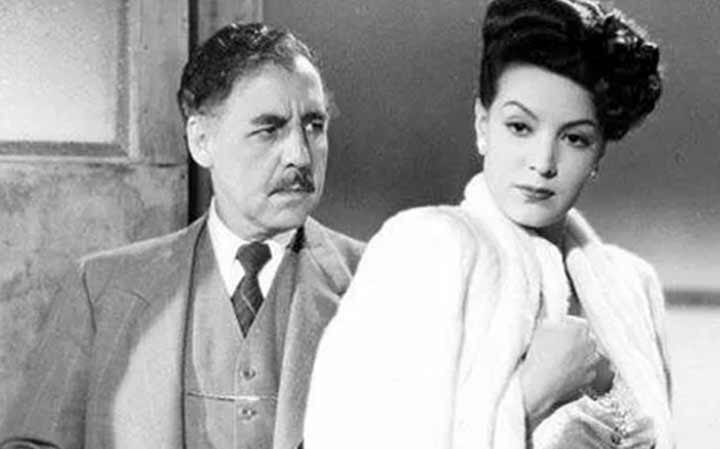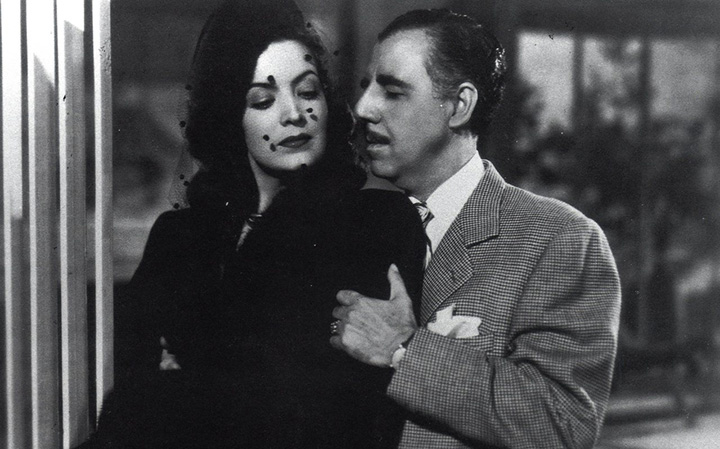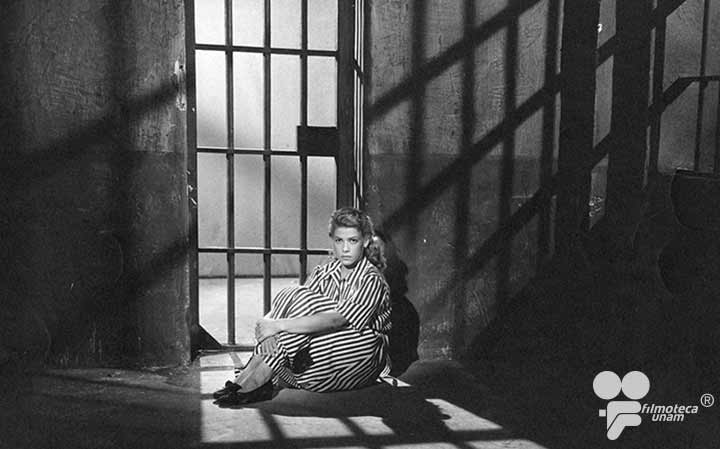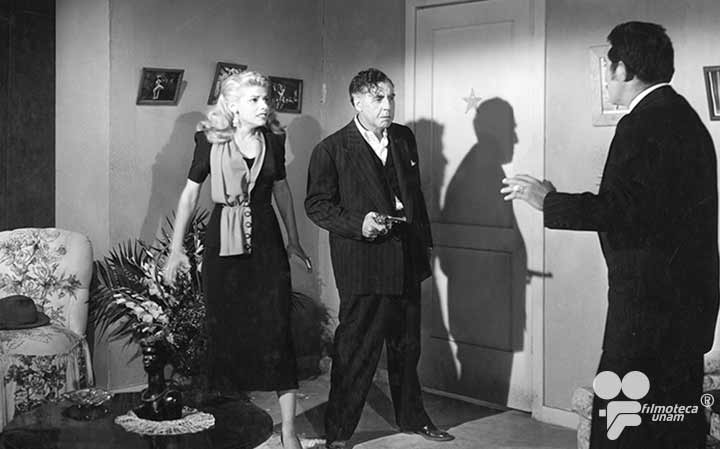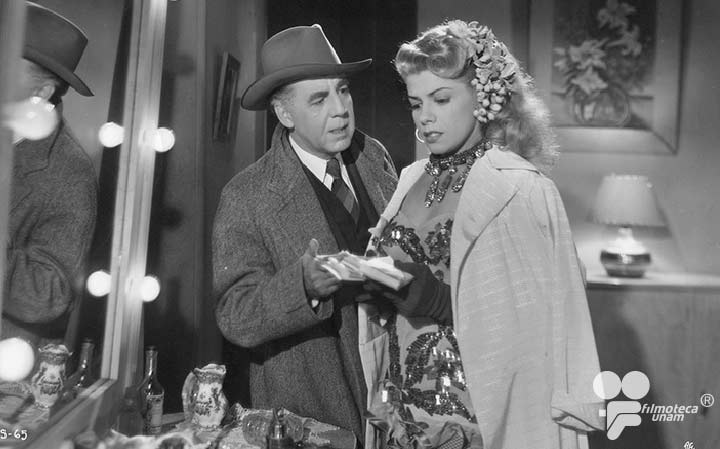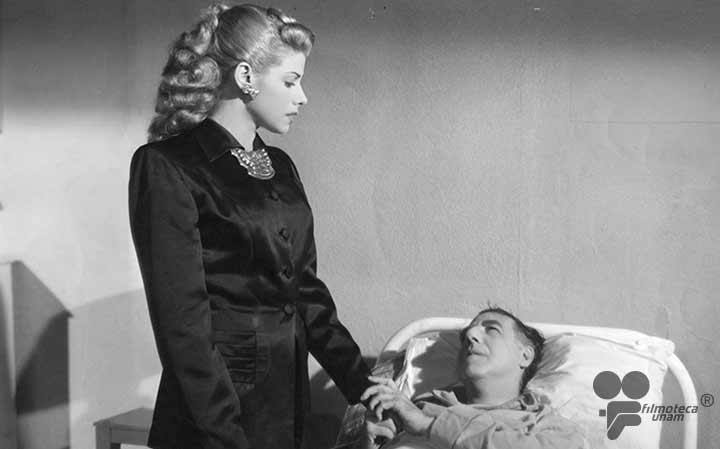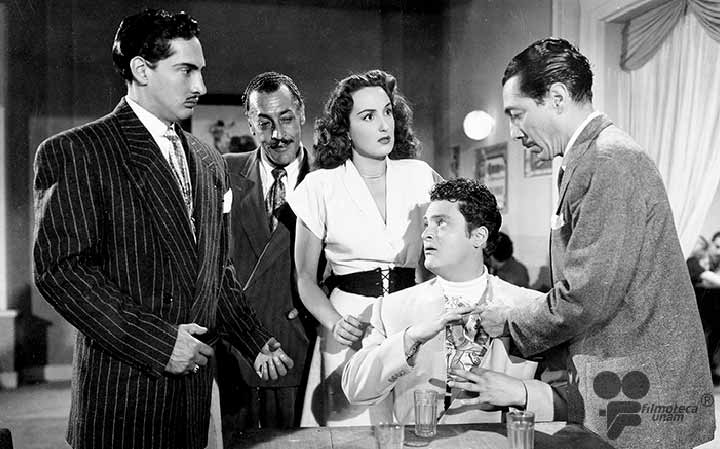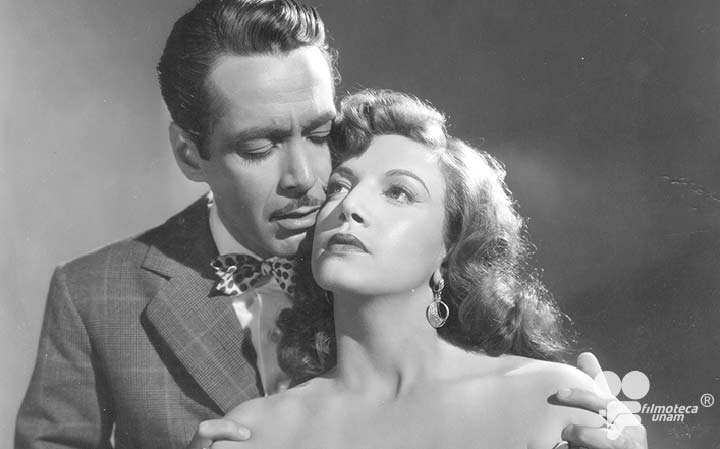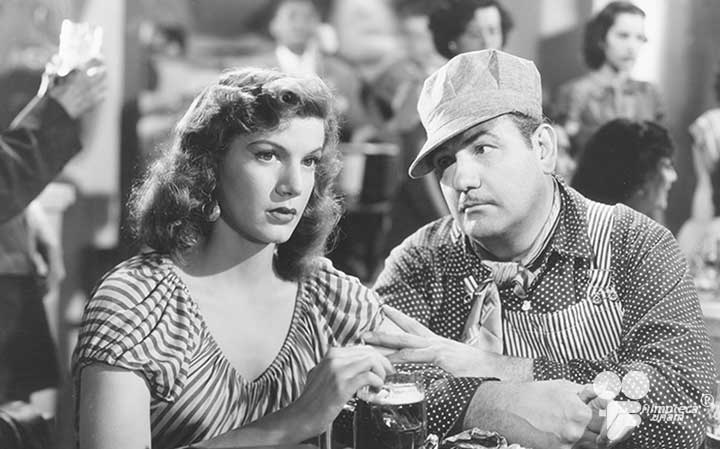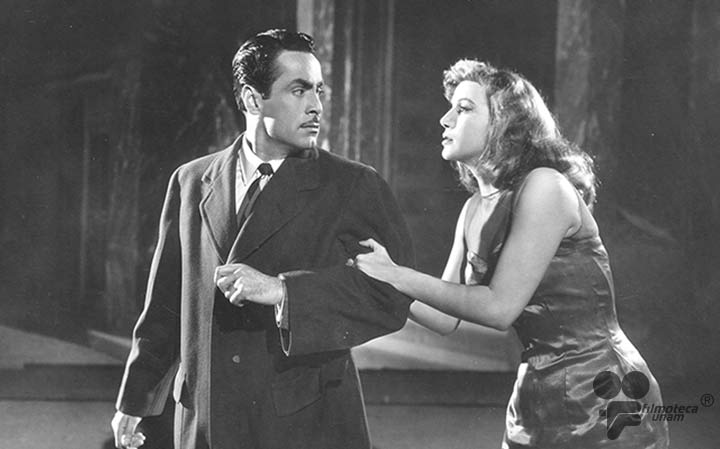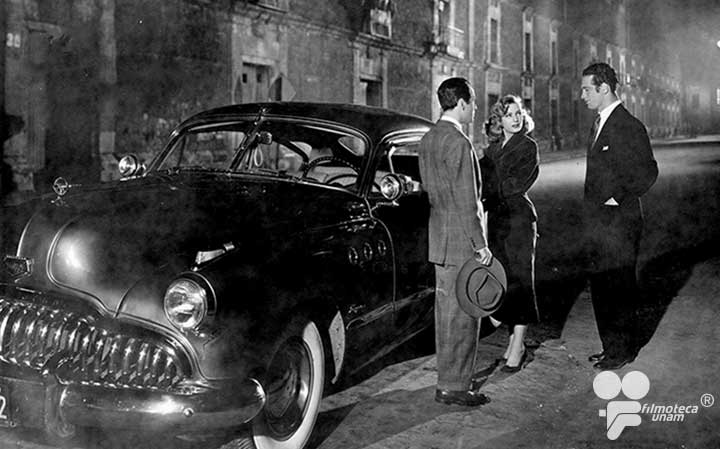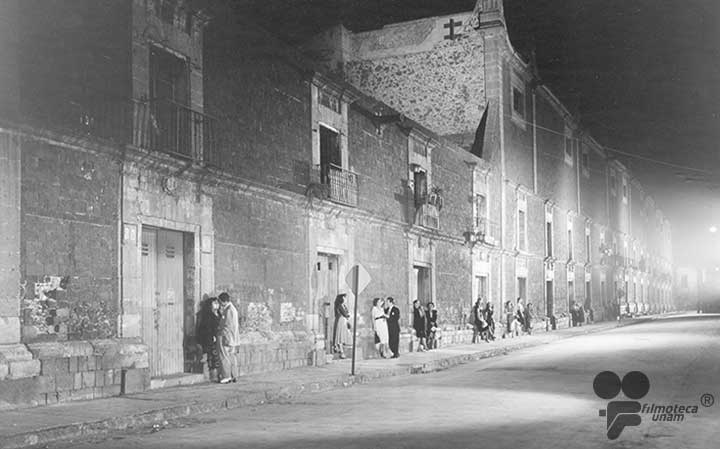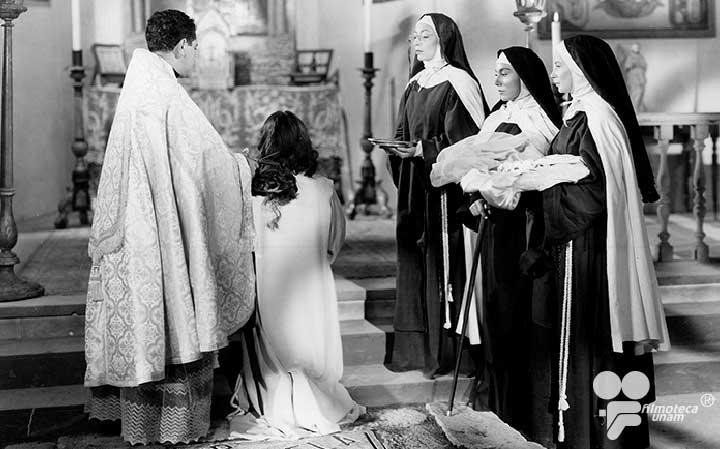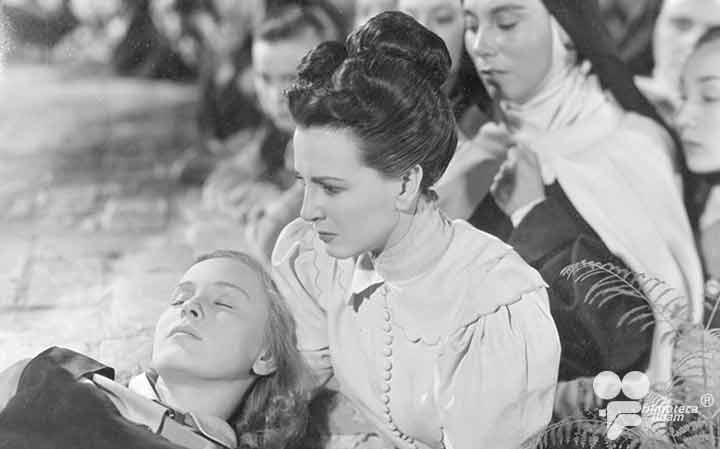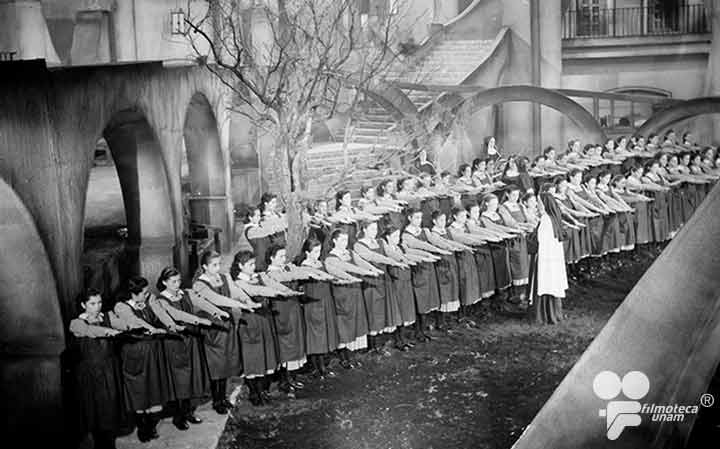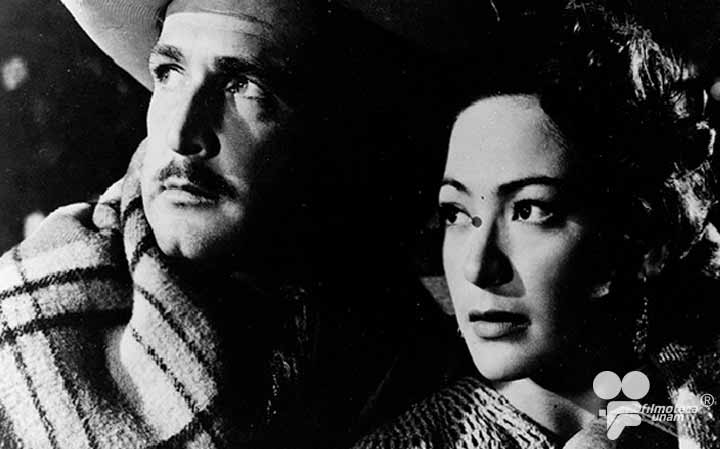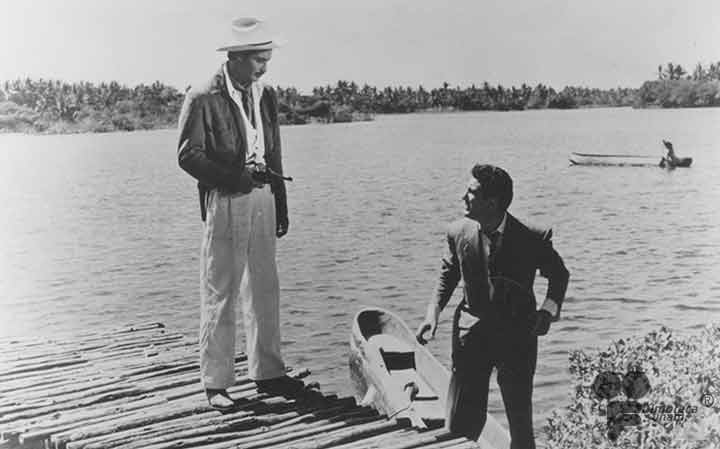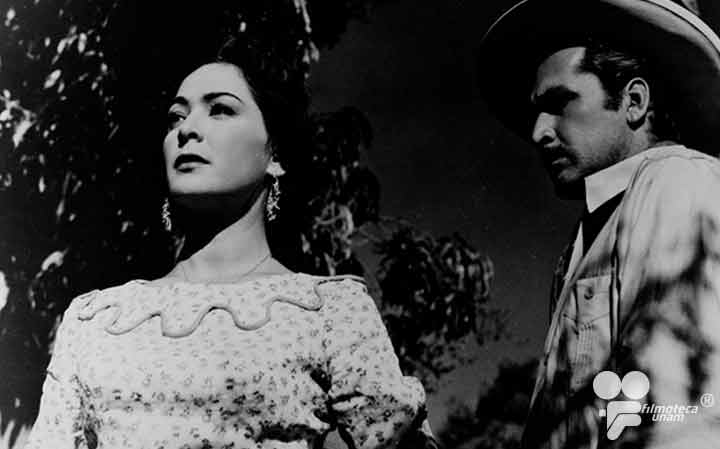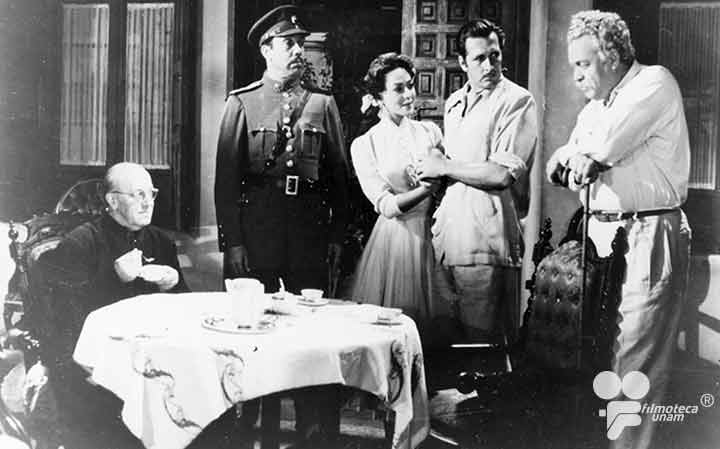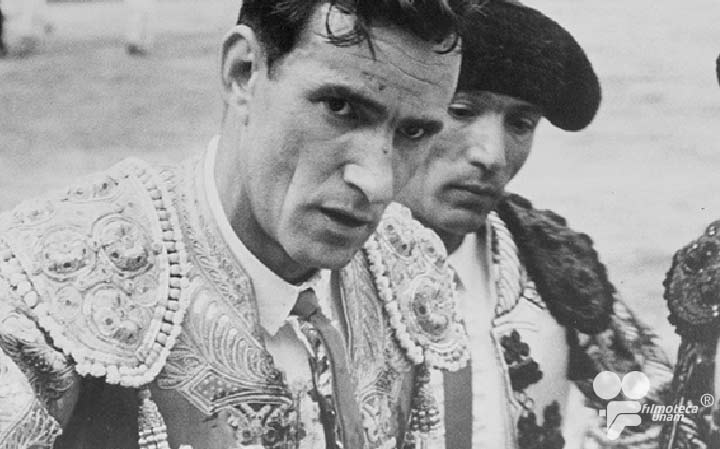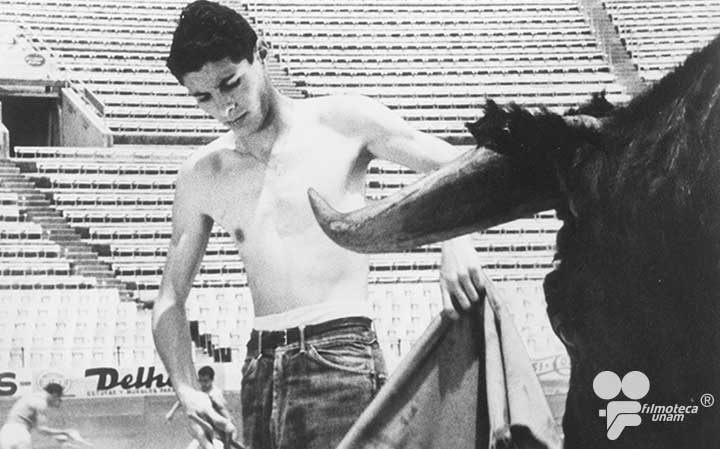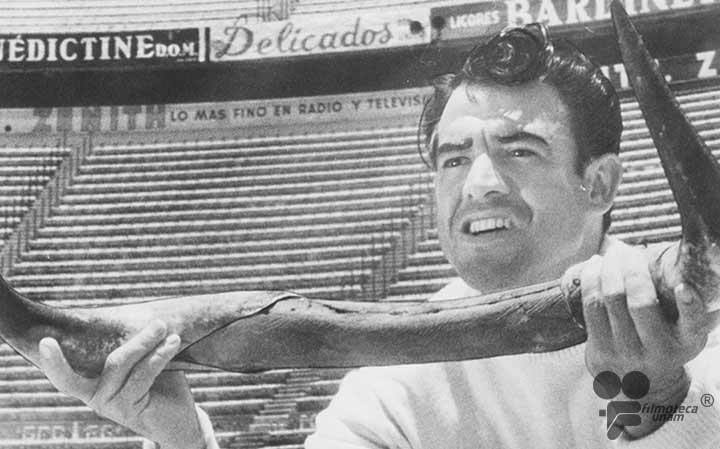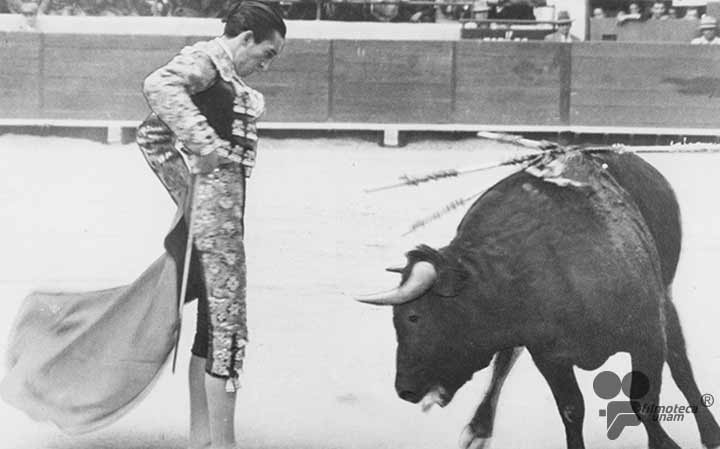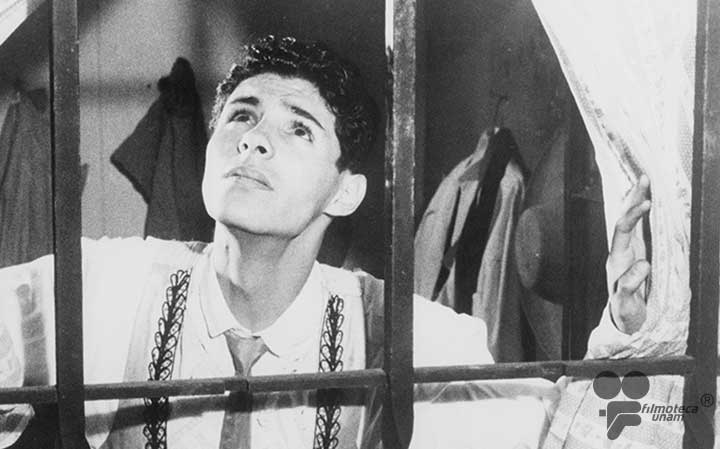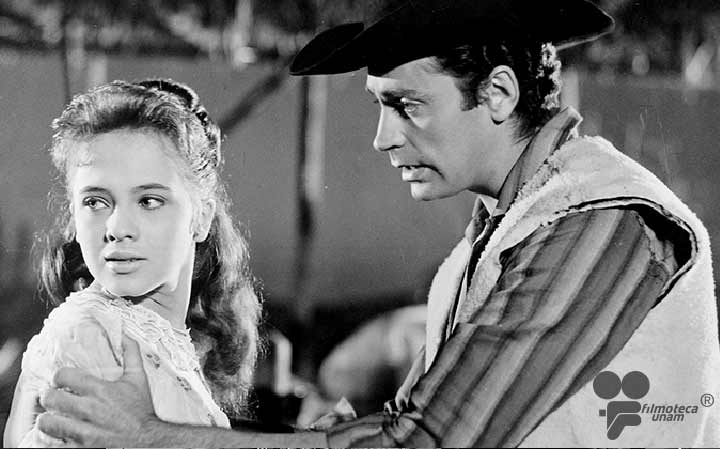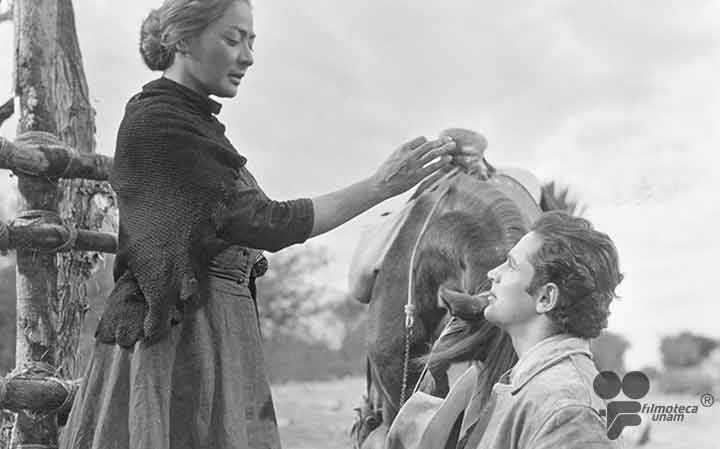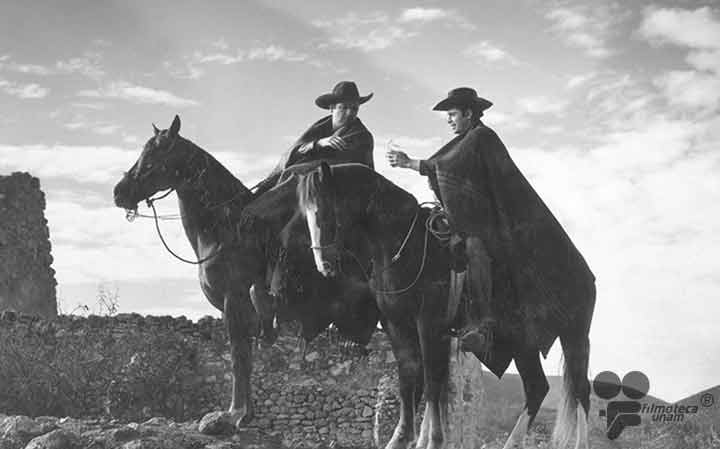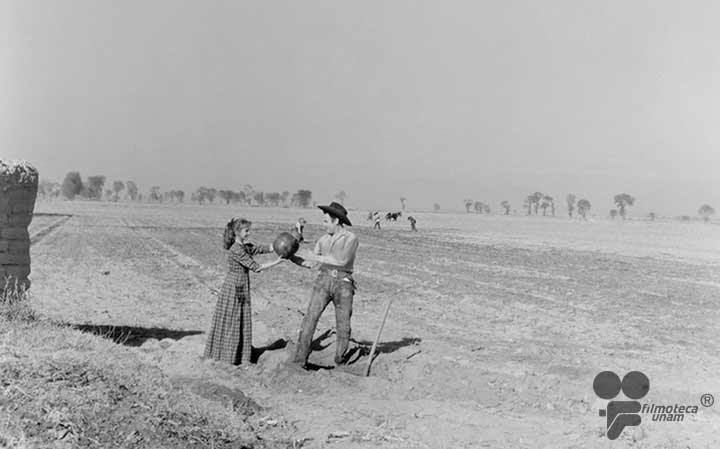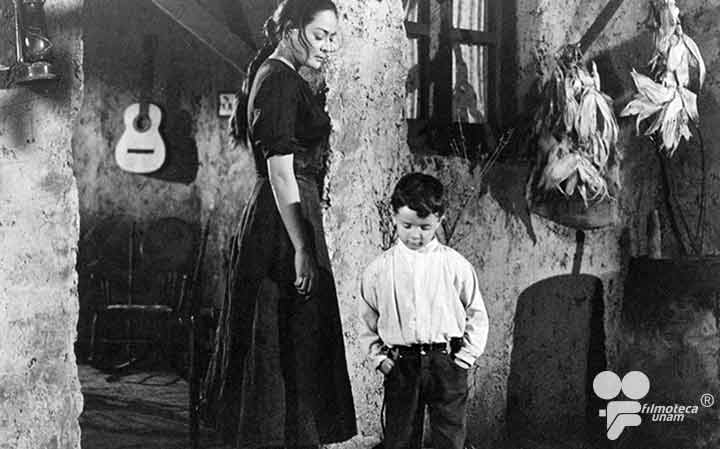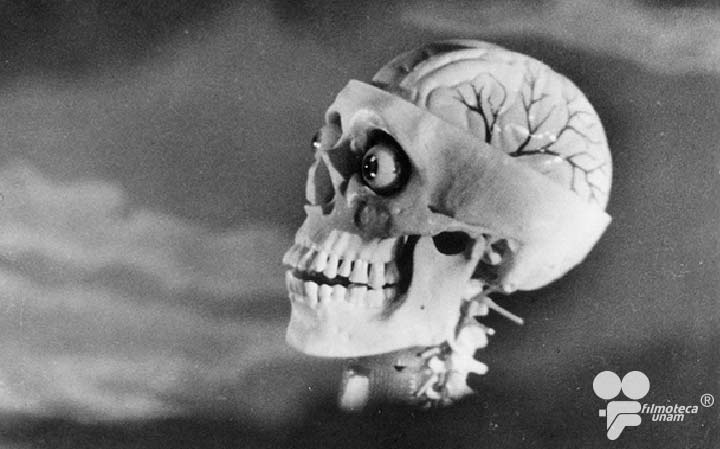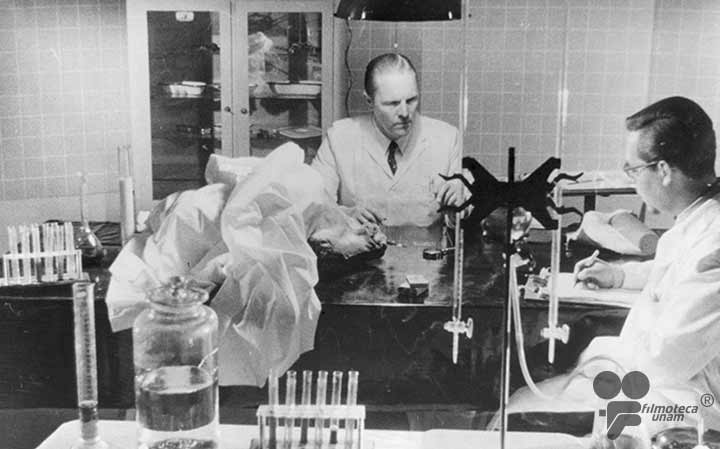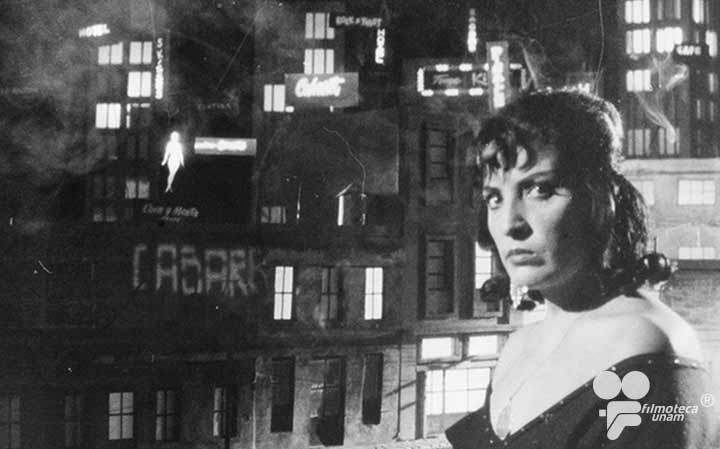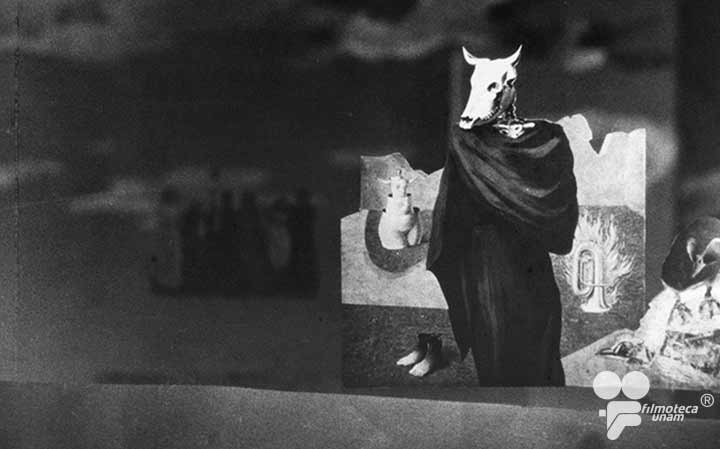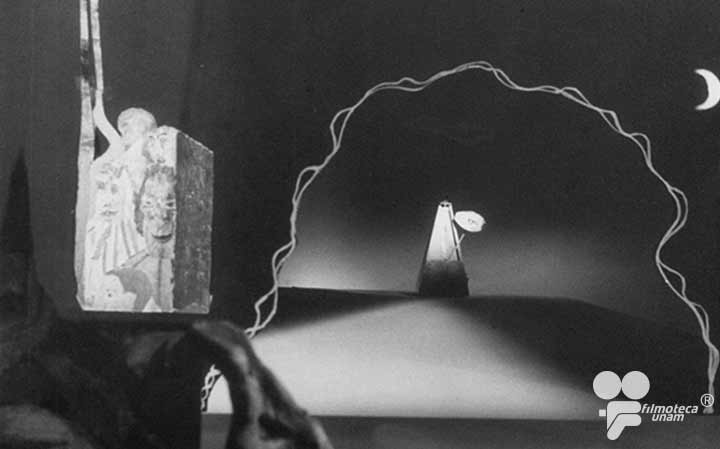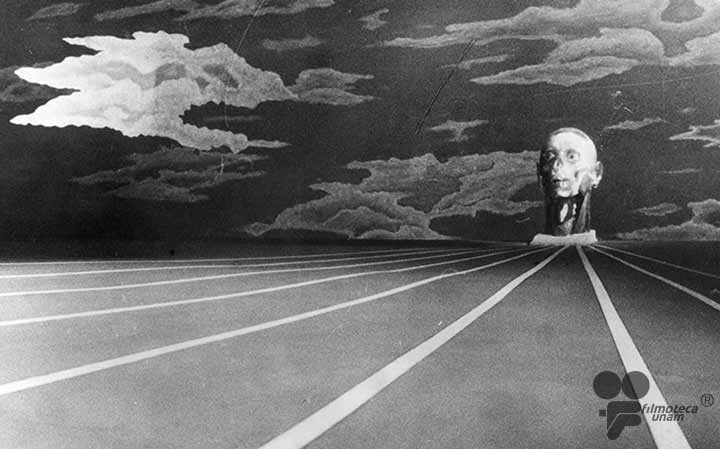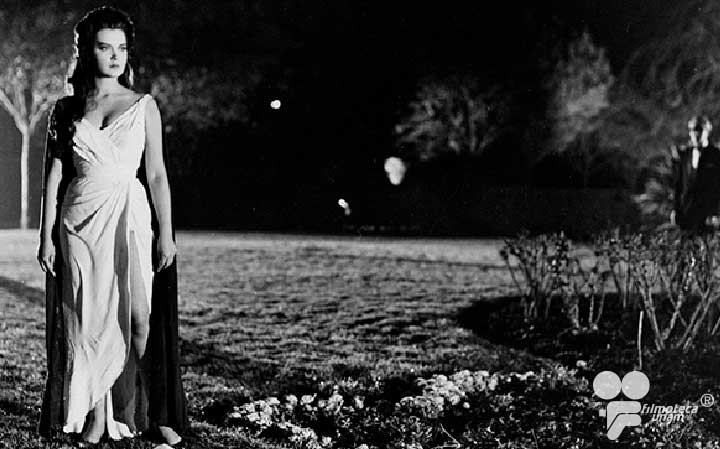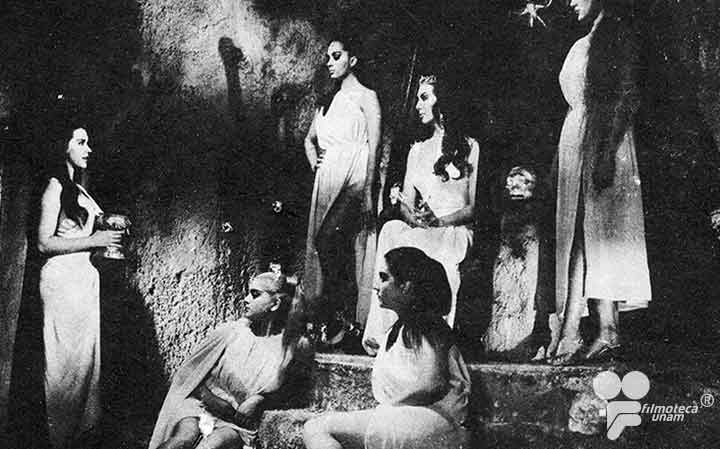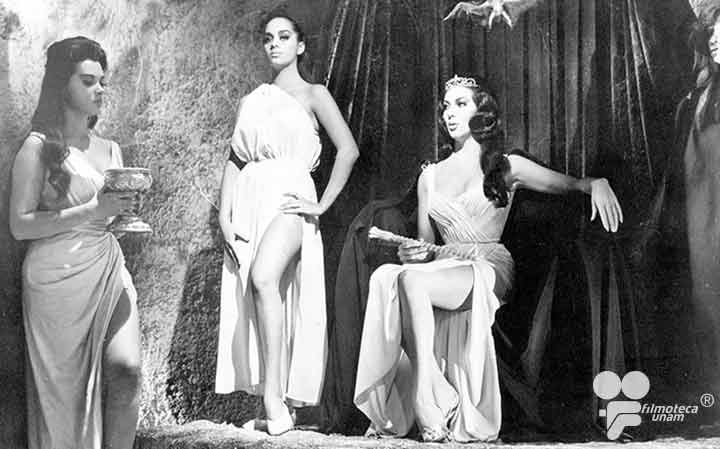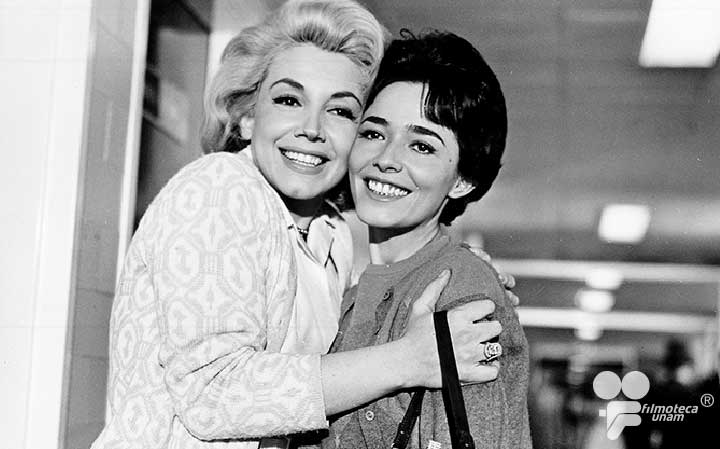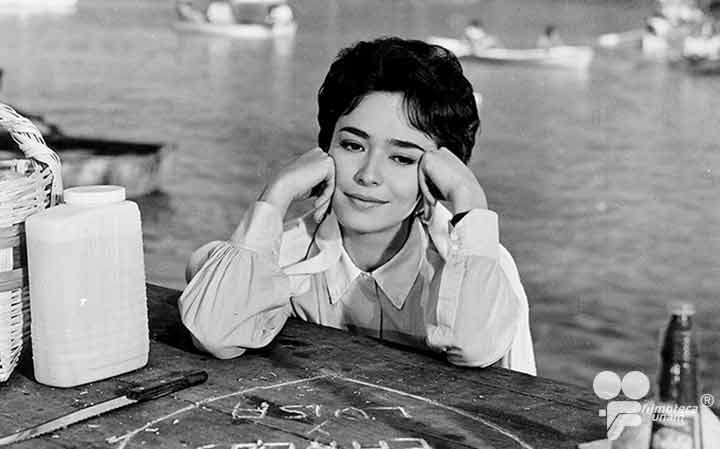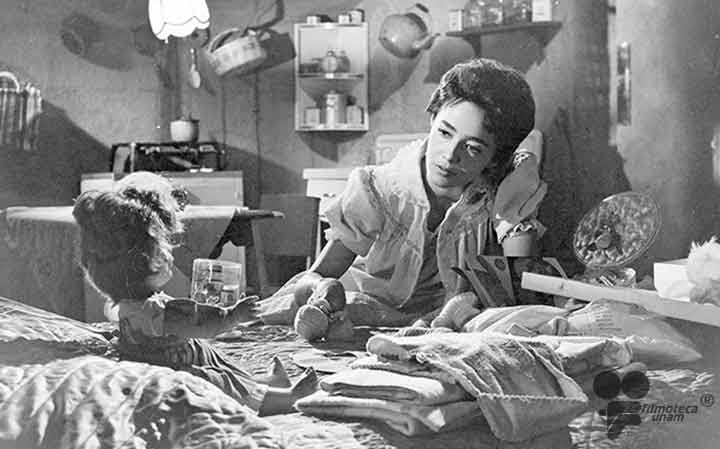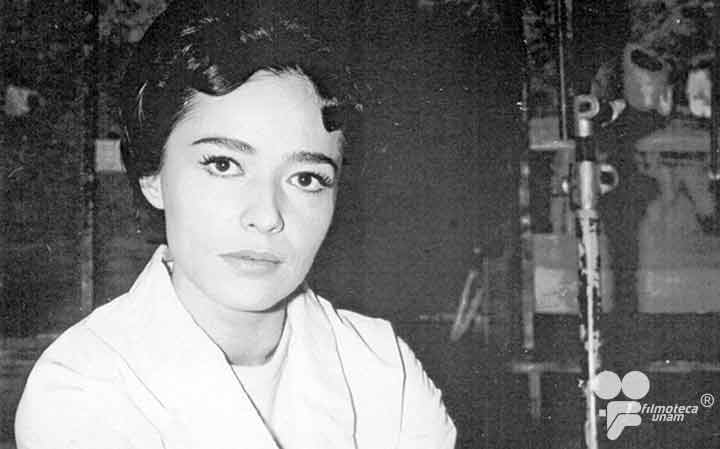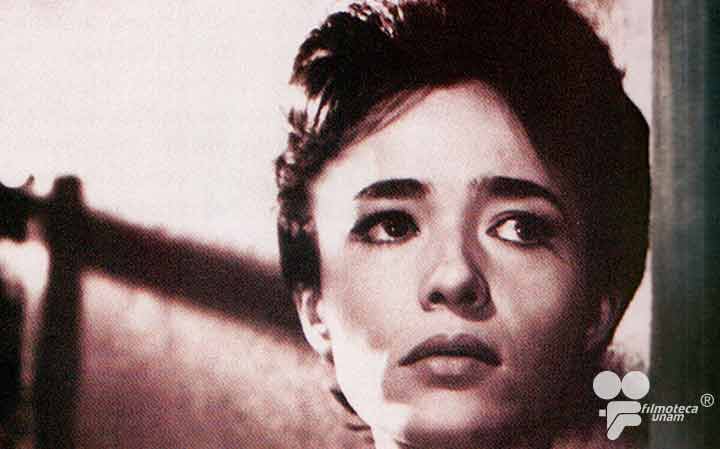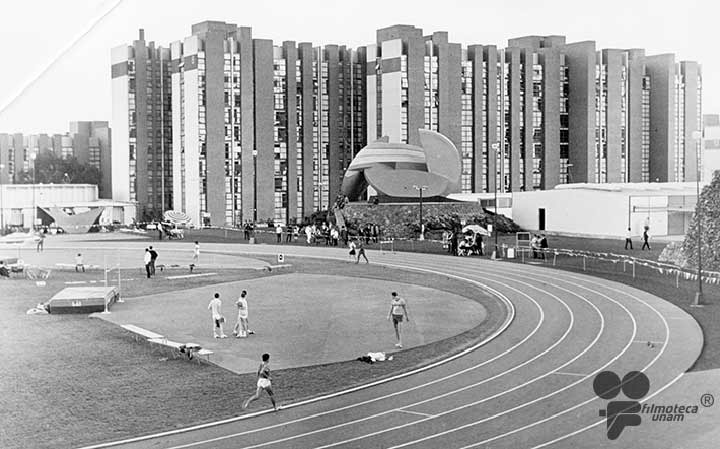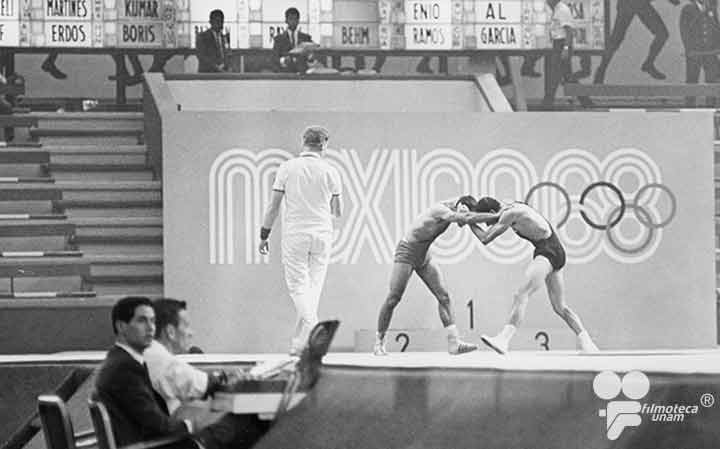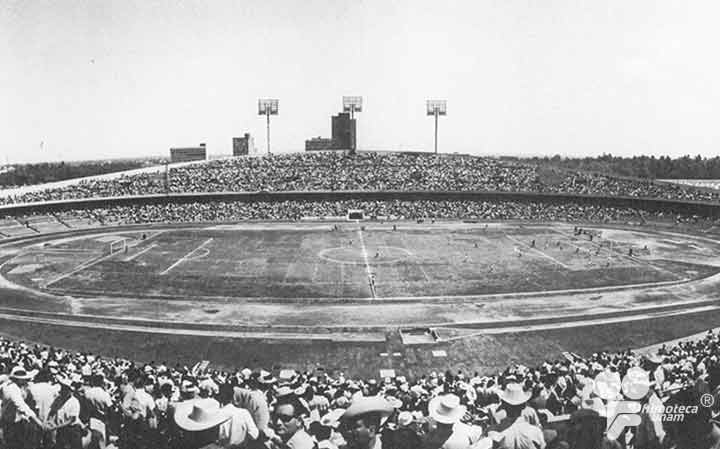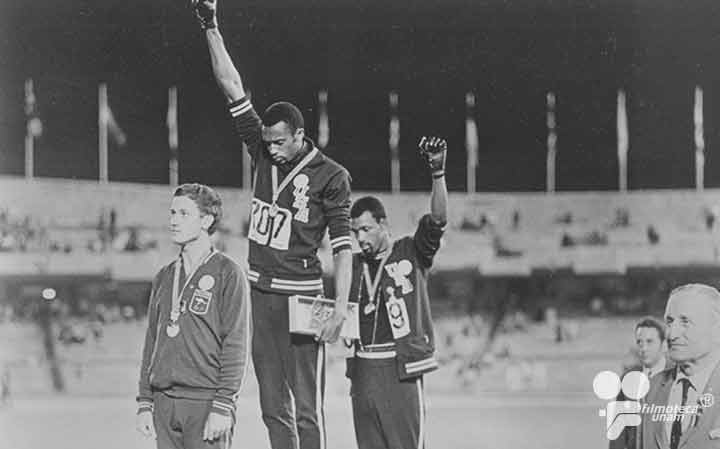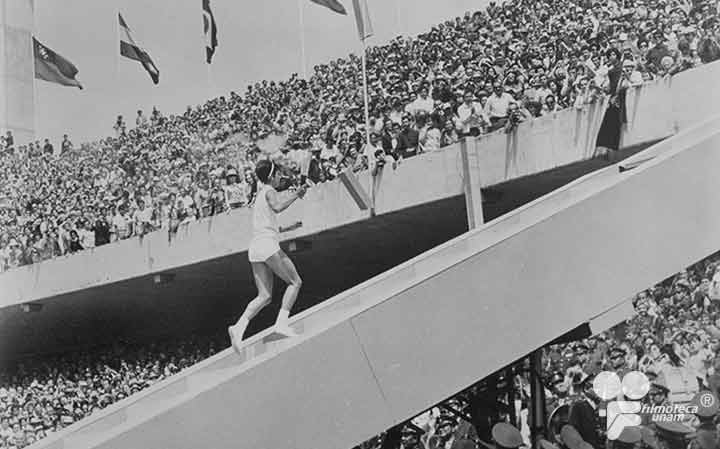
Spectacle Every Day – The Many Seasons of Mexican Popular Cinema” retrospective to be presented at the 76th Locarno Film Festival
With an unprecedented Mexican cinema showcase, the UNAM Film Archive of the National Autonomous University of Mexico (Filmoteca UNAM) has curated a cycle of films spanning the 1940s to the 1960s at one of the most important international venues: the Locarno Film Festival in Switzerland, in its 76th edition to be held from August 2-12th, 2023.
The “Spectacle Every Day- The Many Seasons of Mexican Popular Cinema” retrospective is an exploration of film production in Mexico. Three decades of exceptional creativity by screen gods, goddesses, and extraordinary filmmakers have inspired different generations of cinema lovers. This second Locarno Film Festival retrospective dedicated to Mexican cinema – the first since 1957 – is curated by writer and programmer Olaf Möller in collaboration with critic Roberto Turigliatto. It consists of 36 films, the largest part of which comes from the UNAM Film Archive collection (20 films).
Wrestlers, detectives, vampires: Locarno76 is preparing to receive all the colors of popular Mexican cinema between the 1940s and 1960s, with an unprecedented Retrospective that includes rarities and previously unpublished works.
- Le Films Du Camelia Collection
- Televisa Collection
- LA/3D Collection
- Viviana García Besné Collection
- Alameda Films Collection
- Mexico National Film Archive Collection
- UNAM Film Library Collection
- International Olympic Committee Collection

Le Films Du Camelia Collection.
The Night Advances / La noche avanza
Dir. Roberto Gavaldón / Mexico / 1951 (production) 1952 (release) / 85 minutes.
Movie specs
Filming: Starting on July 16, 1951, at Churubusco Studios.
Release: April 24, 1952, at the Mariscala theater (one week).
Screenplay: Luis Spota (story), Roberto Gavaldón, José Revueltas, and Jesús Cárdenas (adaptation).
Cinematography: Jack Draper.
Editing: Charles L. Kimball.
Music: Raúl Lavista.
Production: Felipe Mier and Óscar J. Brooks, Ernesto Enríquez (Executive producer), Miguel Hernández Cajigal (Production manager), Enrique L. Morfín (Production chief), Jorge Durán Chávez (Assistant production chief).
Production Company: Mier y Brooks.
Genre: Thriller.
Cast: Pedro Armendáriz, Rebeca Iturbide, Anita Blanch, Eva Martino, José María Linares Rivas, Julio Villarreal, Armando Soto la Marina El Chicote, Carlos Múzquiz, Wolf Ruvinskis, Francisco Jambrina, Juan García, Roberto Y. Palacios, Margarito Luna, Héctor Palacios, José Torvay, Humberto Rodríguez, Agustín Fernández, Luis Mussot, Héctor Godoy, Basque ball players, Ubeda and Aquiles Elorduy.
Synopsis
The arrogant Arizmendi, a champion of the Basque ball game, lives intoxicated by his victories and disdains the women who love him. A blackmail scheme forces Arizmendi to lose a game. Convinced he can get away with it, he fails to fulfill the agreement and must face the revenge of the villain Marcial Gómez.
Roberto Gavaldón is famous for his multiple collaborations with writer B. Traven, including his most renowned film, Macario, the first Mexican film nominated for an Oscar for Best Foreign Language Film. However, the trio of Gavaldón, Spota, and Revueltas was equally effective: Luis Spota, a keen observer of Mexican social life, and José Revueltas, a writer and political activist, had previously worked together on En la palma de tu mano. Made in the style of American film noir, both films examine the underworld of Mexico City.
The Crime Medallion / El medallón del crimen
Dir. Juan Bustillo Oro / México / 1955 (production) 1956 (release) / 93 minutes.
Movie specs
Filming: April 18 to May 6, 1955.
Release: June 10, 1956, at the Palacio Chino theater.
Screenplay: Juan Bustillo Oro, Antonio Helú.
Cinematography: Ezequiel Carrasco.
Editing: Gloria Schoemann.
Music: Raúl Lavista; songs: Wello Rivas.
Production: Jesús Grovas.
Production Company: Tele Talia Films.
Genre: Film noir, drama.
Cast: Charito Granados, Rita Macedo, Manolo Fábregas, Silvia Derbez, Wolf Ruvinskis, Eduardo Alcaraz, Manuel Arvide, Rafael Banquells, Miguel Córcega, Fernando Mendoza, Jorgito Kreutzmann, Celia Manzano, Rafael Estrada, José Muñoz, Josefina Leiner, Oscar Ortiz de Pinedo, Quintín Bulnes, Armando Arriola Arriolita, Humberto Rodríguez, Salvador Quiroz, Salvador Lozano, Pedro Ortega, Armando Gutiérrez, Cristina Lesser, Berta Lehar, Lupe Andrade, Nicolás Rodríguez Jr., Rafael Banquells Jr., Isidro Olace.
Synopsis
Raúl, a married man with family responsibilities, decides to go out for a drink with friends. In a bar, he meets a mysterious woman wearing a brooch that used to belong to his deceased wife. The woman invites him to her apartment, but the unexpected visit of her dangerous mobster boyfriend forces Raúl to hide in her sister’s apartment just across the hallway. As the night goes by, Raúl becomes embroiled in a dark incident when he discovers a dead body in his car making him deal with the consequences of being in the wrong place at the wrong time.
The Crime Medallion adds to Juan Bustillo Oro’s outstanding filmography as a remarkable example of his contribution to Mexican film noir. The film encapsulates the essential elements of the genre, transporting the viewer into a world where morality becomes blurred and characters move in the shadows.
Le Films Du Camelia Collection.
Awards and Recognitions.
2021: Official selection at the Morelia International Film Festival.

Televisa Collection.
Forgotten Faces / Rostros olvidados
Dir. Julio Bracho / Mexico / 1952 (production and release) / 113 minutes.
Movie specs
Filming: Starting on March 3, 1952 at CLASA Studios.
Release: July 24, 1952, at the Real theater (three weeks).
Screenplay: Neftalí Beltrán, Julio Bracho.
Cinematography: Alex Phillips.
Editing: Jorge Bustos.
Music: Raúl Lavista; songs: Tata Nacho, Gabriel Ruíz, Emilio Uranga, Antonio Rodio, and others. Musical arrangements: Federico Ruíz and Antonio Rodio.
Choreography: Gloria Mestre.
Production: Salvador Elizondo, Alfonso Patiño Gómez (Executive producer), Armando Espinosa (Production chief).
Production Company: CLASA Films Mundiales.
Genre: Melodrama.
Cast: Libertad Lamarque, Julián Soler, Martha Roth, Alicia Caro, Ramón Gay, Annabelle Gutiérrez, Pedro Vargas, Jesús Valero, Lidia Franco, Enrique Díaz Indiano, Yolanda del Valle.
Synopsis
Argentinian singer Rosario Velázquez arrives in Mexico. Years later, she has a romance with Roberto, a married man, and they have a daughter together. Rosario goes on tour and accidentally loses her little girl during the trip. Grief causes her to suffer from amnesia. Roberto tells her that he has the child, but he also has two other daughters and won’t reveal which one is theirs.
Through Forgotten Faces, Julio Bracho approaches melodrama in an unconventional manner, moving away from stereotypes and exploring the complexity of human emotions. The film offers a profound and moving look at motherhood, love, and loss, taking the viewer on an emotionally charged journey filled with suspense and drama.

LA/3D Collection.
The Heart and the Sword / El corazón y la espada
Dir. Edward Dein and Carlos Véjar Jr. / Mexico / 1953 (production) 1954 (release) / 80 minutes.
Movie specs
Filming: Starting on June 8, 1953, at Tepeyac Studios.
Release: February 17, 1954, at the Million Dollar theater in Los Angeles.
Screenplay: Mildred Dein and Edward Dein, Rafael García Travesí (adaptation).
Cinematography: Enrique Wallace.
Editing: Carlos Savage.
Music: Antonio Díaz Conde.
Production: Jorge García Besné, Manuel Rodríguez (Production manager).
Production Company: Jorge García Besné and 20th Century Fox.
Cast: Katy Jurado, César Romero, Tito Junco, Rebeca Iturbide, Miguel Ángel Ferriz, Fernando Casanova, Víctor Alcocer, José Torvay, Gloria Mestre, Manuel Casanueva, Norma Ancira.
Synopsis
In Granada, the obsession with money drives a woman to invest her time, savings, and energy in finding a mysterious alchemist who has discovered the formula to obtain gold anywhere and quickly. The greedy young woman will travel the world to find the formula and seize it at any cost.
Two simultaneous versions of the film were shot, one in Spanish and one in English. Using a relief photography technique, it was advertised as the “first Mexican film shot in three dimensions,” although it was not released in the country. The film would have marked Carlos Véjar Jr.’s directorial debut and of American filmmaker Edward Dein, who had previously worked as a screenwriter in the United States and later directed five films from 1957 to 1966.

Viviana García Besné Collection.
Carry me in your arms / Llévame en tus brazos
Dir. Julio Bracho / Mexico / 1953 (production) 1954 (release) / 98 minutes.
Movie specs
Filming: Starting from March 23, 1953, at Churubusco Studios.
Release: April 30, 1954, at the Olimpia theater (two weeks).
Screenplay: Julio Bracho and José Carbó.
Cinematography: Gabriel Figueroa.
Editing: Gloria Schoemann.
Music: Antonio Díaz Conde, Manuel Esperón (musical arrangements), and dance numbers by Ninón Sevilla and Jorge Harrison.
Production: Pedro A. Calderón and Guillermo Calderón, Jorge Mondragón (Production manager), José Alcalde Gámiz (Production head).
Production Company: Producciones Calderón.
Genre: Drama.
Cast: Ninón Sevilla, Andrés Soler, Carlos López Moctezuma, Armando Silvestre, Andrea Palma, Julio Villareal, Consuelo Guerrero de Luna, Rodolfo Acosta, Rosa Méndez, Rosenda Monteros, Antonio Bravo, Estela Matute, Víctor Alcocer, Aurora Cortés, Humberto Rodríguez, Francisco Pando, Chel López; musical performances by Rafael Samperio and Trío Irakitan.
Synopsis
Producers Pedro and Guillermo Calderón hired the most prestigious directors of the time to showcase their exclusive star, Cuban actress Ninón Sevilla. In Llévame en tus brazos, directed by Julio Bracho and photographed by Gabriel Figueroa, the film is set in a fishing village in the Papaloapan River basin. Rita does everything possible to reunite with José, her beloved, after a series of misunderstandings that keep them apart.
The Bat Woman / La mujer murciélago
Dir. René Cardona / Mexico / 1967 (production) 1968 (release) / 80 minutes.
Movie specs
Filming: From April 19 to May 11, 1967.
Release: March 28, 1968, at the Alameda theater.
Screenplay: Alfredo Salazar.
Cinematography: Agustín Jiménez; underwater photography: Genaro Hurtado.
Editing: Jorge Bustos.
Music: Antonio Díaz Conde, with Leo Acosta and his jazz ensemble.
Production: Guillermo Calderón Stell.
Production Company: Cinematográfica Calderón.
Genre: Science fiction, superheroes.
Cast: Maura Monti, Roberto Cañedo, Héctor Godoy, David Silva, Crox Alvarado, Jorge Mondragón, Jorge Casanova, Manuel Garay, Armando Silvestre, Jorge Mondragón, Carlos Suárez, Manuel Capetillo, Ofelia Chávez, Leo Acosta and his Jazz group.
Synopsis
The story follows the feats of a fearless and seductive bat woman who confronts a deranged scientist determined to create a new breed of underwater wrestlers. In her dangerous mission, the leading character will face insurmountable obstacles and risk herself to stop the scientist and fulfill her objective. The brave champion, portrayed by the talented Italian actress Maura Monti, is known for starring in over 40 Mexican films, where she shared the screen with renowned figures such as Mario Moreno Cantinflas, El Santo, and Silvia Pinal.
Viviana García Besné Collection.
Awards and Recognitions.
2021: Official selection at the Morelia International Film Festival.
Stronger than Love / Más fuerte que el amor
Dir. Tulio Demicheli / México, Cuba / 1955 / 90 minutes
Movie specs
Filmación: Starting on January 18, 1953.
Release: February 17, 1955, at the Las Américas theater.
Screenplay: Tulio Demicheli, Óscar García Dulzaides.
Cinematography: Jack Draper and Max Liszt.
Editing: Mario González.
Music: Pablo Ruiz Castellanos.
Production: Jorge García Besné, Oscar García Dulzaides.
Production Company: Filmadora Cubana, Compañía Cinematográfica Mexicana.
Genre: Melodrama, romance.
Cast: Jorge Mistral, Miroslava Stern, Chela Castro, Néstor de Barbosa, Carmen Guash, Sergio del Valle, Maritza Rosales, Armando Alonso.
Synopsis
In this story, a spoiled and pampered young woman, the daughter of an irresponsible industry owner, becomes involved with a man who plans to marry her solely for his own interests. However, everything changes when she falls madly in love with a former factory worker who, thanks to his dedication and hard work, has become one of the main partners. Despite her initial disdain for him, he also falls in love and decides to win her heart. This film delves into the theme of love and examines the impact of social prejudices on personal relationships.
Miroslava Stern’s performance in Stronger Than Love was one of the highlights of her career, enhancing her reputation as one of the most talented and versatile actresses of her generation. Her tragic a death shortly after the film’s release adds an additional layer of melancholy to her performance, making it a lasting legacy of her talent and beauty.

Alameda Films Collection.
Mysteries from Beyond the Grave / Misterios de ultratumba
Dir. Fernando Méndez / Mexico / 1958 (production) 1959 (release) / 82 minutes.
Movie specs
Filming: Starting on May 19, 1958.
Release: May 13, 1959, at the Mariscala theater.
Screenplay: Ramón Obón.
Cinematography: Víctor Herrera.
Editing: Charles L. Kimball.
Music: Gustavo César Carrión.
Production: César Santos Galindo, Alfredo Ripstein Jr.
Production Company: Alameda Films.
Genre: Fantasy, horror.
Cast: Gastón Santos, Rafael Bertrand, Mapita Cortés, Carlos Ancira, Carolina Barret, Luis Aragón, Beatriz Aguirre, Antonio Raxel, Guillermo Álvarez Bianchi.
Synopsis
Two doctors make a mutual agreement: the first one to die will return from beyond the grave to reveal the mysteries of the afterlife. When one of them passes away, a series of terrifying and disturbing events unleashes. The world plunges into a spiral of crime, madness, and revenge beyond the grave. Fernando Méndez, a pioneer of horror cinema, presents us with a fascinating work in Mysteries from Beyond the Grave. Through a dramatic and captivating visual narrative, the director manages to avoid the potentially ludicrous elements of the plot, which include paranormal phenomena, living beings after death, a disfigured killer, and reminders of the beauty and the beast myth.
Alameda Films Collection.
Awards and Recognitions.
2015: Part of the official selection at the Morelia International Film Festival.
The Witch’s Mirror / El espejo de la bruja
Dir. Chano Urueta / Mexico / 1960 (production) 1962 (release) / 75 minutes.
Movie specs
Filming: Starting from November 14, 1960.
Release: July 12, 1962, at the Mariscala theater.
Screenplay: Chano Urueta; story: Alfredo Ruanova, Carlos Enrique Taboada.
Cinematography: Jorge Stahl Jr.
Editing: Alfredo Rosas Priego.
Music: Gustavo César Carrión.
Production: Abel Salazar.
Production Company: Cinematográfica ABSA.
Genre: Horror.
Cast: Rosita Arenas, Armando Calvo, Isabela Corona, Dina de Marco, Carlos Nieto, Alfredo Wally Barrón.
Synopsis
Sara, a kind witch working as a housekeeper for a couple, discovers that the husband, Eduardo, plans to murder his beautiful wife, Elena, in order to marry another woman. With the help of a magic mirror that shows the future, Sara tries to save Elena, but her efforts are in vain, and the young woman dies tragically. Filled with pain and thirst for revenge, the witch decides to take matters into her own hands and will use all her magical powers to bring justice for Elena‘s death. This film marks Isabela Corona’s triumphant return to cinema, as a Mexican cinema Golden Age renowned actress.
The film unfolds with elements such as magic mirrors, sorcery, ghosts, and corpse theft. There is no defined main character, as everyone plays significant roles in the surprising twists presented in this tale of revenge. It is important to mention the collaboration between the director and Carlos Enrique Taboada, a renowned figure in the horror genre. Both worked together in writing the screenplay, bringing their experience and vision to make this Mexican horror classic possible.

Mexico National Film Archive Collection.
Village Woman / Pueblerina
Dir. Emilio Fernández / Mexico / 1948 (production) 1949 (release) / 111 minutes.
Movie specs
Filming: Starting on October 25, 1948, for 18 days at Churubusco Studios.
Release: July 6, 1949, at the Alameda theater.
Screenplay: Emilio Fernández (story), Mauricio Magdaleno (adaptation).
Cinematography: Gabriel Figueroa.
Editing: Jorge Bustos.
Music: Antonio Díaz Conde.
Production: Óscar Dancigers and Jaime A. Menasce, Antonio Salazar (Production manager), Alberto A. Ferrer (Production chief).
Production company: Ultramar Films – Producciones Reforma.
Genre: Drama.
Cast: Columba Domínguez, Roberto Cañedo, Ismael Pérez, Luis Aceves Castañeda, Guillermo Cramer, Manuel Dondé, Arturo Soto Rangel, Rogelio Fernández, Agustín Fernández, Enriqueta Reza, with musical performances and the voices of Trío Calaveras, Héctor González, and Carmen Rayo.
Synopsis
An unpretentious film where Emilio Fernández proved that he could successfully make a low-budget film despite the producers’ mistrust, who saw Fernández’s method and his cinematographer, Gabriel Figueroa, as a risk to their investment recovery. Their perfectionism led them to shoot films in eight weeks when the average in the national cinema was three weeks, so Pueblerina was made with about half the budget of their other films like Río Escondido or Maclovia, and with key figures who were not yet recognized as national film stars and never became so, at least not like María Félix, Dolores del Río, and Pedro Armendáriz.
The film describes the adventures of Aurelio Rodríguez, who, upon leaving prison, tries to start a new life by working the land and marrying Paloma. However, the local landowners, the González brothers, will try to prevent him. Pueblerina is a discreet work by Emilio Fernández that had a good box office reception, and critics like Álvaro Custodio and Emilio García Riera consider it the director’s best film.
The King of the Neighborhood / El rey del barrio
Dir. Gilberto Martínez Solares / Mexico / 1949 (production) 1950 (release) / 100 minutes.
Movie specs
Filming: Starting on August 29, 1949, at CLASA Studios.
Release: February 4, 1950, at the Metropolitan theater (two weeks).
Screenplay: Gilberto Martínez Solares and Juan García.
Cinematography: Agustín Martínez Solares.
Editing: José W. Bustos.
Music: Luis Hernández Bretón.
Production: Felipe Mier, Gonzalo Elvira, and Mario A. Zacarías (Executive producers), Ana María Escobedo (Associate producer), Raúl Elvira (Production manager), Manuel Rodríguez (Production chief).
Production company: As Films.
Genre: Comedy.
Cast: Germán Valdés Tin Tan, Silvia Pinal, Marcelo Chávez, Ismael Pérez, Juan García, Joaquín García Vargas Borolas, Ramón Valdés, José Ortega, Fannie Kaufman Vitola, Alejandro Cobo, Óscar Pulido, Lupe del Castillo, Francisco Pando, Humberto Rodríguez, René Ruiz Tun Tun, Roberto Cobo, Eugenia Galindo, Lupe Inclán, José Jasso, Alicia Téllez Girón, Carmen Cipriani, Elvira Lodi, Jaime Calpe, María Valdealde, José Luis Fernández, Cacama, Ismael Larumbe, Ramón Sánchez; with musical performances by Yolanda Montes Tongolele.
Synopsis
Tin Tan is a compassionate railroad engineer and the father of a boy named Pepito. He is determined to protect young Carmelita who lives in his neighborhood, but things get complicated when his secret profession presents problems. He leads a double life as the leader of a small-time gang, intimidating them by pretending to be a gangster from Chicago.
According to Gilberto Martínez Solares, the director who worked closely with Germán Valdés Tin Tan, the film is “the story of a good man who wants to be bad.” Considered by many as the best film of the celebrated comedian Tin Tan, an icon of Mexican-American border culture. In the film, Tin Tan portrays a gangster, a flamenco singer, a French painter, and an Italian singing teacher, all while maintaining the identity of the pachuco, which had a significant impact on Mexican culture in the last century. Known as “the first Mexican of the 21st century” by writer Carlos Monsiváis for his extensive use of Spanglish, Tin Tan made around a hundred films. Monsiváis also commented that his films “will never go out of style. As long as we are not a mall and still have a bit of a flea market, we will continue to love this cinema.”
Gilberto Martínez Solares directed 153 films between 1938 and 1996, averaging three films per year. In 1988, he was awarded the Filmoteca de la UNAM Medal for his contribution to world cinema.
Wetbacks / Espaldas mojadas
Director: Alejandro Galindo / Mexico / 1953 (production) 1955 (release) / 116 minutes
Movie specs
Filming: Starting from May 4, 1953, at Tepeyac Studios
Release: June 16, 1955, at the Mariscala theater (five weeks)
Screenplay: Alejandro Galindo.
Cinematography: Rosalío Solano.
Editing: Carlos Savage.
Music: Jorge Pérez H. Songs: “Nací en la frontera,” “Canción mixteca,” “Desterrado me fui,” “Dos arbolitos”.
Production: José Elvira, Manuel Jasso Rojas (Production manager), Luis G. Rubín (Production chief)
Production Company: ATA Films, Atlas Films.
Genre: Drama.
Cast: David Silva, Víctor Parra, Martha Valdéz, Óscar Pulido, José Elías Moreno, Pedro Vargas, Alicia Malvido, Carolina Barret, Salvador Godínez, Lola Beltrán, Rogelio Fernández, Guillermo Álvarez Bianchi, Eulalio González Piporro, Jorge Treviño, Jorge Arriaga, José Chávez Trowe, Salvador Quiroz, Gregorio Acosta, Julio Sotelo, Emilio Garibay, José Luis Fernández, Trío Calaveras.
Synopsis
Alejandro Galindo addressed the issue of illegal immigrants to the United States twice: in 1953’s Espaldas mojadas and 1977’s Mojados. The film contains a warning in the form of a message about the injustices committed at the world’s borders and makes a commendable and compassionate effort to depict the problems faced by those who are forced to leave their country in search of better opportunities. The movie tells the story of Rafael Améndola, a man from San Luis Potosí, and his journey as an illegal immigrant to work in the United States. Along the way, he is harassed by border police and mistreated by both Americans and Mexican-Americans. Without speaking English and constantly living in fear of being deported or killed, he finds glimpses of solidarity in only a handful of people.
Despite the involvement of the authorities of Ciudad Juárez in the production, the Mexican government delayed the release of the film for two years out of fear of offending sensitivities and facing retaliation from its northern neighbor. The film’s theme made the U.S. Department of State in Washington uncomfortable, according to a document published in the director’s biographical book by Francisco Peredo Castro. The document stated that Galindo had a “distorted reality” regarding undocumented immigrants in his country. Espaldas mojadas was the first film to seriously address the issues faced by Mexicans in the United States.
Mexico National Film Archive Collection.
Awards.
1956: Ariel Award for Best Screenplay. Ariel Award for Most Nationally Significant Film. Ariel Award to Carolina Barret for Best Supporting Actress. Ariel Award to Eulalio González Piporro for Best Supporting Actor.
The Case of the Wee Murdered Woman / El caso de la mujer asesinadita
Dir. Tito Davison / Mexico / 1955 / 110 minutes.
Movie specs
Filming: Starting from April 15, 1954.
Release: May 27, 1955, at the Real theater.
Screenplay: Tito Davison, Julio Alejandro; stage play: Miguel Mihura, Álvaro de Laiglesia.
Cinematography: Agustín Martínez Solares.
Editing: Gloria Schoemann.
Music: Antonio Díaz Conde.
Production: Abel Salazar.
Production Company: FILMEX.
Genre: Comedy.
Cast: Jorge Mistral, Gloria Marín, Abel Salazar, Martha Roth, Prudencia Grifell, Amparo Arozamena, Jesús Valero, Carlota Solares, Armando Arriola.
Synopsis
In this story, a high-society woman leads a boring and predictable life with her husband. However, everything changes when she has a strange dream in which an unknown couple breaks into her home and claims that it is their true house. This cinematic adaptation of Miguel Mihura’s stage play combines elements of suspense and classic black comedy. The film immerses us in a universe where black humor, passion, infidelity, dreams, and the presence of two characters with the ability to predict the future intertwine. With a captivating style, the movie takes us into an intriguing world where reality and fantasy merge.
Forever Music / Música de siempre
Dir. Tito Davison / Mexico / 1956 (production) 1958 (release) / 85 minutes.
Movie specs
Filming: July 1956.
Release: July 17,espejo 1958.
Screenplay: Alfonso Patiño Gómez.
Cinematography: Jack Draper, Ezequiel Carrasco, Alex Phillips.
Editing: Carlos Savage.
Music: Federico Ruíz.
Production: Alfonso Patiño Gómez.
Production Company: Asociación Nacional de Actores (ANDA), Alianza Cinematográfica.
Genre: Musical, comedy, drama.
Cast: Manuel El Loco Valdés, Libertad Lamarque, Toña La Negra, Miguel Aceves Mejía, Yma Súmac, Édith Piaf, Amalia Rodrigues, Germán Valdés, Agustín Lara, Tongolele, Altia Michel, Alejandro Algara, Adalberto Martínez Resortes, Joaquín Cordero, Angélica María, Maricarmen Vela.
Synopsis
Directed by Chilean filmmaker Tito Davison, this film follows a theater janitor who embarks on an exciting adventure to convince two film producers about the importance of making a movie dedicated to music. As he presents his argument, he dazzles the producers with an endless list of renowned music stars who could participate in the project. Forever Music stands out as one of the first Mexican color films, giving it a stunning and vibrant visual appearance.
Mexico National Film Archive Collection.
Mrs. Morales’ Skeleton / El esqueleto de la señora Morales
Dir. Rogelio Antonio González / Mexico / 1960 / 81 minutes.
Movie specs
Filming: 1959.
Release: May 26, 1960.
Screenplay: Arthur Machen, Luis Alcoriza.
Cinematography: Víctor Herrera.
Editing: Jorge Bustos.
Music: Raúl Lavista.
Production: Sergio Kogan.
Production Company: Alfa Films.
Genre: Black comedy.
Cast: Arturo de Córdova, Amparo Rivelles, Elda Peralta, Guillermo Orea, Rosenda Monteros, Luis Aragón, Mercedes Pascual, Antonio Bravo.
Synopsis
The marital relationship between Gloria and Pablo Morales has become a tribulation. In a desperate attempt to find some peace, Pablo invents a story and announces that Gloria has gone to Guadalajara to visit an aunt. However, in his taxidermy laboratory, he keeps a skeleton that he treats in a peculiar way. Mrs. Morales’ Skeleton represents a transition in Mexican cinema, marking the shift from the Golden Age to the auteur filmmaking era from the 1960s onwards. It is a confirmation of the evolution of national cinema, showcasing the outbreak of a more introspective and experimental style.
Mexico National Film Archive Collection.

UNAM Film Library Collection.
In the times of Don Porfirio – Melodies of yesteryear / En tiempos de Don Porfirio – Melodías de antaño
Dir. Juan Bustillo Oro / Mexico / 1939 (production) 1940 (release) / 160 minutes.
Movie specs
Filming: October 30th to December 2nd, 1939.
Release: April 4th, 1940, at the Alameda theater (three weeks).
Screenplay: Humberto Gómez Landero and Juan Bustillo Oro (story and adaptation).
Cinematography: Jack Draper.
Editing: Mario González.
Music: Max Urbán; songs by Felipe Villanueva (“Vals poético”, “Amor”), Manuel M. Ponce (“Serenata mexicana”), Roca y Castellot (“Altiva”), Campodónico (“Club verde”), Chucho Martínez (“Tristes Jardines”), Alvarado (“Recuerdo”), Carrasco (“Adiós”), Perches Enríquez (“Secreto eterno”) y anónimo (“Galán incógnito”).
Production: Jesús Grovas, Ricardo Beltri.
Production Company: Grovas y Cía. – Oro Films.
Genre: Romantic comedy.
Cast: Fernando Soler, Marina Tamayo, Emilio Tuero, Joaquín Pardavé, Dolores Camarillo, Aurora Walker, Agustín Isunza, Lucha María Avila, Victoria Argota, Conchita Gentil Arcos, Humberto Rodríguez, Manuel Noriega, Armando Velasco, Manuel Pozos, Max Langler, Gerardo del Castillo, Emilio Romero, Adolfo Benáldez, Manuel Zoca, Julio Ahuet, the National Conservatory of Music and the Basilica of Guadalupe Choirs.
Synopsis
Juan Bustillo Oro was a director, writer, producer, playwright, and lawyer who graduated from the Law School at the National University. He made his debut in silent cinema in 1927 and went on to direct around 59 films until 1965. In the times of Don Porfirio marked his first major commercial success and one of the most important of its time. It represents what film critic Jorge Ayala Blanco defined as a “Porfirian nostalgia,” in which a Mexican belle époque is invented through cinema with happy middle and upper-class characters sheltered by Porfirio Díaz’s paternalism. It began with Rafael J. Sevilla´s 1938 melodrama Perjurer and also Alberto Gout in 1939 with Café Concordia. The success of the previous films emboldened producer Jesús Grovas to carry out Bustillo Oro’s project, then titled Melodies of Yesteryear, which he had already tried to accomplish in 1937 with Felipe Mier’s CISA company (who ended up making Perjurer).
The film tells the story of a bohemian who, while playing cards, arrives late to his own wedding. The offended bride´s family urgently takes her to Paris, and she marries her uncle to justify the upcoming maternity. Years later, they return to Mexico, and now the daughter has to decide whether to marry the man she loves or accept an arranged marriage, for which she receives help from her father, the bohemian.
With an unusual running time in Mexican cinema, the success in Mexican theaters of films like Gone with the Wind gave confidence to filmmakers to make a two-hour and forty-minute movie filled with songs. It demonstrated the new industrial capacity of Mexican cinema with a significant “succession of box office hits” at the beginning of what would later be called the Golden Age of Mexican cinema, which also corresponded the box office success with critical acclaim.
The Unknown Policeman / El gendarme desconocido
Dir. Miguel M. Delgado / Mexico / 1941 (production and release) / 108 minutes.
Movie specs
Filming: Starting from August 15, 1941.
Release: October 23, 1941, at the Alameda theater (three weeks).
Screenplay: Jaime Salvador (story), Miguel M. Delgado (adaptation), José F. Elizondo (additional dialogue).
Cinematography: Gabriel Figueroa.
Editing: Emilio Gómez Muriel.
Music: Rafael Hernández.
Production: Santiago Reachi and Armando Espinosa (Production manager).
Production Company: Posa Films Internacional.
Genre: Comedy.
Cast: Mario Moreno Cantinflas, Mapy Cortés, Daniel Chino Herrera, Gloria Marín, Carlos López Moctezuma, Consuelo Guerrero de Luna, Luis G. Barreiro, Julio Villareal, Agustín Izunza, Amparo Arozamena, Alfredo Varela Jr., Carolina Barret, Estanislao Schillinsky, Max Langler, Alfonso Jiménez Kilometro, Juan García, Alfonso Bedoya, Humberto Rodríguez, Joaquín Coss, Arturo Soto Rangel, Roberto Corell, Narciso Busquets, Armando Velazco, Enrique García Álvarez, Pedro Elviro Pitouto, Manuel Sánchez Navarro, Rafael Hernández’ Orchestra, Amanda del Llano.
Synopsis
This “grotesque farce,” as defined by its own credits, was considered the best film of Cantinflas at the time. It was the first collaboration between the comedian and who would become his main director, Miguel M. Delgado. The film also marked the debut of director Miguel M. Delgado and the Posa Films Internacional production company, owned by Mario Moreno Cantinflas. It was a time of industry consolidation, with several companies being founded to compete with Jesús Grovas: Filmex by Wishmack and Gregorio Wallerstein (known as the “czar of Mexican cinema”), Films Mundiales, and Rodríguez Hermanos.
During his time in the United States, Miguel M. Delgado, who worked in Hollywood from 1928 to 1931 as Gary Cooper’s secretary, met Mexican directors such as Miguel Contreras Torres and Emilio Fernández, among others. He was an assistant director at Paramount but a trip to Mexico City made him decide to stay there after assisting in the direction of Juárez and Maximiliano by Miguel Contreras Torres in 1933 and acting in El compadre Mendoza in 1933 and Vámonos con Pancho Villa in 1935, both directed by Fernando de Fuentes. He also collaborated with José Che Bohr, Chano Urueta, Alejandro Galindo, and Fernando Soler during that period. He met Mario Moreno Cantinflas while working as an assistant director in Ni sangre ni arena by Alejandro Galindo in 1941, and that same year he became his main director, directing him in 33 films.
The film tells the story of Cantinflas, a poor man who becomes Policeman 777 after capturing three criminals. The bandits leave a bomb at his girlfriend’s mother, Doña Joaquina’s, boarding house. Unable to prevent it from exploding on the street due to Cantinflas’ carelessness, the chief of police fires him, but he is rehired when they need him for an undercover mission in which he has to pose as a jewelry collector. The film was a box office success; even the renowned Mexican cartoonist and painter Ernesto García Cabral created cartoons for its promotion.
Amok
Dir. Antonio Momplet / Mexico / 1944 (production and release) / 106 minutes.
Movie specs
Filming: Starting from May 8, 1944, at CLASA Studios.
Release: December 22, 1944, at the Chapultepec theater (three weeks).
Screenplay: Antonio Momplet with collaboration from Erwin Wallfisch, and dialogues by Max Aub, based on the homonymous story by Stefan Zweig.
Cinematography: Alex Phillips.
Editing: Jorge Bustos.
Music: Manuel Esperón and Agustín Lara.
Production: Gonzalo Elvira and Alberto A. Ferrer (Production chief).
Production Company: CLASA Films.
Genre: Drama.
Cast: María Félix, Julián Soler, Stella Inda, Miguel Ángel Ferriz, José Baviera, Paco Fuentes, Miguel Arenas, Kali Karlo, Carolina Barret, Arturo Soto Rangel, Lupe del Castillo, Eduardo Noriega, José Goula, Gustavo Rojo, Enrique Cancino, Carlos Aguirre, Manuel Pozos, Salvador Lozano, Roberto Cañedo, Manuel Dondé.
Synopsis
During a period of increased resources allocated to production, making action films or settings in past eras or foreign countries, as well as adaptations of well-known literary works, was encouraged. In this context, Spanish filmmaker Antonio Momplet arrived in Mexico from Argentina, where he had lived in exile due to the Spanish Civil War, after having participated in cinema and theater around the world: Spain, Germany, France, Italy, China, Japan, India, Canada, the USSR, and the United States, largely due to his partner, Catalan artist Teresina Boronat, one of the most prestigious Spanish artists of the time.
Momplet lived in Mexico between 1943 and 1946 and made a stumbling debut in Mexican cinema with the cosmopolitan film Amok, adapted from a short novel by Nobel Prize-winning writer Stefan Zweig. Momplet was displeased that a story originally conceived with a male leading role was transformed into a screenplay tailored for a woman, showcasing Maria Félix, who plays a dual role as a blonde and a brunette. Momplet also felt aggrieved when, as he claims, the music that was essential for the final part of the film was recorded behind his back, as there was a great hurry to release the film. He went on to direct three more films and worked as a screenwriter for four others before returning to Argentina.
The film tells the story of Jorge, a doctor with alcoholism issues who travels aboard a transatlantic ship in 1939. Among the passengers, he catches sight of the blonde Mrs. Trevis and remembers when he met her seven years earlier. The scale of the film required such a grand production that CLASA Films, particularly set designer Jorge Fernández, faced significant challenges, although they were satisfied with their work, which involved recreating a transatlantic ship, a Monte Carlo casino, palaces, and tropical jungles. Despite everything, the film fittingly fit into a trend that brought exotic settings to Mexican screens, perhaps due to the scarcity of foreign films during World War II.
The Black Ace / El as negro
Dir. René Cardona / Mexico / 1943 (production) 1944 (release) / 78 minutes.
Movie specs
Filming: Starting from March 2, 1943, at CLASA studios.
Release: June 10, 1944, at the Savoy theater (one week).
Screenplay: David T. Bamberg Fu Manchu, René Cardona, and Felipe Subervielle.
Cinematography: Gabriel Figueroa.
Editing: Gloria Schoemann.
Music: Manuel Esperón.
Production: Felipe Subervielle.
Production Company: Films Mundiales.
Genre: Drama, Mystery.
Cast: David T. Bamberg Fu Manchu, Tony Díaz, Janice Logan, Chel López, Manuel Medel, Tito Novaro, Andrés Novo, Salvador Quiroz, Ángel T. Sala, Milisa Sierra, Charles Stevens, Mario Tenorio, Víctor Velázquez.
Synopsis
René Cardona was a Cuban director, actor, producer, and screenwriter. As a member of a family opposing the dictator Machado, he abandoned his medical studies and immigrated to the United States in 1926, where he worked as a supporting actor, technical advisor, second assistant, and first assistant director. In 1929, he produced and starred in Sombras habaneras, considered the first Hispanic Hollywood film. He later traveled to Mexico with Ernesto Vilches, and in 1932 he made his debut in Mexican cinema as an actor in Mano a mano, directed by Arcady Boytler. Gradually, he adapted and established himself as a villainous leading man in important films such as Allá en el Rancho Grande, directed by Fernando de Fuentes, and even directed a documentary short.
Once established as a director, he became famous for launching the acting careers of newcomers, from Blanca Estela Pavón to Germán Valdes Tin Tan, the other great comedian alongside Cantinflas, and for introducing Pedro Infante to the screen. In The Black Ace, Janice Logan also makes her acting debut in Mexican cinema, and Cardona collaborates once again with the English magician David T. Bamberg, alias Fu Manchu, with whom he made four mystery comedies and police adventures based on the actor’s own storylines.
In this film, Fu Manchu‘s story revolves around a series of espionage intrigues related to the recovery of documents commissioned by a minister. The hero must simultaneously prevent a series of sabotage acts on land, sea, and air. It is a light film of moderate success that, like much of Cardona’s work, has gained a cult following.
The Pharaoh’s Court / La corte del faraón
Dir. Julio Bracho / Mexico / 1943 (production) 1944 (release) / 90 minutes.
Movie specs
Filming: December 29, 1943, at CLASA studios.
Release: June 8, 1944, at Palacio theater (four weeks).
Screenplay: Neftalí Beltrán and Julio Bracho, based on the zarzuela by Vicente Lleó, with a script by Miguel Palacios and Guillermo Perrín.
Cinematography: Ignacio Torres.
Editing: Gloria Schoemann.
Music: Vicente Lleó (composer of the zarzuela); Rodolfo Halffter; Tchaikovsky; Manuel Esperón.
Choreography: Anna Sokolow.
Production: Agustín J. Frink, Adalberto Menéndez (Executive producer), and Armando Espinoza (Production manager).
Production company: Films Mundiales.
Genre: Drama, romance, musical.
Cast: Mapy Cortés, Roberto Soto, Fernando Cortés, Consuelo Guerrero de Luna, Alfredo Varela Varelita, Ernesto Alonso, Lucila Bowling, Fanny Schiller, Eugenia Galindo, Carmen Delgado, Octavio Martínez, Manuel Noriega, Manuel Dondé, Jesús Valero, Humberto Rodríguez, Pedro Elviro Pitouto, Paco Martínez, Julio Daneri, Alfredo de Soto, José Ruvalcaba, Maruja Grifell, Alfredo Varela, F. Meléndez del Valle, Ari Ana.
Synopsis
An ambitious adaptation of the Spanish zarzuela from the early 20th century, starring Puerto Rican vedette Mapy Cortés, in which the romantic destiny of her character, the maid Lota, and that of all of Egypt, is decided. After the ambitious and intense Distinto amanecer in 1943, Julio Bracho, one of the many debutant directors of the first half of the 1940s -a remarkable fact to have so many new directors- returns to a lighter, carefree, and musical tone, practiced in his film debut with ¡Ay, qué tiempos señor don Simón!, a musical comedy set during the Porfiriato era.
Bracho, who was previously involved in theater, having founded the experimental group “Escolares del teatro” in 1931, along with actress Isabela Corona and painter and set designer Carlos E. González, and organized the inauguration of the Bellas Artes theater, had a good sense of the stage quality of this adaptation. In addition to the lavish set design by the prolific Manuel Fontanals, it featured expensive costumes and talented students from the renowned ballet teacher Anna Sokolow.
The film was released in the most prolific year for Mexican cinema to date, with an unprecedented number of 74 films released, placing Mexico at the forefront among Spanish-speaking countries, followed by Argentina and Spain with 24 and 34 films, respectively. The film also demonstrates a growing trend: cinema with slightly risqué sexual allusions for audiences of the time. La corte del faraón was the culmination of this type of cinema, which caused minor scandals and consolidated the femme fatale symbol in national cinema.
The Three Garcías / Los tres García
Dir. Ismael Rodríguez / Mexico / 1946 (production) 1947 (release) / 118 minutes.
Movie specs
Filming: Starting on October 21, 1946, at Mexico Films Studios.
Release: August 15, 1947, at the Colonial theater (four weeks).
Screenplay: Ismael Rodríguez, Carlos Orellana, Fernando Méndez, Rogelio A. González and Jesús Camacho (adaptation) with the collaboration of Elvira de la Mora.
Cinematography: Ross Fisher.
Editing: Rafael Portillo.
Music: Manuel Esperón (music and songs), Jesús Camacho, and Pedro de Urdimalas (lyrics); also includes “Hail Mary” by Gounod and “Cielito lindo.”
Production: Antonio Salazar (Production manager) and Jorge Cañeda (Production chief).
Production company: Rodríguez Hermanos.
Genre: Comedy, ranchera comedy.
Cast: Sara García, Pedro Infante, Abel Salazar, Víctor Manuel Mendoza, Marga López, Carlos Orellana, Clifford Carr, Fernando Soto Mantequilla, Antonio R. Frausto, Manuel Arvide, Luis Enrique Cubillán Pajarote, José Muñoz and Manuel Roche, Paco Martínez, Josefina Burgos, José Escanero, José Pardavé, Leopoldo Ávila, Ernesto Tanus, Hernán Vera, Chel López, Manuel Pozos, Ramón Sánchez, Ignacio Peón, Cecilia Leger, Sara Montes, and the bullfighters Jesús Belmonte, Santiago Vega, José Juárez Gitano, and Pedro Peña.
Synopsis
The film tells the story of three brothers raised under the strict hand of their grandmother. Archetypes of the Mexican macho who become entangled in a family dispute when each one tries to win the affection of a cousin who arrives from the United States. One of the most beloved films in Mexican cinema, Ismael Rodríguez and Pedro Infante formed a compelling on-screen partnership that gave Mexican audiences some of their most enjoyable moments. With iconic collaborations in films such as the Pepe el Toro trilogy, A toda máquina, or Tizoc, Infante’s last film before his tragic death, for which he won the Silver Bear for Best Actor at the Berlin Festival.
The Three Garcías is the first major success of the Rodríguez-Infante duo, their third collaboration, a film whose footage was so extensive that it was released in two parts, with the sequel Vuelven los García coming out just three months later. It also solidified the myth of Sara García as ” Mexico’s grandmother”, with her character Doña Luisa, which Rodríguez invented in conversations with director Fernando Méndez (affectionately called Cecil B. de Méndez), drawing on their own memories of their grandparents, specifically Méndez’s grandfather (and his cousins, the Garcías), which was changed to a grandmother because “…I thought a grandmother would be more amusing, tough and outspoken.” Sara García was only 22 years older than Pedro Infante during the production, at the age of 51.
Tongolele has been Killed / Han matado a Tongolele
Dir. Roberto Gavaldón / Mexico / 1948 (production) 1948 (release) / 72 minutes.
Movie specs
Filming: Starting on July 12, 1948, at Churubusco Studios.
Release: September 30, 1948, at the Mariscala theater (one week).
Screenplay: Roberto Gavaldón and Ramón Obón (adaptation and dialogues).
Cinematography: Jorge Stahl.
Editing: Rafael Ceballos.
Music: Antonio Díaz Conde. Musical numbers: Manuel Esperón, Antonio Díaz Conde, Pepe Guízar, Silvestre Méndez, Los Tex Mex.
Production: Luis Manrique, Paul Castelain (Production chief).
Production company: Producciones Juno.
Genre: Drama.
Cast: Yolanda Montes Tongolele, David Silva, Manuel Arvide, Concepción Lee, Seki Sano, Lilia Prado, José Baviera, Lila Kiwa, Julien de Meriche, Armando Velasco, Ildefonso Vega, Jorge Mondragón, Ignacio Peón, Humberto Rodríguez. Musical performances by: Los Tex Mex, Huesca y sus Costeños, Los Diablos del Ritmo, Niño Caravaca y sus Gitanos.
Synopsis
Tongolele has been Killed is the most notable film by director Roberto Gavaldón during the 1940s, following his debut with the outstanding La barraca, which in 1946 became the first winner of the Ariel Awards, presented by the Mexican Academy of Film Arts and Sciences, founded on July 3, 1946. In the film, starring the most famous dancer of the time, Yolanda Montes Tongolele, born in the United States but of Mexican and European descent, a thriller unfolds after her character, also named Tongolele, decides to retire from show business and the hustle and bustle of the entertainment world and music to get married, triggering a series of reactions in the underworld that reach a climax with a murder.
It is Yolanda Montes Tongolele‘s first leading role. Her film career extended until 2012. Dancers turned film stars were of great importance in Mexican cinema during an era defined by stories set in cabarets and slums. Tongolele‘s figure propelled the success of exotic showgirls, and producers saw them as an easy way to attract people to theaters. The film was appreciated by the audience upon its release, despite receiving negative reviews. Over time, it has become a cult film.
Getting Down at the Corner! / ¡Esquina bajan!
Dir. Alejandro Galindo / Mexico / 1948 (production) 1948 (release) / 115 minutes.
Movie specs
Filming: Starting on April 22, 1948, at Tepeyac Studios.
Release: August 13, 1948, at the Colonial theater (five weeks).
Screenplay: Alejandro Galindo, Rafael Cataño (technical advisor).
Cinematography: José Ortiz Ramos.
Editing: Fernando Martínez.
Music: Raúl Lavista.
Production: Álvaro Bielsa (Executive producer), Manuel R. Ojeda (Production manager), Armando Espinosa (Production chief).
Production company: Rodríguez Hermanos.
Genre: Comedy.
Cast: David Silva, Fernando Soto Mantequilla, Olga Jiménez, Víctor Parra, Delia Magaña, Salvador Quiroz, Miguel Manzano, Eugenia Galindo, Jorge Arriaga, Ernesto Finance, Ángel Infante, Pin Crespo, Chel López, Jorge Martínez de Hoyos, Francisco Pando, Manuel Jarero, Mario Castillo, Carmen Novelty, Pascual Sánchez, Armando Tovar, Oscar Villalba.
Synopsis
Within the span of a year, Alejandro Galindo released ¡Esquina bajan! and its sequel Hay lugar para dos, as well as the Ariel Award-winning film for Best Movie in 1950, Una familia de tantas, all starring David Silva in the leading role. Galindo, a keen observer of city life, in collaboration with David Silva, one of the most prominent actors of the time, successfully work on stories set in the bustling metropolis, including the tragicomedy ¡Esquina bajan!, which tells the story of a reckless bus driver and his fare collector on the Zócalo, Xochimilco, and Anexas route.
Awards.
1949: Ariel Award for Best Adapted Screenplay and Best Editing.
The Great Champion / El gran campeón
Dir. Chano Urueta / Mexico / 1949 (production) 1949 (release) / 105 minutes.
Movie specs
Filming: Starting on January 3, 1949, at Churubusco Studios.
Release: June 3, 1949, at the Orfeón theater (one week).
Screenplay: Eduardo Galindo based on an idea by Joaquín Pita Cabrera, Chano Urueta (adaptation).
Cinematography: Víctor Herrera.
Editing: Jorge Bustos.
Music: Gonzalo Curiel; songs: Rafael Hernández (“No me quieras tanto”) and Benny Moré (“El timbero de Belén”).
Production: Pedro Galindo, Jesús Galindo (Executive producer), Antonio Sánchez Barraza (Production chief).
Production company: Filmadora Chapultepec.
Genre: Drama.
Cast: Luis Villanueva Kid Azteca, María Luisa Zea, Tito Junco, Amalia Aguilar, Alfredo Varela Jr., José G. Cruz, Charles Rooner, Aurora Walker, Joaquín Cordero, Joaquín Roche, Ignacio Peón, Julio Sotelo, Rogelio Fernández, José Muñoz, and featuring musical numbers by Trio Los Panchos.
Synopsis
Chano Urueta was one of the most prolific directors in Mexican cinema, with 114 titles in his film career spanning various genres and themes. In 1949, shoots a fictionalized film with documentary elements about the life of boxer Luis Villanueva Kid Azteca (also known as Kid D.F., Kid México, or Kid Moctezuma). The film features valuable footage of the Tepito neighborhood in Mexico City, famous for being the birthplace of renowned boxers and athletes, as well as scenes from Nuevo Laredo, Ciudad Juárez, and Monterrey. It was a source of displeasure for the boxer to be mistaken for an American before adopting the name Azteca to dispel any doubts.
The film tells the fictional story of the boxer’s rise to the world championship, and he dedicates it to “his dear mother Luisa Páramo and the great Mexican audience.” Kid Azteca was one of the few boxers in the world who fought professionally for four decades (1932 to 1961) and was the welterweight champion in Mexico from 1932 to 1948, shortly before the making of the film.
On September 7, 1989, Chano Urueta was posthumously awarded the UNAM Film Archive Medal in recognition of his active participation in the film industry.
May God Forgive Me / Que Dios me perdone
Dir. Tito Davison / Mexico / 1947 (production) 1948 (release) / 90 minutes.
Movie specs
Filming: Starting on November 10, 1947, at Azteca Studios.
Release: March 25, 1948, at the Alameda, México, and Majestic theaters (one week).
Screenplay: Xavier Villaurrutia, José Revueltas, and Tito Davison (adaptation).
Cinematography: Alex Phillips.
Editing: Mario González.
Music: Manuel Esperón.
Production: Gregorio Walerstein, Manuel Rodríguez.
Production company: Filmex.
Genre: Melodrama.
Cast: María Félix, Fernando Soler, Julián Soler, Tito Junco, Ernesto Vilches, Carmen González, Fanny Schiller, José Baviera, Pepe Martínez, Armando Velasco, Nicolás Rodríguez, Hernán Vera, Víctor Blanco, Paco Martínez.
Synopsis
Under the mandate of “closed doors” in the Mexican film directors’ unions, only five directors made their debut from 1946 to 1950: Mexicans Matilde Landeta, Rogelio A González, and Zacarías Gómez, as well as the Spanish Luis Buñuel and the Chilean Tito Davison, who joined the directors’ section of the Film Production Workers Union. Davison, who had been an actor in Hollywood’s “Hispanic” cinema, a director in Argentina, and a screenwriter in Mexico, proved to be very skillful as a director, particularly in sentimental films.
Davison arrived in Mexico in 1944, hired by producer Alfonso Sánchez Tello to adapt the screenplay of La barraca, the first winner of the Ariel Award for Best Movie given by the Mexican Academy, which also received an award for its screenplay, although Davison’s work was not recognized because he was not yet a member of the union. Once established as a director, he was credited as one of the best melodrama filmmakers, aiming to make well-made, entertaining films that would be liked and financially successful. His second film, May God Forgive Me, tells the story of the sinister Lena, a spy who manages to captivate many wealthy men whom she seduces in order to obtain information, while a series of mysterious deaths occur. The screenplay is a collaboration between the writers Xavier Villaurrutia and José Revueltas, along with Davison himself, who directed the film at the explicit request of actress María Félix to help revitalize her career.
Awards.
1949: Ariel Award for Best Set Design.
Sensuality / Sensualidad
Dir. Alberto Gout / Mexico / 1950 (production) 1951 (release) / 96 minutes.
Movie specs
Filming: Starting on October 2, 1950, at Churubusco Studios.
Release: July 25, 1951, at the Mariscala theater (two weeks).
Screenplay: Álvaro Custodio.
Cinematography: Alex Phillips.
Editing: Alfredo Rosas Priego.
Music: Antonio Díaz Conde, Yoyo Casteleiro (musical arrangements), Ninón Sevilla, and Jorge Harrison (dance sequences).
Production: Pedro A. Calderón, Guillermo Calderón, César Pérez Luis (Production manager).
Production company: Producciones Calderón.
Genre: Drama.
Cast: Fernando Soler, Ninon Sevilla, Domingo Soler, Rodolfo Acosta, Andrea Palma, Rubén Rojo, Andrés Soler, Bobby Capó, José Ortiz de Zárate, Enrique Díaz Indiano, Jaime Valdés, Antonio Tanus; musical performances by Los Ángeles del Infierno, Kiko Mendive.
Synopsis
Cuban-born vedette Ninón Sevilla was the most prominent figure in cabaret cinema or “rumbera” cinema, and together with Alberto Gout, they made some of the most emblematic films of the genre. Sevilla had been an exclusive actress for the Calderón brothers since the late 1940s, and they produced several successful cabaret-themed films with Gout as the director: Revancha (1948) and Aventurera (1949). Shortly before Sensuality, Sevilla also filmed Víctimas del pecado, also a cabaret film, directed by Emilio Fernández and produced by the Calderón brothers.
The screenplays for Aventurera and Sensuality were written by film critic and theater personality Álvaro Custodio. The story he wrote for Sensuality was inspired by Josef von Sternberg’s 1930 film The Blue Angel. In the Mexican film, the exotic dancer Aurora is sentenced to two years in prison for her involvement in a robbery. Upon her release, she decides to seek revenge on the respectable judge Alejandro Luque by seducing him, causing him to abandon his family and profession. Ninón Sevilla’s films were particularly popular among a significant sector of specialized critics in France, who where fascinated. The “rumbera” subgenre was recognized by figures such as François Truffaut in the famous “Cahiers du Cinéma” magazine. Much of the initial success of this cinema was attributed to Sevilla’s magnetic personality, who also designed the dance sequences in her films.
UNAM Film Archive Collection.
The Soft One / El suavecito
Dir. Fernando Méndez / México / 1950 (production) 1951 (release) / 89 minutes.
Movie specs
Filming: Starting on October 30, 1950.
Release: August 3, 1951, at the Palacio Chino theater.
Screenplay: Gabriel Ramírez Osante.
Cinematography: Manuel Gómez Urquiza.
Editing: Carlos Savage.
Music: Gustavo César Carrión; songs by Elpidio Ramírez, Dámaso Pérez Prado, Gonzalo Bravo Ortega.
Production: Raúl de Anda.
Production company: Cinematográfica Intercontinental.
Genre: Film noir, drama.
Cast: Víctor Parra, Aurora Segura, Dagoberto Rodríguez, Jacqueline Evans, María Amelia de Torres, Enrique del Castillo, Gilberto González, Manuel Dondé, Eduardo Arozamena, Federico Curiel Pichirilo, Alicia Gamboa, Rosa María Ladrón de Guevara, Amada Dosamantes, José Muñoz, Francisco Pando, Héctor Mateos, Humberto Rodríguez, José Escanero, José Luis Murillo, Ignacio Peón.
Synopsis
Roberto Ramírez, also known as El Suavecito, is a carefree criminal who finds himself in trouble after a fight with a taxi driver and an encounter with a gangster. However, his conscience is tormented by remorse, putting his own life in danger. This film faithfully portrays the gestures, language, and dreams of the working class in 1950s Mexico. Despite its authenticity, its release was postponed because some officials believed it showed unnecessary violence and harmed the carefully constructed image of the city and the country.
UNAM Film Archive Collection.
Awards and recognitions.
2021: Official selection at the Guadalajara International Film Festival.
Trotacalles
Dir. Matilde Landeta / Mexico / 1951 (production and release) / 101 minutes.
Movie specs
Filming: Starting on February 15, 1951.
Release: June 22, 1951, at the Opera theater.
Screenplay: Matilde Landeta, José Águila; story: Luis Spota.
Cinematography: Rosalío Solano.
Editing: Alfredo Rosas Priego.
Music: Gonzalo Curiel.
Production: Eduardo Soto Landeta; Production manager: Guillermo Alcayde.
Production company: Técnicos y Actores Cinematográficos Mexicanos Asociados (TACMA).
Genre: Drama, crime.
Cast: Miroslava Stern, Ernesto Alonso, Isabela Corona, Elda Peralta, Miguel Ángel Ferriz, Aurora Izquierdo, Enedina Díaz de León, Juan Orraca, Adolfo Ramírez, Rogelio Fernández, Salvador Godínez, Enrique Zambrano, Wolf Ruvinskis, Jorge Cobián, Eduardo Solís, Consuelo Vidal.
Synopsis
Elena and María are sisters with radically different lives. Elena is a society woman trapped in a convenience marriage with the wealthy Faustino. On the other hand, María earns a living as a prostitute in working-class neighborhoods, exploited by Rudy, her partner. Fate brings them together again when Elena falls in love with Rudy, who plans to seduce her to get his hands on Faustino‘s fortune. Matilde Landeta stood out in a national industry dominated by men, avoiding stereotypes and generic formulas, providing a unique approach to female heroines in her works.
Awards and Recognitions.
1951: Nomination for Best Supporting Actor at the Ariel Awards.
Girls in Uniform / Muchachas de uniforme
Dir. Alfredo Bolongaro Crevenna / Mexico / 1950 (production) 1951 (release) / 83 minutes.
Movie specs
Filming: Starting on November 9, 1950.
Release: May 31, 1951, at the Mexico theater.
Screenplay: Edmundo Báez and Egon Eis; story: Christa Winsloe.
Cinematography: Ignacio Torres.
Editing: Rafael Portillo.
Music: Raúl Lavista.
Production: Rodolfo Lowenthal.
Production company: Fama Films.
Genre: Drama, LGBT.
Cast: Irasema Dilián, Marga López, Alicia Caro, Rosaura Revueltas, María Douglas, Patricia Morán, Annabelle Gutiérrez, Alicia Rodríguez, Magda Guzmán, Lupe Carriles.
Synopsis
A group of German exiles made a Mexican version of a film banned by the Nazis. It is the story of Manuela, a young girl who enters a boarding school after her mother´death. As she faces the strict discipline imposed by the headmistress, who believes that deprivation and rigidity shape the girls’ character, Manuela’s life takes a turn when she comes under the care of Lucila, the youngest and most admired teacher at the school. It is considered the first film in Mexico with a lesbian theme, challenging the stereotypes of its time.
UNAM Film Archive Collection.
Awards and Recognitions.
1951: Nomination for Best Youth Performance at the Ariel Awards.
The River and Death / El río y la muerte
Dir. Luis Buñuel / México / 1954 (producción) 1955 (estreno) / 92 minutos.
Movie specs
Filmación: Starting from January 25, 1954.
Release: June 3, 1955, at the Orfeón theater.
Screenplay: Luis Buñuel, Luis Alcoriza; novel: Miguel Álvarez Acosta.
Cinematography: Raúl Martínez Solares.
Editing: Jorge Bustos.
Music: Raúl Lavista.
Production: Armando Orive Alva.
Production Company: CLASA Films Mundiales.
Genre: Drama.
Cast: Columba Domínguez, Miguel Torruco, Joaquín Cordero, Jaime Fernández, Víctor Alcocer, Silvia Derbez, José Elías Moreno, Carlos Martínez Baena, Alfredo Varela Varelita, Humberto Almazán, Miguel Manzano, Manuel Dondé, Jorge Arriaga, Roberto Meyer, Chel López, José Muñoz, José Pidal, José Chávez Trowe, Manuel Noriega, Agustín Salmón, Lupe Carriles, Emilio Garibay, Cecilia Leger.
Synopsis
An endless chain of vengeance and honor disputes between feuding families forces young doctor Gerardo to return to his hometown. Despite his mother’s coldness, Gerardo is compelled to continue the confrontation. Acclaimed filmmaker Luis Buñuel immerses us in an oppressive rural environment where any crime can be justified by crossing “the great frontier,” the river that separates worlds. In this film, Buñuel explores the complexities of human psychology and morality in an environment marked by violence and deep-rooted traditions.
UNAM Film Archive Collection.
Awards and Recognitions.
1954: Venice International Film Festival: Official Selection.
1956: Ariel Awards: Winner for Best Original Score, nominated for Best Cinematography and Best Sound.
Torero
Dir. Carlos Velo / Mexico / 1956 (production) 1957 (release) / 75 minutes.
Movie specs
Filming: 1956.
Release: May 9, 1957, at the Chapultepec theater.
Screenplay: Hugo Butler, Carlos Velo; bullfighting advisors: Rafael Solana, Arturo Fregoso.
Cinematography: Ramón Muñoz.
Editing: Miguel Campos; dialogue editor: Luis Sobreyra.
Music: Rodolfo Halffter; conductor: Rosalío Ramírez; songs: Pepe Guízar, Lorenzo Barcelata, and anonymous.
Production Company: Columbia Pictures, Producciones Barbachano, Producciones Olmeca.
Genre: Documentary.
Cast: Luis Procuna, Ángel Procuna, Consuelo Procuna, Luis Procuna, Carmen Procuna, Aurora Procuna, Flor Procuna, Ángel Procuna Jr., Antonio Fayat, Francisco Rubiales, Antonio Sevilla, Ponciano Díaz, Carlos Robles Gil, Manuel Rodríguez Manolete, Alfonso Ramírez Calesero, Lorenzo Garza, Carlos Arruza, Luis Castro El soldado, Manolo Dos Santos, Luis Briones, Joselillo, Javier Maceira, Dolores del Río, Miroslava Stern, Lorraine Chanel.
Synopsis
This film is a trendsetter of the docudrama genre in Mexico. It is a documentary that portrays the life of Luis Procuna, played by himself, and his family, complemented by real scenes filmed by Carlos Velo over a decade at the Plaza Mexico. Velo captures the genuine feelings of a bullfighter who left a mark in his time. The film was preserved thanks to a 16mm copy provided by producer Manuel Barbachano, becoming one of the first official archives that founded the Filmoteca UNAM in 1960.
UNAM Film Archive Collection.
Awards and Recognitions.
1956: Special Mention at the Venice International Film Festival.
1957: Special Award at the Ariel Awards.
The Del Hierro Brothers / Los hermanos Del Hierro
Dir. Ismael Rodríguez / Mexico / 1961 / 95 minutes.
Movie specs
Filming: January 2 to February 3, 1961.
Release: October 5, 1961, at the Alameda theater.
Screenplay: Ricardo Garibay, Ismael Rodríguez.
Cinematography: Rosalío Solano.
Editing: Rafael Ceballos.
Music: Raúl Lavista; songs: Jesús Gaytán, Rubén Fuentes, Felipe Valdés Leal.
Production: Gregorio Walerstein.
Production Company: Cinematográfica Filmex.
Genre: Western, drama.
Cast: Antonio Aguilar, Julio Alemán, Columba Domínguez, Patricia Conde, Pedro Armendáriz, Emilio Fernández, Eduardo Noriega, Ignacio López Tarso, David Silva, Amanda del Llano, Víctor Manuel Mendoza, José Elías Moreno, Noé Murayama, David Reynoso, Luis Aragón, Dolores Camarillo Fraustita, Pancho Córdova, Pascual García Peña, Eleazar García Chelelo, Tito Novaro, José Dupeyrón, Alfredo Morán, José Chávez, Victorio Blanco, José Chávez Trowe, Salvador Terroba, Rodrigo Puebla, Ramón Sánchez, Regino Herrera.
Synopsis
Inspired by classic Westerns, this film tells the tragic story of the Del Hierro family, a northern family consumed by violence. The plot revolves around a widowed mother thirsty for revenge for her husband’s murder before her two young sons. As the children grow up, they find themselves immersed in a blood and revenge world, raised in an environment marked by brutal masculinity. Although its run at the Alameda theater was brief due to lack of commercial success, historian and film critic Jorge Ayala Blanco has classified it as “the most perfect film in Mexican cinema.”
UNAM Film Archive Collection.
Awards and Recognitions.
1963: Nomination for Best Director at the Golden Globes.
The Mind and the Crime / La mente y el crimen
Dir. Alejandro Galindo / Mexico / 1961 (production) 1964 (release) / 105 minutes.
Movie specs
Filming: Starting in September 1961.
Release: February 20, 1964, at the Mariscala theater.
Screenplay: Juan Alfonso Chavira Jacha, Alejandro Galindo.
Cinematography: Sergio Véjar.
Editing: Carlos Savage, Alberto A. Valenzuela, Juan José Marino.
Music: Francisco Argote.
Production: Alejandro Galindo.
Production Company: Independent production.
Genre: Drama.
Cast: Marciano Martín, Ben Russotta, Magda Monzón, Richard B. Cain, Mario Chávez, Alejandro Guerrero, Queta Carrasco, Marcela Daviland, Alfredo Wally Barrón, Carlos Malacara, Palmira Arzubide, Felipe del Castillo, Bruno Márquez, Guillermo Martínez, Alejandra Meyer, Víctor Manuel Moreno Pichicato, Antonio Raxel, Marta Zamora.
Synopsis
Inspired by a true event—the discovery of a human torso in a canal near the Merced area—this film delves into the mind of a psychopath and the harsh reality of police investigation, challenging the fictional stereotypes of Mexican cinema and approaching the brutal and realistic genre of film noir. This intriguing, independently financed cinematic experiment, led the director to mortgage his house to fulfill it.
UNAM Film Archive Collection.
Awards and Recognitions.
1962: Special Award at the Rome Scientific Film Festival.
Santo vs. The Vampire Women / Santo contra las mujeres vampiro
Dir. Alfonso Corona Blake / Mexico / 1962 / 90 minutes.
Movie specs
Filming: January 3-23, 1962.
Release: October 11, 1962, at the Mariscala theater.
Screenplay: Alfonso Corona Blake, Rafael García Travesí; story: Rafael García Travesí, Antonio Orellana, Fernando Osés.
Cinematography: José Ortiz Ramos.
Editing: José W. Bustos.
Music: Raúl Lavista.
Production: Alberto López.
Production Company: Filmadora Panamericana.
Genre: Horror.
Cast: Santo, Lorena Velázquez, Jaime Fernández, María Duval, Ofelia Montesco, Augusto Benedico, Xavier Loyá, Fernando Osés, Guillermo Hernández Lobo Negro, León Moreno, Ricardo Adalid, Nathanael León Frankenstein, Rodolfo Cavernario Galindo, Ray Mendoza El Indio, Alejandro Cruz Black Shadow, Bobby Bonales, Eduardo Bonada, Víctor Velázquez, Laura Marquetti, Javier Samperio, Marco Antonio Arzate, Gonzalo García, Margarito Luna, José Chávez Agundes, René Barrera, Jorge Casanova, Miguel Tejeda Santillana, Pedro de la Torre, Carlos Robles Gil, Mario Sevilla, Picoro, Fabián Grey.
Synopsis
In this fascinating and sinister story, sports and creepy elements intertwine. The vampire women have awakened from their lethargy and are thirsting for Professor Orloff’s daughter´s blood with the intention of reviving their queen. The only hope for redemption lies with El Enmascarado de Plata (The Silver Masked Man), a renowned professional wrestler. This film has become an undisputed icon of Mexican cinema, inspiring imitations, quotes, and references in numerous wrestling productions.
This film captures the essence of the masked wrestler genre, combining exciting fights, clever special effects, and a touch of humor. In addition to the striking fight scenes, the film presents a dark and mysterious atmosphere, creating a constant tension that keeps the viewer on the edge of their seat. Santo vs. the Vampire Women is a cult film classic that has left a lasting impact on the Mexican film industry. Santo‘s charismatic performance and Alfonso Corona Blake’s skilled direction come together to create a fun and entertaining cinematic experience.
UNAM Film Archive Collection.
Awards and Recognitions.
1965: Included in the horror film retrospective of the San Sebastián International Film Festival.
Autumn Days / Días de otoño
Dir. Roberto Gavaldón / Mexico / 1963 / 95 minutes.
Movie specs
Filming: From December 3, 1962, to January 12, 1963.
Release: October 31, 1963, at the Variedades theater.
Screenplay: Julio Alejandro, Emilio Carballido; based on the story by Bruno Traven.
Cinematography: Gabriel Figueroa.
Editing: Gloria Schoemann.
Music: Raúl Lavista.
Production: Felipe Subervielle, Enrique L. Morfín.
Production Company: CLASA Films Mundiales.
Genre: Drama.
Cast: Pina Pellicer, Ignacio López Tarso, Evangelina Elizondo, Adriana Roel, Luis Lomelí, Graciela Doring, Enrique García Álvarez, Hortensia Santoveña, Eva Calvo, Guillermo Orea, José Chávez Trowe.
Synopsis
Luisa, a young bakery employee, is forced to invent a fake marriage and pregnancy after being abandoned by her fiancé on their wedding day. As her boss, Albino flirts with her and her friends pressure her, Luisa‘s life is threatened, and her mental health begins to deteriorate. This film, inspired by the play “Frustration”, offers a reflection on the corruption of a society where appearances displace reality. It is the third adaptation by Roberto Gavaldón based on a work by Bruno Traven and the last one the director witnessed before his death.
UNAM Film Archive Collection.
Awards and Recognitions.
1964: Best Actress Award at the Mar del Plata International Film Festival.

International Olympic Committee Collection.
Olympiad in Mexico / Olimpiada en México
Dir. Alberto Isaac / Mexico / 1968 / 240 minutes.
Movie specs
Filming: Starting from October 12, 1968.
Release: August 29, 1969, at the Cine Diana.
Screenplay: Alberto Isaac; texts: Fernando Macotela.
Cinematography: Benjamín Montaño, Antonio Reynoso.
Editing: Carlos Savage, Alberto Valenzuela, Rafael Ceballos, Reynaldo P. Portillo, Eufemio Rivera.
Music: Joaquín Gutiérrez Heras.
Production: Federico Amérigo.
Production Company: Cinematography Section of the XIX Olympiad Organizing Committee.
Genre: Documentary.
Cast: Voices of Enrique Lizalde, Roberto Morales.
Synopsis
In this epic cinematic production, the thrilling story of the first Olympic Games held in a Latin American and Spanish-speaking country is told. The film delves into the highlights of the sporting competitions as well as the complexities and contradictions of organizing such a massive event in Mexico in 1968. Alberto Isaac’s talent was recognized with the National Journalism Award for his outstanding cartoons, he won medals in Olympic competitions and had the honor of becoming the first director of the Mexican Cinematography Institute.
International Olympic Committee Collection.
Awards and Recognitions.
1969: Nomination for Best Documentary at the Academy Awards.





